




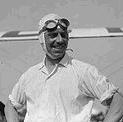
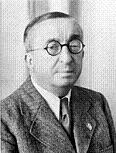

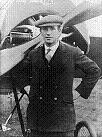



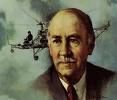


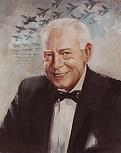
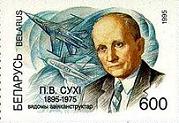



















TLW's Aerospace Historyscope (Aerospacescope™) |
By T.L. Winslow (TLW), the Historyscoper™ |
© Copyright by T.L. Winslow. All Rights Reserved. |
Original Pub. Date: Sept. 2, 2015. Last Update: Sept. 18, 2025. |





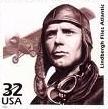
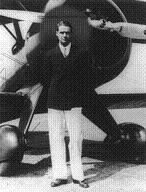

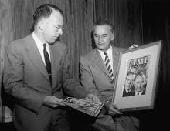
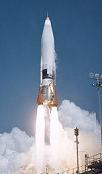



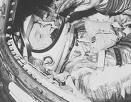


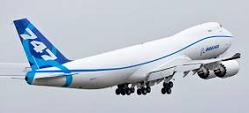
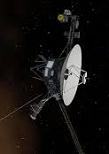
Westerners are not only known as history ignoramuses, but double dumbass history ignoramuses when it comes to Aerospace history. Since I'm the one-and-only Historyscoper (tm), let me quickly bring you up to speed before you dive into my Master Historyscope.
The earliest flying machines are recorded in legends, incl. the Greek legend of Daedalus and Icarus, the Hindu Vimana flying palace, Ezekiel's Chariot, and various Magic Carpet stories.

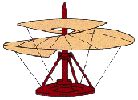
In 1483 Italian superbrain Leonardo da Vinci (1452-1519) invents the Parachute - works on both flat and round worlds, and might be useful if the edge of the Earth is reached? In 1487 he invents the tank, "which will enter the closed ranks of the enemy with their artillery, and no company of soldiers is so great that it will not break through them. And behind these our infantry will be able to follow quite unharmed and without any opposition"; no real tanks are fielded until WWI. In 1490 he describes Capillary Action after Veronese anatomist Marc Antonia Della Torre dies and he dissects 10 human bodies in the cellar of the Santa Spirito by candlelight to fulfill a vow to him. In 1493 he designs the Airscrew, the first flying machine, and leaves notes on the laws of friction and the horizontal water wheel (basis of the water turbine) in his Notebooks, finished in 1510 - all suggested by his sexual orientation?
About 1500 Chinese inventor Wan Hu allegedly devises a flying chair using 47 rockets, which explodes, killing him, becoming the world's first astronaut; Wan-Hoo Cramer on the Moon is later named after him.
In 1507 Italian-born John Damian attempts to fly by strapping on chicken-feather wings and jumping from the walls of Stirling Castle in Scotland; too late he remembers that chickens don't fly.

In 1522 German painter Albrecht Durer (Dürer) (1471-1528) designs a flying machine for use in war - you drive? In 1525 he pub. Manual on Geometry, the first one pub. in Germany.

On Nov. 8, 1637 after being inspired by sketches by Leonardo da Vinci, Greek man Arsenios Tselepis from Constantinople becomes the first man to fly using wings, taking off from the Galata Tower and landing in Dogancilar Square 2 mi. away; the Turks try a coverup, claiming he's a Muslim with the name Hezarfen ("expert in a thousand sciences") Ahmed Celebi.

In 1670 Italian scientist Giovanni Alfonso Borelli (1608-79), known for his experiments in biomechanics describes a mechanical bird with artificial wings, attempting to explain flight by means of an inclined plane.

In 1782 French papermaker brothers Joseph-Michel Montgolfier (1740-1810) and Jacques-Etienne (Étienne) Montgolfier (1745-99) of Annonay (near Lyons), France test their first small unmanned hot air balloon, made of paper filled with smoke.



Do you know the way to Hot Air Bay? On June 4, 1783 the Montgolfier Brothers Joseph-Michele Montgolfier (1740-1810) and Jacques-Etienne Montgolfier (1745-99) publicly demonstrate their paper-lined linen hot air balloon, which rises to a height of 3K ft. at Annonay, France in a 10-min. 1-mi. flight; on Aug. 27 Parisian physicist Jacques Alexandre Cesar (César) Charles (1746-1823) launches a 13-ft.-dia. silk balloon (constructed under his supervision by A.J. and M.N. Robert) filled with hydrogen in Paris in front of 50K spectators; it floats at 3K ft. for more than 45 min. and lands in a village 16 mi. away, where the spooked villagers attack it with stones and knives; on Sept. 19 the Montgolfier Brothers conduct another demo in Versailles, witnessed by Louis XVI and Marie Antoinette, where a duck, rooster, and sheep become the first living passengers, traveling 2 mi. in 8 min., with max. alt. of 1.5K ft, pissing the king off with the dense smoke they deliberately generate in the belief that it's what causes the buoyancy, later learning that it's heat; on Oct. 15 French daredevil physician Jean Francois Pilatre de Rozier (1754-85) makes the first tethered balloon ascension, repeating the demo on Oct. 17 before a group of scientists, then reaching 324 ft. on Oct. 19; on Nov. 21 (2 p.m.) champagne-toting de Rozier and army officer Marquis Francois Laurent le Vieux d'Arlandes (1742-1809) make the first untethered human flight, reaching a peak alt. of 500 ft. and traveling 5.5 mi. in 25 min. from the Bois de Boulogne in Paris in the presence of Louis XVI and a huge crowd, across the Seine River to the Butte-aux-Cailles; the next day Benjamin Franklin et al. sign the official certification at Passy; on Nov. 31 Jacques Charles (financed by Franklin) flies in his hydrogen balloon, while gouty Franklin watches from his carriage near the Tuileries Gardens; balloon exhibition flights soon become the rage in Paris; when asked what was the practical use of these balloon thingies, Franklin replies "What is the use of a newborn baby?"; the power of a mere individual to go over the king's head and attract large crowds is a giant leap for popular democracy, making the French In 1783 Jacques Charles makes and tests the first hydrogen-filled balloon, which is witnessed by Ben Franklin.


On Sept. 15, 1784 crowd-pleasing "daredevil aeronaut" Vincenzo Lunardi (-1806) of Lucca, Tuscany makes the first balloon ascent in England in front of a crowd incl. the Prince of Wales, taking a dog, cat, and pigeon with him as he travels 24 mi.; on Nov. 23, 1785 he wows Glasgow, Scotland.

On Jan. 7, 1785 the English Channel is first crossed (Dover to Calais) in a hot air balloon by Dr. John Jeffries (1745-1819) of Boston, Mass. and Jean-Pierre Francois Blanchard (1753-1809) of France (who made his first successful ascent on Mar. 2, 1784, a few mo. after Rozier on Nov. 21, 1783), entering the 18th cent. space race); Blanchard latter gives the first successful demonstration of a parachute by dropping a dog in a basket hooked to one; they have to ditch their ballast equipment and clothing to keep from landing in the water.

On Aug. 28, 1835 (Fri.) the first article in the Great Moon Hoax series by Richard Adams Locke (1800-71) (descendant of British philosopher John Locke) appears in the New York Sun, claiming that a new telescope has revealed that the Moon is inhabited by 4-ft.-tall flying man-bats along with unicorns and beavers; Edgar Allan Poe claims he was plagiarized.
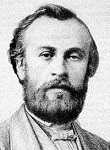
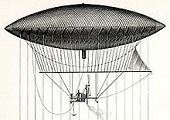
The first dirigible, combining balloons with engines? On Sept. 24, 1852 French engineer Baptiste Jules Henri Jacques Giffard (1825-82) launches the first successful engine-powered man-carrying dirigible; it is 144 ft. long and 39 ft. in diam., is inflated with 88 cu. ft. of coal gas, uses a steam engine and propeller, and flies 20 mi. from Paris to Trappe at up to 6.7 mph, becoming the first passenger-carrying airship.
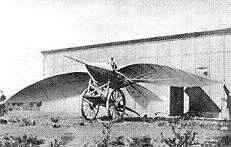
In 1856 after sailing around the world observing albatrosses, discovering the principle of aerodynamic lift, Concarneau, Brittany, France-born Jean Marie Le Bris (1817-72) tests his glider L'Albatros Artificiel (Artificial Albatross) on the beach in Sainte-Anne-la-Palud (Plonevez-Porzay, Finistere) after it is towed on a cart by a horse, rising to 100m over 200m, becoming the first recorded working heavier-than-air flying machine; in 1868 after receiving financial support from the French Navy he tests his Albatross II, which becomes the first flying machine to be photographed.
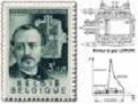



Fat whitey won't have to ride a horse much longer? In 1860 Jean Joseph Etienne Lenoir (1822-1900) of Luxembourg constructs the first practical internal-combustion engine, an 18 liter 1-cylinder 2-stroke mechanism burning coal gas and air and ignited by a "jumping spark" ignition system, producing 2 hp at 4% efficiency; he forms the Gauthier Co. to produce a 3-wheeled automobile, which, although noisy and unreliable causes Scientific American to pronounce the Steam Age at an end; by 1865 he builds 143 of them; meanwhile in 1863 he adds a carburetor; too bad, he fails to keep up with Nikolaus Otto et al. and his design becomes obsolete, and he dies broke. In 1862 German engineer Nikolaus August Otto (1832-91) patents a crude 2-stroke internal combustion gasoline engine with a carburetor based on the 1860 illuminating gas engine of Etienne Lenoir of Belgum; German entrepreneur Eugen Langen (1833-95) partners with him to found NA Otto & Cie, the world's first engine factory; the 1867 Paris World Exhibition awards the engine their grand prize; too bad, the factory goes bankrupt, and Eugen goes on to found the Deutz factory, which later becomes Kloeckner-Humboldt-Deutz (KHD), later renamed Deutz AG.


In 1869 Boston, Mass.-born Edward Everett Hale (1833-1909) pub. the short story The Brick Moon, becoming the first depiction of an orbiting space station.
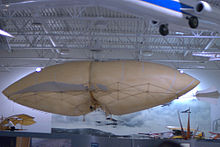
On July 2, 1869 after founding the Aerial Steam Navigation co. in 1866, English-born Am. inventor Frederick Marriott (1805-84) conducts a public test of his flying machine The Flying (Hermes) Avitor Jr., becoming the first powered flight of a heavier-than-air craft on the Am. side of the Atlantic, inventing the term "aeroplane", intending to build an airline to shuttle passengers between New York City and Calif. until the stock market crashes on Sept. 24, 1869.


In 1870 the shipping firm Mitsubishi Co. (Jap. "mitsu" + "hishi" = three + water chestnut or caltrop = rhombus) in Tokyo, Japan is founded by Iwasaki Yataro (1835-85), going on to expand into shipbuilding, coal mining, banking, insurance, aircraft and automobile manfacturing et al.

In 1871 Francis Herbert Wenham (1824-1908) of the U.S. invents the Wind Tunnel.

In 1883 the first Dirigible, a balloon powered by an electric motor is developed by brothers Albert Tissandier (1839-1906) and Gaston Tissandier (1843-99) of France.

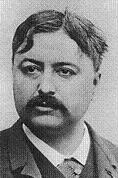

On Aug. 9, 1884 Arthur Constantin Krebs (1850-1935) and Charles Renard (1847-1905) pilot the electric-powered French army airship La France in Chalais Meudon near Paris, covering 8 km (5 mi.) in 23 min., becoming the first round-trip fully controlled takeoff and landing free-flight.

In 1884 Norwegian inventor Jens William Aegidius Elling (1861-1949) patents the first Gas Turbine, which produces 11 net hp; it takes until 1903 to build one that produces excess power.

On Oct. 9, 1890 Clement Ader (1841-1925) makes his first flight in his steam-powered fixed-wing aircraft Ader Eole in Satory, France, flying 50m (160 ft.) at a height of 20 cm., becoming the first takeoff of an airplane solely under its own power.

In 1894 German "Glider King" Karl Wilhelm Otto Lilienthal (1848-96) files for a patent on a triangle control frame hang glider, the Derwitzer, going on 2K+ flights and learning how to hover against a 10 mph updraft, inspiring the Wright Brothers; too bad, on Aug. 10, 1896 he hits a sudden downdraft, crashes, and dies in Berlin.

In 1895 Russian physicist Konstantin Tsiolkovski (1857-1935) discovers the principle of rocket reaction propulsion - impulse engines, Scotty?

On May 6, 1896 U. of Pittsburgh astronomer Samuel Pierpoint Langley (1834-1906) and his asst. Charles M. Manly (1876-1927) fly the steam-driven unmanned Aerodrome No. 5 model airplane over the Potomac River for 1,005m (3,297 ft.), followed by another run of 700m (2,300 ft.) at 25 mph, becoming the first mechanically-propelled heavier-than-air machines; on Nov. 28 Aerodrome No. 6 flies 1,460m (4,790 ft.), witnessed by Alexander Graham Bell, after which the U.S. govt. gives him $50K to develop the piloted Aerodrome A for aerial recon, which flies on June 18, 1901.

On May 17, 1897 County Clare, Ireland-born engineer John Philip Holland (1841-1914) and his Holland Torpedo Boat Co. of Elizabethport, N.J. launch the USS Holland (SS-1) (originally the Holland VI), a submarine with internal combustion engines for surface operation and electric motors for undersea operation, selling it to the U.S. Navy, becoming the first sub they formally commission; on Feb. 7, 1899 new owner Isaac Leopold Rice renames it the Electric Boat Co.; Holland resigns in Apr. 1904, after which the co. get into a scandal by selling submarines to the Japanese as well as the Russians, British, and Dutch; after WWII ends in 1945, the co. workforce shrinks from 13K to 4K by 1946; in 1946 it buys Canadair from the Canadian govt. for $10M, going on to win defense contracts from the Canadian govt.; on Apr. 24, 1952 it reorganizes as General Dynamics; in Mar. 1953 it purchases Convair, makers of the Atlas ICBM, becoming the #4 defense contractor on Earth by 2010.


The first great leap in powered flight in twenty years? On Nov. 3, 1897 an all-metal (aluminum) 135-ft.-long 46-ft.-diam. 3-prop dirigible powered by a 12 hp. Daimler engine, designed by Croatian Jewish inventor David Schwarz (1852-97) takes off from Berlin's Tempelhof Field and flies several mi. before the propeller belts break and it crashes; Schwarz had died on Jan. 31 from a heart attack after receiving a telegram from the German govt. offering to buy his invention; Count Ferdinand von Zeppelin, who witnesses the test buys the plans from his widow, and in 1898 he begins work on the zeppelin. On July 2, 1900 Konstanz, Baden-born German Count Ferdinand Adolf Heinrich August von Zeppelin (1838-1917) flies his first successful rigid-frame dirigible (Zeppelin) a distance of 3.5 mi. at 18 mph before its steering gear fails.
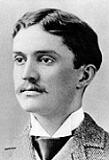
In 1898 Washington, D.C.-born engineer Edson Fessenden Gallaudet (1871-1945), son of Gallaudet U. founder Edward Miner Gallaudet builds a kite with the first warping-wing mechanism, going on to found the Gallaudet Engineering Co. in Norwich, Conn. in 1908, which test-flies an all-metal aircraft at Wright Field on June 20, 1923 before selling its assets in 1924.

On Oct. 19, 1899 17-y.-o. Worcester, Mass.-born New England teenie Robert Hutchings Goddard (1882-1945), fresh from reading H.G. Wells' 1895 novel "The War of the Worlds" climbs a cherry tree and gets his big inspiration to "make some device which had even the possibility of ascending to Mars", and devotes his life to making rockets, calling Oct. 19 his "anniversary day" - Millennium Fever works in reverse on a sci-fi fan? Right ideas, wrong world war? In 1914 he patents the Multi-Stage Rocket, and a rocket fueled with gasoline and liquid nitrous oxide. On Nov. 9, 1918 he demonstrates the first Bazooka at Aberdeen Proving Ground in Md. two days before the signing of the Armistice.

In Apr. 1900 Paris-born French oil magnate ("the Oil King of Europe") Henri Deutsch de la Meurthe (1846-1919) establishes the 100K-franc Deutsch de la Meurthe Prize for the first flying machine that makes a round-trip from Parc Saint-Cloud to the Eiffel Tower in Paris (6.8 mi.) (11km) in less than 30 min. while maintaining an avg. ground speed of 14 mph (22 km/h) at any time between May 1, 1900 to Oct. 1, 1903. In 1904 along with Ernest Archdeacon he creates the 50K-franc Grand Prix d'Aviation (Deutsch-Archdeacon Prize) for the first heavier-than-air flight in a circular 1km course, which is won on Jan. 13, 1908 by Henri Farman in a Voisin biplane in Issy-es-Moulineaux in 1 min. 28 sec.; on May 21, 1911 Deutsch makes his first airplane flight, which crashes, injuring him along with French war minister Maurice Berteaux at the start of the 1911 Paris-Madrid Air Race; in 1912-36 the annual 20K-franc Coupe Deutsch de la Meurthe speed race is held.

On July 2, 1900 Konstanz, Baden-born German Count Ferdinand Adolf Heinrich August von Zeppelin (1838-1917) flies his first successful rigid-frame dirigible (Zeppelin) a distance of 3.5 mi. at 18 mph before its steering gear fails.

On Aug. 14, 1901 Bavarian-born Gustave Albin Whitehead (Gustav Albin Weisskopf) (1874-1927) makes the first powered flight in his No. 21 aircraft in Fairfield, Conn., flying 0.5 mi. and reaching 50 ft. alt.; historians later dispute it and give the credit to the Wright Brothers. On June 5, 2013 the Conn. Senate passes a bill officially recognizing him as the first to fly.

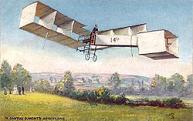
On Oct. 19, 1901 after failing on Aug. 8 with Santos-Dumont No. 5, which gets hung-up on the Trocadero Hotel, Brazilian-born Alberto Santos-Dumont (1873-1932) makes the first successful flight in a dirigible in his Santos-Dumont No. 5, rounding the Eiffel Tower in Paris and winning the Henri Deutch de la Meurthe Prize, making him a celeb.; on Oct. 23, 1906 he makes his first flight in his canard biplane Santo-Dumont14-bis at Bagatelle Field in Paris, France, becoming the first heavier-than-air machine takeoff and flight with official witnesses.



Here kitty kitty kitty? 12 sec. 120 feet? On Dec. 17, 1903 (10:35 a.m.) the Wright Brothers from Dayton, Ohio, incl. Wilbur Wright (1867-1912) and Orville Wright (1871-1948) make the first powered human flight of 120 ft. in 12 (13?) sec. on 90-ft. Kill Devil Hill near Kitty Hawk, N.C. on the Outer Banks (chosen for sand dunes and high winds) in Wright Flyer I, which is made of muslin, wood, and steel, and weighs 605 lb.; the wingspan of a Boeing 747 jumbo jet is 195.7 ft.; prior to this they achieved a 59-ft. flight in Bird of Prey; Orville won the 50-cent coin toss with heads and got to do the flying, after which they take turns; the pilot must crawl between the wings and fly in a prone position while the other opens the throttle of their homemade 12 hp. engine, and they make four flights at low altitudes, taking until 1905 to master controlled flight; later the same day Wilbur ups the record to 59 sec., covering 852 ft.; they had been coming to Kitty Hawk every year since 1900 testing their gliders; the Airplane Waltz is created as a novelty; meanwhile earlier in the year rivals Samuel Pierpont Langley (1834-1906) and Charles Manly (1876-1927) fail in two trials with their piloted plane, and run out of funding; later it is discovered that the plane worked, and was given inadequate room for takeoff - how could they sleep after that?

In 1905 the Aero Club of America is formed by Lowell, Mass.-born Charles Jasper Glidden (1857-1927) et al. to promote U.S. aviation, issuing the first U.S. pilot's licenses; in 1923 it becomes the Nat. Aeronautic Assoc.


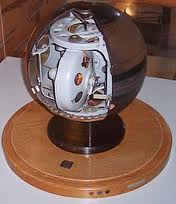
In 1905 Elmer Ambrose Sperry (1860-1930) of the U.S. and Hermann Franz Joseph Hubertus Maria Anschutz-Kaempfe (Anschütz-Kaempfe) (1872-1931) of Germany invent the Gyrocompass; in 1910 Sperry founds the Sperry Gyroscope Co. in Brooklyn, N.Y.; in 1914 Anschutz-Kaempfe sues Sperry for patent infringement and wins.
On June 15, 1907 Harper's Weekly features a cartoon about dirigible airships.

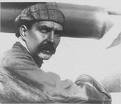


On Sept. 19, 1907 French Nobel Prize winning physiologist Charles Robert Richet (1850-1935) makes a successful ascent of about 2 ft. in a tethered aircraft with four biplane rotors in Douai, France, becoming the first successful helicopter, designed by Louis Charles Breguet (1880-1955) and his brother Jacques Breguet, and named the Gyroplane Laboratoire. On Nov. 13 French aviator Paul Cornu (1881-1944) makes a 6-ft.-high, 20 sec. free flight in a homemade tandem-rotor helicopter in Lisieux.
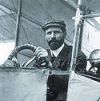

On May 29, 1908 French aviator Henri Farman (1874-1958) becomes the first pilot in Europe to take a passenger into the air. In 1909 Henri Farman completes the first 100-mi. flight, and his brother Maurice Farman (1877-1964) sets world air speed and endurance records.

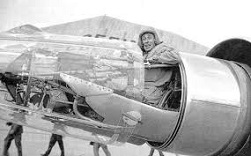
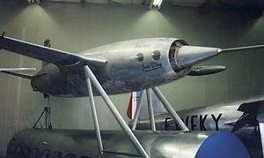
In 1908 French engineer Rene Lorin (1877-1933) patents the Ramjet; it is only good for subsonic speeds, and he never actually succeeds in making one work, allowing French engineer Rene Leduc (1898-1968) to get his supersonic ramjet patented in 1933, building the Leduc 0.10, the first ramjet aircraft, which makes its first flight on Nov. 19, 1946.

On June 25, 1909 Cambrai-born Frenchman Louis Bleriot (Blériot) (1872-1936) pilots a Type XI monopolane of his own design across the English Channel from Calais to Dover in 37 min. to win £1K from the Daily Mail for first flight over the Channel.


In 1909 the first Gordon Bennett Trophy for aviation in Reims, France, sponsored by New York Herald publisher James Gordon Bennett Jr. (1841-1918) is won by Glenn Hammond Curtiss (1878-1930) (who made the first officially-witnessed flight in North Am. on July 4, 1908), who achieves a speed of 75.27 km/h (46.77 mph); the 1912 race is the first with a winner who flies over 100 mph; the last race is held in 1920, with the winner reaching 168.73 mph. On June 8, 1911 Curtiss becomes the recipient of Aero Club of Am. pilot's license #1 in 1911, with Orville Wright getting #5 since they are awarded alphabetically. In 1914 the Am. Wright Co. wins a patent suit on airplanes against Glenn Curtiss, and next year Orville Wright sells his interest and continues to work as a consulting engineer. In 1916 Curtiss founds Curtiss Aeroplane and Motor Co. iin Buffalo, N.Y. to manufacture aircraft for the U.S. Army and U.S. Navy, pioneering seaplanes before WWI and dominating through WWII; he goes on to become "the Father of Naval Aviation"; in 1929 it merges with the Wright Co. to become Curtiss-Wright Corp., becoming the largest aircraft manufacturer in the U.S.
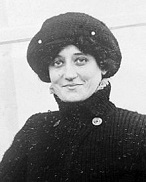
On Mar. 8, 1910 Baroness Elise Raymonde de Laroche (Deroche) (1882-1919) of France receives ticket #36, becoming the first licensed female pilot on Earth.
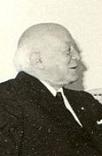
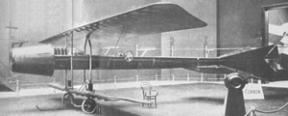
In Dec. 1910 Romanian inventor Henri Marie Coanda (1886-1972) makes his first and last flight in his experimental Coanda 1910 sesquiplane with a ducted fan driven by a piston engine and no propeller, crashing soon after takeoff; in 1965 he claims it had fuel combustion in the air stream and that he invented the jet airplane, causing Romania to celebrate the centennial of jet aircraft in 2010. In 1934 patents the Coanda Effect, the "deviation of a plain jet of a fluid that penetrates another fluid in the vicinity of a convex wall", i.e., the tendency of a fluid jet to be attracted to a nearby surface; it is later used for hovercraft.
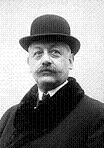
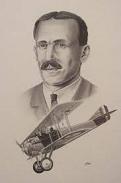
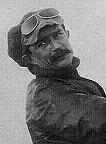
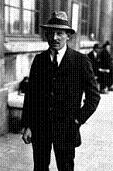
In 1910 after being wowed by Louis Bleriot's 1909 English Channel flight and ordering the construction of an airplane from the Society de Construction d'Appareils Aeriens (Société de Construction d'Appareils Aériens) that was exhibited in the windows of the Bon Marche store in Paris, SPAD (Société Pour L'Aviation et ses Dérivés) (originally Societe de Production des Aeroplanes Deperdussin) is founded in Laon, France by silk broker Armand Deperdussin (1860-1924), who hires Louis Bechereau (Béchereau) (1880-1970) as his chief engineer, then declares bankruptcy in Aug. 1913 and sells it to Bleriot Aeronautique in 1914; too bad, in 1913 Deperdussin is accused of bank fraud and forgery, is jailed in 1917-22, and commits suicide in 1924; meanwhile Jules Charles Toussaint Vedrines (Védrines) (1881-1919) wins the 1912 Gordon Bennett Tropy in Clearing, Ill. in a Deperdussin Monocoque with a speed of 105.4 mph (169.7 km/h) (first flight over 100 mph), and Lucien Maurice Prevost (Prévost) (1887-1948) wins the 1913 Gordon Bennett Trophy in Reims in a Deperdussin Monoque with a speed of 124.8 mph (200.8 km/h).

In 1910 Cologne, Germany-born Gustav Otto (1883-1926), son of internal combustion engine inventor Nikolaus August Otto founds Otto Flugmaschinenfabrik (originally Aeroplanbau Otto-Alberti) in Puchheim to manufacture powered aircraft made of wood, wire, and canvas, moving to Munich in 1911 before being taken over by the Bavarian govt. and reorganized as the Bayerische Flugzeugwerke AG on Mar. 7, 1916; German WWII ace Ernst Udet graduates from their flight school.
In 1910 French daredevil Henri Farman (1874-1958) flies 463 km (300 mi.) in 8.25 hours.

On Jan. 18, 1911 after taking off from Camp Selfridge in a Curtiss airplane, the first airplane ship landing takes place in San Francisco Harbor by Navy Lt. Eugene B. Ely (1886-1911) on the armored cruiser USS Pennsylvania, later renamed USS Pittsburgh; too bad, his plane crashes on Oct. 19 near Macon, Ga., killing him.


In 1911 after he buys the Wright Model B biplane from his friend Orville Wright (which is loaned to the U.S. Army for use as a scouting plane along the Rio Grande River border of U.S.-Mexico), the first Collier Trophy, created by Collier's Weekly publisher Robert Joseph Collier (1876-1918), pres. of the Aero Club of Am. for "the greatest achievement in aeronautics or astronautics in America, with respect to improving the performance, efficiency, and safety of air or space vehicles, the value of whic has been thoroughly demonstrated by actual use during the preceding year" is presented to Glenn H. Curtiss, with his name inscribed on the 525 lb. trophy.


In 1912 Jason Christian Ellehammer (1871-1946) of Denmak invents the Ellehammer Helicopter, the first helicopter capable of flight, based on C. Renard's articulated rotor blade of 1904 and G.A. Crocco's cyclic pitch control of 1906.

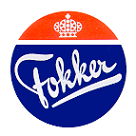
The original Meet the Fokkers? In 1912 aircraft designer Anthony (Anton Herman Gerard) Fokker (1890-1939) et al. found the Fokker Co. in Schwerin, Germany to manufacture aircraft; it moves to Netherlands in 1919, dominating the civil aviation market in the 1920s-1930s; in 1923 Fokker moves to the U.S., founding Fokker Aircraft Corp., which is merged into Gen. Motors Corp. in 1930 as the Gen. Aviation Manufacturing Corp., which in 1948 is divested by GM, merging with North Am. Aviation; on Mar. 15, 1996 it declares bankruptcy.

In 1912 Allan Haines Loughead (Lockheed) (1889-1969) and Malcolm Loughead (Lockheed) (inventor of hydraulic brakes in 1919) found the Alco Hydro-Aeroplane Co. in San Francisco, Calif.; in 1916 it becomes the Loughead Aircraft Manufacturing Co. in Santa Barbara, Calif.; in 1918 it debuts the Model F-1 flying boat, which sets a non-stop seaplane record by flying from Santa Barbara, Calif. to San Diego, Calif.; after its $2,500 Model S-1 monocoque aircraft proves too expensive, the co. goes bankrupt in 1921, then reopens in 1926 with new partners Jack Northrop and Kenneth Jay as the Lockheed Aircraft Co. in Hollywood, Calif., relocating in Mar. 1928 to Burbank, Calif., manufacturing the Vega in 1927, which becomes a favorite of Wiley Post and Amelia Earhart, along with the Model 10 Electra twin-engine airplane; in WWII it manufactures the Lockheed Hudson light bomber, and the P-38 Lightning twin-engine twin-boom fighter, which gains a monopoly in the U.S. military, while the secret Lockheed Aircraft Service Co. operates in Northern Ireland under the name Air Base Depot 3 (Langford Lodge); in 1995 it merges with Martin Marietta to form Lockheed Martin.


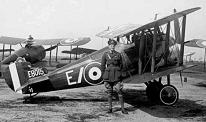
In June 1912 the Sopwith Aviation Co. is founded in Brooklands, England by Sir Thomas "Tommy" Octave Murdoch Sopwith (1888-1989), moving to Kingston upon Thames in Dec. after making their first military sale, going on to manufacture 18K aircraft with 5K employees during WWI incl. the Sopwith Bat Boat, Dolphin, Pup, Salamander, Snipe, Triplane, and 5,747 Sopwith Camels, moving in early 1918 to Ham; the 230 hp single-seat biplane Sopwith 7F.1 Snipe (first flight Oct. 1917) is the best fighter of WWI, being introduced a few weeks before the war's end then becoming the RAF std. single-seat fighter after the war, with 497 built by 1926; too bad, the Excess War Profits Duty causes his firm to go bankrupt, and in 1920 he founds Hawker Aircraft (H.G. Hawker Engineering) with test pilot Harry George Hawker (1889-1921), going on to manufacture the Hart and Demon.

On Apr. 16, 1913 the first Schneider Trophy (Prize) (Coupe d'Aviation Maritime Jacques Schneider) for seaplanes in Monaco is won by Lucien Maurice Prevost (Prévost) (1887-1952) in a Duperdussin Coupe Schneider at an avg. speed of 45.71 mph (73.56 km/h); after the British win in 1919 in a Sopwith Tabloid at 86.83 mph (139.74 km/h), it is suspended until 1919; the last race is held in 1931 in Calshot Split, England before 500K spectators, and is won by a Supermarine S.6B at 340.08 mph (547.31 km/h); since this is their 3-peat, the U.K. keeps the trophy.

On June 21, 1913 5'0" 85 lb. Oxford, N.C.-born "Doll Girl" Georgia Ann Thompson "Tiny" Broadwick (1893-1978) becomes the first woman to parachute from an airplane over Los Angeles, Calif., piloted by Glenn L. Martin, going on to become the first woman to parachute into water, and the first to jump free-fall, retiring in 1922 after making 1.1K jumps.


On Sept. 9, 1913 Russian army pilot Pyotr Nikolayevich Nesterov (1887-1914) flies the first air loop in a 70 hp Nieuport IV monoplane, followed on Sept. 21 by French army pilot Adolphe Celestin Pegoud Adolphe (Célestin Pégoud) (1889-1915) in a Bleriot Model XI monopolane, who also becomes the first pilot to make a parachute jump from an airplane; Nesterov goes on to found aerial aerobatics and become the first WWI fighter ace, ending up getting too brave and getting killed trying to ram an Austrian plane in WWI.
In 1913 the Naval Air Station Pensacola is founded in Pensacola, Fla. at the W end of the Fla. Panhandle, becoming the first in the U.S., giving the city the nickname "Cradle of Naval Aviation".

In 1913 French aviator Roland Garros (1888-1918) makes the first nonstop flight across the Mediterranean Sea from Frejus in S France to Bizerte, Tunisia.

In 1913 Kiev, Ukraine-born aviator Igor Ivanovich Sikorsky (1889-1972) designs Le Grand, the first 4-engine (multiengine) airplane, going on to make Clippers for Pan Am whiile tinkering with helis.
On July 18, 1914 the Aviation Section, U.S. Signal Corps is created by the U.S. Congress, with 44 officers, 224 men, and 23 aircraft; by Apr. 6, 1917 it has 1,218 men and 280 aircraft.


On Aug. 4, 1914 - Nov. 11, 1918 the horrific World War I causes 15M deaths and 39M military casualties. and destroys the Old Order of white formerly Christian Europe. On Feb. 26-28, 1915 the Germans first use a Flamethrower (Flame Projector) in the village of Douaumont, France near Verdun, becoming the first of 653 flamethrower attacks in the war. On Apr. 1, 1915 French aviator Roland Garros (1888-1918) becomes the first pilot to shoot down an aircraft using a deflector gear, which allows shooting through the propeller; after more Vs against German aircraft on Apr. 15 and Apr. 18, he is shot down and the Germans capture his plane, after which Dutch designer Anthony (Anton Herman Gerard) Fokker (1890-1939) clones then improves the deflector gear into the synchronization (interrupter) gear, mounting them on the new Fokker E.I. in Aug., beginning the Fokker Scourge as they shoot down nearly every enemy aircraft they encounter and generate the first German aces, incl. Max Immelmann; next year the French counter with the Nieuport 11 Bebe (Bébé), in which the gun is mounted on the top wing clear of the prop, and the British with the F.E.2b and D.H.2 (Feb. 1916), which mount the engine backwards with the prop in back, causing them to be called "pushers", ending the Fokker Scourge by spring 1917. In 1915 arsenic-based vomiting-sneeze gas Adamsite (DM) (diphenylaminechlorarsine) is synthesized by Heinrich Otto Wieland (1877-1958) of Germany; in 1918 Roger Adams of the 1918 duplicates it, and both sides stockpile it, but it is allegedly never used on the battlefield. On Mar. 22, 1916 the British have their first success with their new Depth Charge off the SW coast of Ireland, destroying a German U-boat. Are you used to Hell yet, try this? On Sept. 15, 1916 Winston Churchill's pet project the Tank (Russian Water Closet) (Char-Schneider) is first used by the Brits in the Somme.
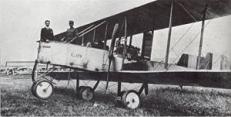

In Oct. 1914 the Italian 3-engine 4-crew twin-boom biplane Caproni Ca.1 heavy bomber, built by Giovanni Battista "Gianni" Caproni, 1st Count of Taliedo (1886-1957) makes its first flight, going on to increase the engines from 260 hp to 300 hp, delivering 166 aircraft to the Italian army between Aug. 1915-Dec. 1916; after the war some are rebuilt as 6-passenger Ca.56 airliners.

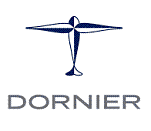
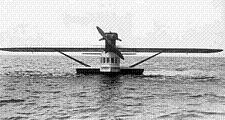
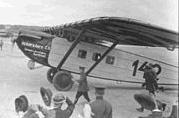
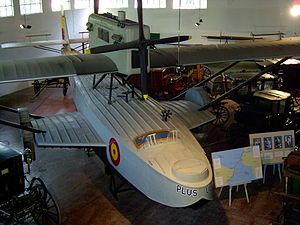
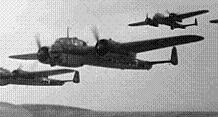
In 1914 Dornier Flugzeugwerke in Friedrichshafen, Germany is founded as Dornier Mettalbau by Kempten im Allgau, Bavaria-born Claudius (Claude) Honore Desire ( Honoré Desiré) Dornier (1884-1969); in 1922 it takes over the production facilities of Flugzeugbau Friedrichshafen, going on to manufacture all-metal flying boats and small airliners, getting around Treaty of Versailles restrictions by licensing to foreign manufacturers in Italy, Spain, Netherlands, and Japan until the Nazis come to power in 1933, incl. the single-engine all-metal high-wing monoplane Dornier Delphin I commercial flying boat (first flight 1920), Dornier Komet (Mercur) flying boat (first flight 1921), the twin engine Donier Do J (Do 16) Wal (Whale) flying boat (first flight Nov. 6, 1922), and the hard-to-hit Dornier Do 17 Flying Pencil light fast bomber (first flight Nov. 23, 1934); in 1996 it is acquired by Fairchild Aircraft, which goes bankrupt in 2002.


On Apr. 1, 1915 French aviator Roland Garros (1888-1918) becomes the first pilot to shoot down an aircraft using a deflector gear, which allows shooting through the propeller; after more Vs against German aircraft on Apr. 15 and Apr. 18, he is shot down and the Germans capture his plane, after which the Dutch Fokker Co. clones then improves the deflector gear into the synchronization (interrupter) gear, mounting them on the new Fokker E.I. in Aug., beginning the Fokker Scourge as they shoot down nearly every enemy aircraft they encounter and generate the first German aces, starting with Max Immelmann (1890-1916) (15 Vs), "the Eagle of Lille", inventor of the Immelmann Turn; next year the French counter with the Nieuport 11 Bebe (Bébé), in which the gun is mounted on the top wing clear of the prop, and the British with the F.E.2b and D.H.2 (Feb. 1916), which mount the engine backwards with the prop in back, causing them to be called "pushers", ending the Fokker Scourge by spring 1917.


In Dec. 1915 German engineer Hugo Junkers (1859-1935) builds the first all-metal fighter airplane, the Junkers J 1 AKA the Blechesel (Sheet Metal or Tin Donkey); its first flight is on Jan. 18; despite sheet steel construction, its sleek monocoque design gives it low drag, allowing it to reach speeds of 100 mph with a 120 hp Mercedes D II inline 6-cyl. engine; Junkers Aircraft (Junkers Flugzeug und Motorenwerke AG) (JFM), founded by Junkers in Dessau, Germany in 1895 to manufacture radiators and boilers goes on to produce planes for the Luftwaffe in WWII; meanwhile in 1933 the new Nazi govt. of Germany demands control of the patents and assets of J unkers Aircraft, and when founder Hugo Junkers balks, they take what they want in 1934 and place him under house arrest until his 1935 death.

On July 15, 1916 Detroit, Mich.-born timer magnate William Edward Boeing (1881-1956) founds the Boeing Co. (originally Pacific Aero Products) in Seattle, Wash.; it goes on to become one of the top global aircraft manufacturers and U.S. defense contractors; Chinese people love it because the word "boeing" sounds cool to them?
In Aug. 1916 the weekly mag. Aviation Week and Space Technology (originally "Aviation and Aircraft Journal") begins pub., changing to its current name in 1958.
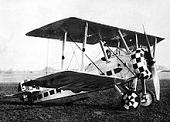
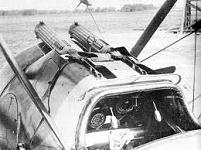
On Dec. 22, 1916 the rotary engine biplane 110 hp single-seat fighter Sopwith F.1 (Camel) AKA the Big Pup, with twin synchronized 7.7mm Vickers machine guns and a camel-hump-like metal fairing over the gun breeches, designed by Herbert Smith (1889-1977) makes its first flight, piloted by Harry Hawker at Brooklands, England, becoming the #1 Allied fighter plane, shooting down 1,294 enemy aircraft during WWI; it enters service next June with the No. 4 Squadron of the Royal Naval Air Service near Dunkirk, and scores it first kill on July 4.
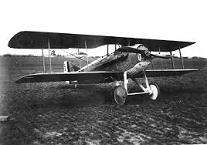

On Apr. 4, 1917 the SPAD S.XIII biplane fighter, designed by Louis Bechereau (Béchereau) (1880-1970) makes its first flight, becoming the top French fighter of WWI, with 8,472 built and orders for 10K more cancelled at war's end.
In 1917 Wilbur Wright Field near Riverside, Ohio is founded by the U.S. Army; it later becomes Area B of Wright-Patterson Air Force Base., housing the Nat. Museum of the U.S. Air Force.

In 1917 Lewis and Vought Corp. is founded by Long Island, N.Y.-born Chauncey Milton "Chance" Vought (1890-1930) and Birdseye Lewis, going on to produce the VE-7, the first plane to launch from a U.S. Navy aircraft carrier; in 1928 it is acquired by United Aircraft and Transport Corp., going on to produce carrier-based aircraft for the U.S. Navy; in 1954 it becomes independent, then in 1961 is purchased by Ling-Temco-Vought; in 1994 Northrop Grumman buys it for $130M; in 2000 the Carlyle

On Apr. 14, 1918 (a.m.) (Sun.) U.S. Air Service Lts. Alan Francis Winslow (-1933) and Douglas Campbell (1896-1990) of the 94th Aero Pursuit Squadron become the first Americans to down a German plane, two actually, over Gengoult Aerodrome near Toul, France in their Nieuport N.28s; on May 31 Campbell downs his 5th enemy aircraft, becoming America's first WWI ace; Winslow has his leg amputated and can't keep up?
On May 15, 1918 after intermittent experiments since 1911, the U.S. Post Office Dept. officially establishes its U.S. Airmail Service, with flights between Washington D.C. and New York City (later Philly); one round/day except Sun.
On May 24, 1918 the U.S. Army Air Service is established by two executive orders by Pres. Woodrow Wilson to replace the Aviation Section, Signal Corps; on Mar. 19, 1919 a military dir. is appointed to control all U.S. aviation activities (until July 2, 1926).

On Oct. 2, 1918 the $400 4-cylinder 40 hp Kettering Bug, the first unmanned aerial torpedo (cruise missile), capable of flying 75 mi. at 50 mph makes its first flight, invented by Am. inventor Charles Franklin Kettering (1876-1958); it is not used until WWII.

On Dec. 1, 1918 the Central Aerohydrodynamic Inst. (TsAGI) is founded in Moscow by Russian aviation pioneer Nikolai Yegorovich Zhukovsky (Joukovsky) (1847-1921), going on to produce the Yuriev-Cheremukhin TsAGI-1-EA, the first successful single lifting rotor helicopter in 1931-2.

On Feb. 6-11, 1919 a gen. strike in Seattle, Wash. shuts down the city and results in the arrests of Socialists and subversives, becoming the first gen. strike in the U.S.; on Feb. 6 The Union Record of Seattle carries an editorial with the headline "We are undertaking the most tremendous move ever made by labor in this country, a move which will lead - NO ONE KNOWS WHERE!", written by Neb.-born Anna Louise Strong (1887-1970), who goes on to become a strong supporter of Soviet and Chinese Communism; on Mar. 3 Boeing Aircraft founder William Boeing and Hubbard Air Transport owner Edward Hubbard fly 142 mi. from Vancouver, B.C., Canada to Seattle, Wash., delivering 60 letters along the way, becoming the first internat. airmail delivery; on Mar. 22 the first internat. airline service begins on a weekly schedule between Paris and Brussels - isn't that kind of like cheating?
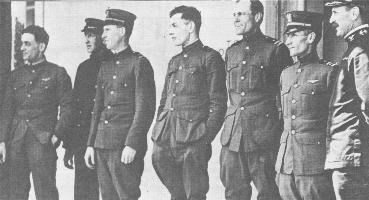
On May 8, 1919 the first transatlantic flight, three Liberty-powered U.S. Navy Curtiss NC-4 Flying Boats take off from Trepassy Bay, Newfoundland, arriving in Horta, Azores on May 16-17, then Ponta Delgada on May 20; one of them, NC-4, commanded by Lt. Cmdr. Albert C. Read and piloted by Walter Hinton reaches Lisbon on May 27.

On June 15, 1919 British Capt. Sir John William "Jack" Alcock (1892-1919) and Scottish aviator Lt. Sir Arthur Whitten Brown (1886-1948) take off from St. John's, Newfoundland, flying 1.9K mi. and landing in Clifden, Ireland on June 16 in 16 hours 27 min. in a Vickers-Vimy bomber with two 350 hp. Rolls-Royce engines, becoming the first nonstop transatlantic flight.

On Oct. 19, 1919 KLM (Koninklijke Luchtvaart Maatschappij) (Royal Dutch Airlines) is founded in Amsterdam, Netherlands as the nat. airline; in May 2004 it merges with Air France.
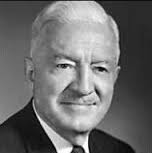
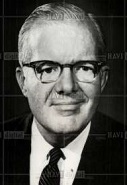
In 1919 Boston, Mass.-born Willard Frederick Rockwell Sr. (1888-1978) invents a new bearing system for truck axles, founding Rockwell Manufacturing Co., merging in 1953 with the Standard Steel Spring Co. to form Rockwell Spring and Axle Co.; in 1958 it is renamed Rockwell Standard Corp., becoming the world's largest manufacturer of automotive parts in the mid-1960s; in Sept. 1967 after his Boston, Mass.-born son William Frederick Rockwell Jr. (1914-92) takes over, it merges with North Am. Aviation of Los Angeles, Calif. to form North Am. Rockwell, and founds Rockwell Semiconductor, helping with the NASA Apollo space program and the NASA Space Shuttle program; in 1973 it acquires Collins Radio, which makes radios for the Apollo space program; in 1973 it merges with Rockwell Manufacturing to form Rockwell Internat., and acquires Admiral Radio and TV for $500M, reaching $6.3B/year sales in 1979; in 1996 after reaching $27B/year sales and 115K employees it merges with Boeing.

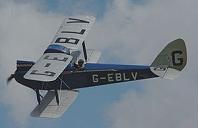
In 1920 the De Havilland Aircraft Co. Ltd. is founded in London, England by Sir Geoffrey de Havilland (1882-1965) (cousin of Hollywood actresses Olivia de Havilland and Joan Fontaine), going on to manufacture the 2-seat De Havilland DH.60 Moth biplane (first flight Feb. 22, 1925), which becomes the std. airplane for British recreation, and the De Havilland DH.83 Fox Moth 3-passenger biplane (first flight Jan. 29, 1932).
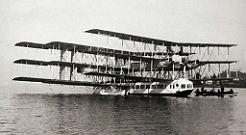
On Feb. 12, 1921 the bizarre 100-passenger 8-engine 9-wing (3 sets of 3) Caproni Ca.60 Transaereo Noviplano Capronissimo flying boat makes its first flight on Lake Maggiore, Italy; too bad, it crashes on its 2nd flight on Mar. 4, and is abandoned.
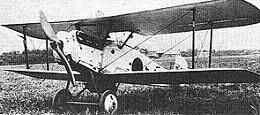
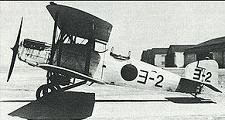
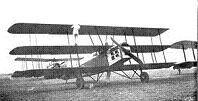
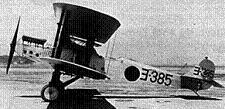
In Feb. 1921 shipping firm Mitsubishi Co. (founded 1870) of Nagoya, Japan invites British Sopwith Camel designer Herbert Smith (1889-1977) to help them establish an aircraft manufacturing div., going on to develop the Mitsubishi 1MF (Navy Type 10 Carrier Fighter) (first flight 1921), the Mitsubishi 2MR (Navy Type 10 Carrier Reconnaissance Aircraft) (C1M) recon aircraft (first flight Jan. 12, 1922), the Mitsubishi 1MT (Navy Type 10 Torpedo Bomber) (first flight Aug. 1922), and the Mitsubishi B1M (Navy Type 13 Carrier-Borne Aircraft) torpedo bomber (first flight 1923).
On Dec. 1, 1921 the first helium balloon, the dual-engine C-7 non-rigid Navy blimp makes its maiden flight from Hampton Roads, Va. to Washington, D.C.

In 1921 after receiving MIT's first degree in aeronautical engineering in 1914, Brooklyn, N.Y.-born Donald Wills Douglas Sr. (1892-1981) founds the Douglas Aircraft Co. in Santa Monica, Calif., building planes which perform the first circumnavigation of Earth in 1924, going on to pass rival Boeing Co. with its Douglas DC-3 and C-47 and gain 80% of the commercial aircraft market by 1941, only to be passed by Boeing in the jet age; in 1967 it merges with McDonnell Aircraft of St. Louis, Mo. to form McDonnell Douglas, then merges with Boeing in 1997.

On Feb. 21, 1922 the U.S. dirigible Roma crashes and burns in Norfolk, Va., killing Capt. Dale Mabry (b. 1891) and 33 others, becoming the worst U.S. aviation accident so far.
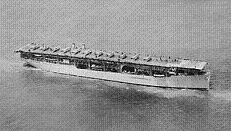
On Mar. 20, 1922 converted coal carrier USS Langley (CV-1) (originally commissioned Apr. 7, 1913 as USS Jupiter and renamed for Samuel Pierpont Langley) becomes the first aircraft carrier; on Oct. 17 Lt. Virgil C. Griffin takes off in his Vought VE-7 from it, launching the aircraft carrier era.
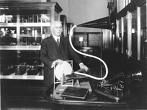
On July 16, 1922 German-born Jewish-Am. gramophone inventor Emile Berliner (1851-1929) and his son Henry Adler Berliner (1895-1970) demonstrate a working helicopter to the U.S. Army, consisting of a Nieuport 23 fighter aircraft fuselage with two horizontal rotors mounted on a truss, becoming the first working helicopter; in 1923 he adds triple wings as a backup; too bad, it never reaches an elevation higher than 15 ft.

On Oct. 20, 1922 Chicago, Ill.-born Army Air Service Lt. Harold Ross Harris (1895-1988) bails out of a crippled test plane at McCook Field in Dayton, Ohio, becoming the first member of the Caterpillar Club for those who have been saved by a parachute; Harris goes on to make the first flight by a U.S.pilot over the Alps from Italy to Franc4, invent crop-dusting, test the world's first pressurized aicrraft, rise to brig. gen. in the USAF, and become vice-pres. of Pan Am.

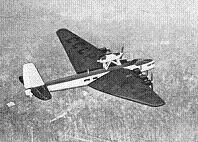
On Oct. 22, 1922 the secret Tupolev Co. (originally Tuoplev Design Bureau OKB-156) is founded in Fili, Moscow, Russia by Hugo Junkers to get around the Versailles Treaty, concentrating on R&D into all-metal aircraft; in 1925 he turns it over to Russian aerospace engineer Andrei Nikolayevich Tupolev (1888-1972), going oon to manufacture the ANT-4 twin-engine bomber (1925), the ANT-6 4-engine bomber (1932), and the 8-engine Tupolev ANT-20 Maxim Gorky (first flight May 19, 1934), which becomes the largest airplane of the 1930s and is used for propaganda. Too bad, on May 18,1935 an ANT-20 crashes during a 4-plane demo over Moscow, killing 45.

In 1922 Heinkel Flugzeugwerke is founded in Warnemunde, Mecklenburg-Worpommern, Germany by Ernst Heinkel (1888-1958), going on to produce bomber aircraft for the Luftwaffe in WWII and pioneer liquid-fueled rockets and turbojet-powered aircraft.

In 1922 Raytheon ("Gr. "light from the gods") Co. (originally the Am. Appliance Co.) is founded in Cambridge, Mass. by engineers Vannevar Bush (1890-1974) and Laurence K. Marshall, and scientist Charles G. Smith to produce refrigerators, switching to electronics, manufacturing a rectifier tube for radios that allows them to plug into the house current and eliminate batteries; in WWII it manufactures magnetron tubes; in 1945 it invents the microwave oven, manufacturing the Radarange microwave oven in 1947; in 1945 it acquires the Submarine Signal Co. (founded 1901) and goes into defense work.
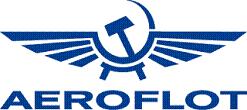
On Feb. 9, 1923 the Soviet Union founds Aeroflot (Russ. "air fleet"), which begins operations on July 15, becoming the world's largest airline.
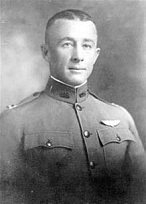
On May 2-3, 1923 Am. test pilots Lts. John Arthur Macready (1887-1979) and Oakley George Kelly (1891-1966) fly a single-engine Fokker T-2 nonstop from New York to San Diego (2.5K mi.) in 26 hours, 50 min., becoming the first nonstop transcontinental flight; on June 13, 1924 Macready becomes the first pilot to bail out of an airplane at night near Dayton, Ohio.
On May 23, 1923 Sabena, the nat. airline of Belgium is founded (until Nov. 7, 2001).
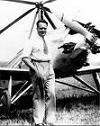
On June 9. 1923 Spanish engineer Juan de la Cierva y Codorniu (1895-1936) makes the first successful flight in a rotary wing autogiro (autogyro) aircraft in Madrid, using a normal airplane propeller instead of the fancy articulated rotor blade with cyclic pitch control.


In Oct. 1923 German airship pioneer Dr. Hugo Eckener (1868-1954), lead of the Luftschiffbau Zeppelin flies his ZR-3 dirigible from Friedrichshafen, Germany across the Atlantic to Lakehurst, N.Y. for deliverty to the U.S. Navy, which names it USS Los Angeles, becoming the largest airship in the world; ;it is commissioned next Nov. 25; it flies 5K mi., the longest Zeppelin flight to date; it is decommissioned on June 30, 1932 at Lakehurst, N.J.

In 1923 Consolidated Aircraft Corp. is founded in Buffalo, N.Y. by Montesano, Wash.-born Reuben Hollis Fleet (1887-1975) (founder of the first airmail service between New York City and Washington, D.C. in 1918) from the liquidation of Gallaudet Aicraft Co. and designs from Gen. Motors' defunct Dayton-Wright Co., going on to manufacture flying boats, incl. the PBY Catalina and B-24 Liberator.


In 1923 Frankfurt am Main-born aircraft designer Wilhelm Emil "Willy" Messerschmitt (1898-1978) founds an aircraft factory in Augsburg, Germany, going on to produce the Messerchmitt M17 and Messerschmitt M18 sports aircraft until 1927, when the Bavarian govt. forces a merger between Bayerische Flugzeugwerke AG and Otto Flugmaschinenfabrik and makes him chief engineer, starting out on the wrong foot with the Messerschmtt M20 light transport in 1928, which gets into serious crashes that kill a close friend of Lufthansa head Erhard Milch and causes the co. to go bankrupt in 1931, only to be resurrected by the Nazis in 1933, and in 1934 he designs the Messerschmitt BF 109 fighter aircraft, of which 35K are eventually built, giving the German Luftwaffe its prized toy.

In 1923 Romanian-born German physicist Hermann Julius Oberth (1894-1989) coins the term "space station" in his dissertation "By Rocket into Planetary Space", which is rejected, causing him to utter the soundbyte: "Our educational system is like an automobile which has strong rear lights, brightly illuminating the past, but looking forward, things are barely discernible." In 1923 he pub. By Rocket Into Planetary Space, which is expanded in 1929 into Ways to Spaceflight; modern astronautics is born.

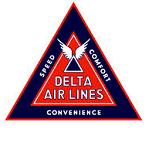
On May 30, 1924 the first airplanes designed for crop dusting are flown in the Mississippi Delta by Collett Everman Woolman (1889-1966) of Macon, Ga., who sprays calcium arsenate powder to control pesky boll weevils, then goes on to expand into cargo and passenger service, moving to Monroe, La. in 1925, purchasing Huff Daland on Sept. 13, 1928, and founding Delta Air Lines, expanding E to Atlanta, Ga. and W to Ft. Worth, Tex. in 1930, only to go bankrupt after the Post Office awards their route to Am. Airlines, then being resurrected after Congress enacts the 1934 U.S. Air Mail Act; in 1941 it moves its HQ from Monroe, La. to Atlanta, Ga.

In 1924 English scientist sir Edward Victor Appleton (1892-1965) utilizes short wavelength radio waves (shortwaves) to penetrate the Heaviside (E-Layer) in the upper atmosphere at about 100 km, proving the existence of the ionosphere, winning him the 1947 Nobel Physics Prize; radar is born.


In 1924 Walter Herschel Beech (1891-1950) and Clyde Vernon Cessna (1879-1954) found Travel Air Manufacturing Co. in Wichita, Kan., turning the town into a leading aircraft manufacturer; they part ways in 1927.


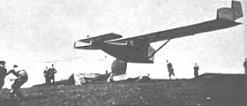
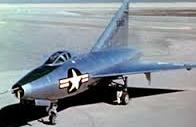
In 1924 the Rhon-Rossitten (Rhön-Rossitten) Gesellschaft (RRG) in Darmstadt, Germany is founded by "the Father of German Gliding" ("the Rhon Father") ("Rhönvater") Carl Oskar Ursinus (1877-1952) as a German nat. gliding org. to get around the Treaty of Versailles' prohibition of powered flight in Germany, which is partially lifted in 1925; on June 11, 1928 the tail-first Lippisch Ente (Duck), designed by Munich, Germany-born aerodynamics pioneer Alexander Martin Lippisch (1894-1976) becomes the first aircraft to fly under rocket power; in 1931 Lippisch's Delta I becomes the first tailless delta wing aircraft to fly, causing four more models to be built by 1939; in 1933 the Nazis nationalize it, renaming it the Deutsche Forschungsanstalt fur Segelflug, going on to produce the DFS 194 rocket-powered plane (first flight 1940), forerunner of the Messerschmitt Me 163 rocket plane; on June 9, 1948 after Lippisch emigrates to the U.S. at the end of WWII, bringing his ideas with him, the Convair 7002 becomes the first jet-powered delta-wing aircraft to fly.
On Feb. 2, 1925 the U.S. Contract Air Mail (Kelly) Act of 1925 is passed by the U.S. Congress, freeing the airmail service from total control by the U.S. Post Office, providing for fixed airmail rates and subsized contractors, who have a 4-year bidding period to begin smaller feeder routes; the first set of contracts are awarded to Colonial Air Transportation, Nat. Air Transport, Robertson Aircraft Corp., Western Air Express, and Varney Air Lines; next June 3 an amendment is passed changing the subsidy to $3/lb. of mail for the first 1K mi., and 30 cents/lb. for each 100 mi. thereafter.
In Apr. 1925 Pratt & Whitney Aircraft Co. is founded in East Hartford, Conn. to produce the air-cooled radial 425 hp R-1340 Wasp aircraft engine, which is purchased by the U.S. Navy next year, its performance and reliability revolutionizing Am. aviation, becoming a favorite with Wiley Post, Amelia Earhart et al.

In Sept. 1925 three U.S. Navy flying boats fail to reach Hawaii from Calif.; Col. William Lendrum "Billy" Mitchell (1879-1936) ("Father of the U.S. Air Force"), former brig. gen. in command of AEF aviation in WWI (angling to get a U.S. Air Force established independent of the other branches) issues the statement: "These accidents are the result of the incompetency, criminal negligence, and almost treasonable administration of the national defense by the War and Navy Departments", and is court-martialed for it, then tried before 9 generals (any of them Air Force gens.?) in Washington, D.C. from Oct. 28-Dec. 17 in a sensational trial, where he puts the Army on trial for having only 59 modern planes fit for duty and running a chickenshit outfit; Mitchell is found guilty on all counts on Dec. 17, only Maj. Gen. Douglas MacArthur dissenting, and suspended from duty and pay for five years, causing him to resign next Feb. - play the misty hero music?
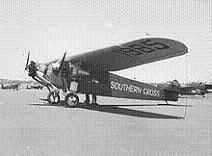
In 1925 the Fokker F.VII Trimotor airliner makes its first flight, going on to capture the airliner market incl. 40% of the U.S. market by 1936.

On Mar. 16, 1926 (Tues.) after 25 years of work since his big inspiration of Aug. 19, 1899, Worcester, Mass.-born U.S. physics prof. Robert Hutchings Goddard (1882-1945) makes the first successful test of the liquid fuel rocket named Nell at Aunt Effie's farm in Auburn, Mass., with it landing in a cabbage field after rising 41 ft. in 2.5 sec.; his first tests were in Sept. 1921; after another launch in July 1929 gets nat. publicity, Charles Lindbergh takes up his cause, attempting to get investors interested, only to run up against the Oct. 1929 Stock Market Crash, but luckily Daniel Guggenheim invests $100K and he's up and away, moving to Roswell, N.M. in 1930, after which Wernher von Braun of Germany copies his plans and begins building his A-1 and A-2 prototype rockets in the early 1930s; the Mass. launch site later becomes part of a golf course fairway - he moves to Roswell to get technical advice from ETs?
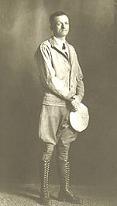
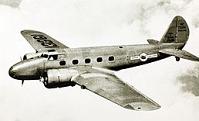
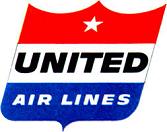
On Apr. 6, 1926 Varney Air Lines is founded in Boise, Idaho by Walter Thomas Varney (1888-1967) after chief pilot Leon Dewey "Lee" Cuddeback (1898-1984) flies the first contract air mail flight in a Swallow J-5 biplane from Boise to/from Pasco, Wash. on Apr. 5-6; in 1927 William Boeing forms Boeing Air Transport, merging with Pratt & Whitney in 1929 to form United Aircraft and Transport Corp. (UATC), which provides coast-to-coast mail service, expanding to passenger service in Mar. 1930 and acquiring Varney Air Lines, Pacific Air Transport, and Nat. Air Transport; in 1933 it begins operating a fleet of Boeing 247 all-metal airliners (first flight Feb. 8, 1933) that make the transcontinental U.S. flight in a record 20 hours, causing the U.S. govt. to consider it a monopoly, after which in May 1934 UATC is broken up into United Aircraft, Boeing Airplane Co., and United Airlines.
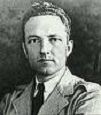
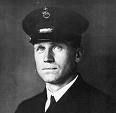
It's a Byrd, it's a plane? On May 8-9, 1926 U.S. Navy Lt. cmdr. Richard Evelyn Byrd (1888-1957) and co-pilot Floyd Bennett (1890-1928) fly a trimotor Fokker, the Miss Josephine Ford from Kings Bay, Spitsbergen over the North Pole and back in 15.5 hours, becoming the first polar flight, receiving a Hubbard gold medal from Pres. Coolidge for "valor in exploration"; Bennett is chosen to fly Byrd over the South Pole, but injuries prevent him; on May 9, 1996 Ohio State U. announces the discovery of his diary, leading one specialist to conclude that Byrd fell short of his destination - and the man living with you is not your husband?
On July 2, 1926 the U.S. Army Air Corps (USAAC) is established from the U.S. Army Air Service; it becomes inactive on Mar. 9, 1942, and is disbanded on Sept. 18, 1947.
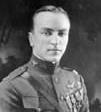
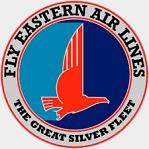
In 1926 Eastern Air Lines is founded as Pitcairn Aviation, which gains a monopoly on airmail routes between New York City and Atlanta, Ga.; in 1929 North Am. Aviation buys it, changing the name in 1930 to Eastern Air Transport; in 1933 Gen. Motors buys it, changing the name in 1934 to Eastern Air Lines; in 1938 it is purchased by WWI flying ace Edward Vernon "Eddie" "Rick" Rickenbacker (1890-1973), gaining a monopoly between New York City and Fla., and building a fleet of faster airliners incl. the 4-engine Lockheed Constellation and the Douglas DC-4; too bad, he balks at buying expensive newfangled jet aircraft, allowing other airlines to pass them up, and suffers from govt. subsidies given to rival airlines; after labor troubles it ceases operations on Jan. 18, 1991.
In 1926 the first 2-way phone conversation is held over the Atlantic.
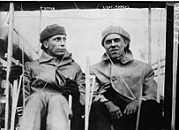
In Mar. 1927 John Rodgers Airport in Honolulu, Oahu, Hawaii opens, named after WWI naval officer John Rodgers (1881-1926) (who led an attempted non-stop flight from Calif. to Hawaii in 1925), becoming the first full airport in Hawaii; after the 1941 Pearl Harbor attack, the name is changed to Naval Air Station Honolulu; in 1947 it is renamed Honolulu Airport; in 1951 it becomes Honolulu Internat. Airport, becoming the 3rd busiest aiport in the U.S. by 1950, with the longest runway in the world (13,097 ft. or 3,992m) in 1953; in summer 1959 Qantas begins the first jet service to Honolulu on its flights from Australia to Calif.; on May 30, 2017 it becomes Daniel K. Inouye Internat. Airport.

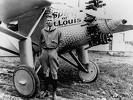



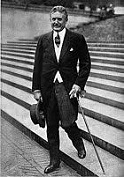




Think of all those hard sea journeys over the Pond made into jokes by one white barnstormer? On May 20-21, 1927 (Fri.-Sat.) after U.S. aeronautics official (asst. commerce secy. since Aug. 11, 1926) William P. MacCracken Jr. (1889-) (who was issued federal pilot license #1 on Apr. 6 after Orville Wright declines) comes close to grounding him for reckless flying for four bailouts and crackups in his barnstorming and mail delivery days, and after coaching by naval aviator Richard E. Byrd (1888-1957), lily-white straight Christian church-going male Charles Augustus Lindbergh (1902-74) (sponsored by a St. Louis newspaper) becomes the 118th person to cross the Atlantic by air and the first person to cross it solo in the W-E direction in the Spirit of St. Louis (AKA the Ryan NYP for New York to Paris), built by Ryan Airlines in San Diego, Calif., founded by Tubal Claude Ryan (1898-1982) from Roosevelt Field in Long Island, N.Y. to Paris (Orly Airport) in 33.5 hours, where he is greeted by an enthusiastic crowd, and received by U.S. ambassador (former Ohio Repub. gov. in 1904-6) Myron Timothy Herrick (1854-1929); he and his plane return home from France on the cruiser (commissioned in Feb. 1925) USS Memphis, arriving on June 11; on June 13 he is honored with a ticker tape parade in New York City; a check for $25K dated June 17 is presented to him by Bryant Park Bank of New York City, representing the $25K Orteig Prize offered since 1919 for the first nonstop Paris-NY flight in either direction by French-born New York City hotel owner Raymond Orteig (1870-1939) via the Aero Club of Am.; he is the 67th person to fly the Atlantic, the previous ones by dirigibles and twin-engine mail planes (81 incl. passengers); nobody flies solo in the harder against-the-wind W-E dir. until 1932; the Lindy Hop dance craze is born in Harlem, N.Y. at the Savoy Ballroom with black inventor "Shorty" George Snowden and his foot-taller black partner ("I like them small your honor, and the reason is") Big Bea; Clarence Duncan Chamberlin (1893-1976) might have done it first in his Wright-powered Bellanca monopolane Columbia, but its owner Charles Albert Levine (1897-1991) is tied up in court with an injuction filed by the former navigator, causing him on May 21 to announce that his plane will fly farther into Europe and carry a passenger, himself, and they leave from Roosevelt Field in Long Island on June 4, flying nonstop to Eisleben, Germany on June 6 (3,911 mi. in 42 hours 31 min.) after running out of fuel 43 mi. short of the goal of Berlin - it would have to be a Jew jokes here?
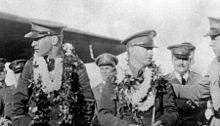
On June 27, 1927 (7:00 a.m.) USAAF Lts. Lester James Maitland (1899-1990) and Alfred Francis Hegenberger (1895-1983) takeoff in the Bird of Paradise from Oakland, Calif., arriving 25 hours 50 min. later on June 29 at Wheeler Field in Oahu, Hawaii, setting a long distance record of 2,407 mi. and becoming the first to make the transpacific crossing to Hawaii, getting Maitland invited to meet Pres. Coolidge in the White House next year along with Charles Lindbergh.
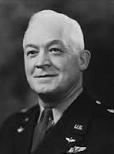


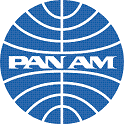
On Oct. 19, 1927 Pan American (Pan Am) Airways (founded Mar. 14) by Air Corps. Maj. Henry Harley "Hap" Arnold (1881-1950), Maj. Carl Andrew Spaatz (1891-1974) et al. begins airmail service between Cuba and Key West, Fla.; pilot Cy Caldwell uses his private plane for the first day to save the airline, whose own planes can't start until Oct. 20; next June 23 Pan Am merges with Aviation Corp. of th Americas (ACA), founded on June 2 by Juan Terry Trippe (1899-1981) with backing by Cornelius Vanderbilt Whitney and W. Averell Harriman, Am. Internat. Airways (AIA), founded in 1926 by John K. Montgomery and Richard B. Bevier, and Atlantic, Gulf, and Caribbean Airways, founded on Oct. 11 by Richard Hoyt, with Trippe as CEO, gaining a monopoly on U.S.-based routes through C and S Am., becoming known for its Blue Meatball globe logo, use of the word "Clipper" in aircraft names and call signs, and white pilot caps, becoming the unofficial overseas flag carrier of the U.S. - aircraft mechanics are demand, if you love horsepower and speed?
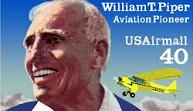
In 1927 Piper Aircraft Inc. (originally Taylor Brothers Aircraft Manufacturing Co.) is founded in Rochester, N.Y. by Clarence Gilbert Taylor and Gordon A. Taylor (-1928), moving to Bradford, Penn. after investment by a group incl. Lock Haven, Penn.-born Harvard U. grad William Thomas Piper Sr. (1881-1970), who buys the entire co. in 1930 at a bankruptcy sale for $761, who renames it after himself in 1937, producing the low-cost private E-2 Cub airplane, becoming "the Henry Ford of Aviation", moving to Vero Beach, Fla. in 1961.
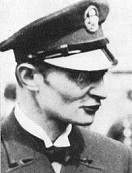


On Apr. 12-13, 1928 the first E-W transatlantic air crossing is made by Baron Ehrenfried Gunther von Huenefeld (Hünefeld) (1892-1929), German Capt. Hermann Koehl (Köhl) (1888-1938), and Irish Capt. James Michael Christopher Fitzmaurice (1898-1965), who take off from Dublin for New York City in the single-engine all-metal Junkers monoplane Bremen; 37 hours later after going 6,750 km. they crash on Greely Island in Labrador, and are rescued.

On May 24-25, 1928 Mexican aviator hero ("the Lindbergh of Mexico") Capt. Emilio Carranza (b. 1905) sets a record for the rd longest non-stop solo flight by flying 1,875 mi. (3K km) from San Diego, Calif. to Mexico City in 18.5 hours; too bad, on July 12 he dies in a plane crash in a thunderstorm in the Pine Barrens of N.J. en route from Long Island to Mexico City.
On Oct. 1, 1928 Hangar 1, named for real estate agent William W. Mines, the first modern air terminal in Los Angeles, Calif. is constructed on Mines Field in S Westchester, opening in 1930 as the beginning of Los Angeles Internat. Airport (LAX) (originally Los Angeles Municipal Airport, then Los Angeles Airport in 1937-49), which is purchased by the city of Los Angeles in 1937.

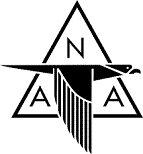
On Dec. 26, 1928 North American Aviation is founded in Dundalk, Md. by Ont., Canada-born financier Clement Melville Keys (1876-1952) as an airline holding co.; after the 1934 U.S. Air Mail Act forces it to break up, it goes into manufacturing of observation and training aircraft, led by Douglas Aircraft Co. engineer James Howard "Dutch" Kindelberger (1895-1962), with HQ in Los Angeles, Calif.; in 1933 Gen. Motors Corp. (GMC) acquires it, starting out with the GA-15 observation plane (first flight 1934) and the GA-16 trainer, followed by the North American T-6 Texan trainer (first flight Apr. 1, 1935), the O-47 (first flight Nov. 1935), and BT-9 (GA-16) (first flight Apr. 1936); in 1936 it tests the North American BC-1, its first combat aircraft, based on the GA-16.
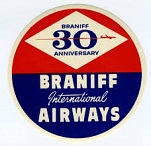
In 1928 Braniff Internat. Airways is founded (until 1982) by insurance salesman Thomas E. Braniff and his brother Paul Revere Braniff(1897-1954) as Tulsa-Oklahoma City Airways, changing its name to Braniff Airways in 1930 and expanding throughout the midwest U.S., followed by the SW U.S., South Am., and Panama, later expanding to Asia and Europe; it ceases operations on May 12, 1982. Watch video.
On Jan. 30, 1929 Inter-Island Airways is founded in Honolulu, Hawaii by Inter-Island Steam Navigation Co., beginning operations on Oct. 6 with sightseeing flights over Oahu, followed on Nov. 11 by a flight to Hilo with stops on Molokai and Maui, changing its name on Oct. 1, 1941 to Hawaiian Airlines, becoming the largest airline in Hawaii, and the 8th largest commercial airline in the U.S., enjoying a record free of fatal accidents or hull losses until ?.

On Sept. 30, 1929 Fritz von Opel (1899-1971) of Germany, grandson of Opel Co. founder Adam Opel makes the first rocket engine flight in the RAK 1 in Frankfurt am Main, staying aloft for 75 sec. and covering nearly 2 mi., earning the nickname "Rocket Fritz".
On Oct. 8, 1929 a newsreel and two cartoons are shown on a Transcontinental Air Transport plane; a first?

On Dec. 6, 1929 Leroy Randle "Roy" Grumman (1895-1982) et al. found Grumman Aeronautical Engineering Co. in Long Island, N.Y.; it is acquired in 1994 by Northrop Corp. to form Northrop Grumman.
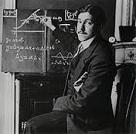

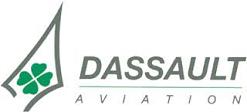
In 1929 Dassault Aviation in France is founded by Paris-born French Jew Marcel Dassault (Bloch) (1892-1986), who invented a new type of aircraft propeller used by the French army in WWI; in 1936 the Communist Front Populaire nationalizes it; too bad, after the Nazi takeover of France, he is deported to Buchenwald Camp, but survives the war and builds the co. to the #1 military aircraft manufacturer in France, changing his name to Dassault after "char d'assault" (battle tank), and converting to Roman Catholicism in 1950.


In 1929 Am. designer Norman Bel Geddes (1893-1958) designs the amphibian Airliner Number 4, with nine decks that have room for deck games, gymansium, solarium, an orchestra, and two airplane hangers; too bad, it costs $9M so it is never built.
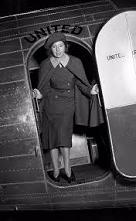
On May 15, 1930 RN Ellen Church (1904-65) and seven other "sky girl" nurses take off on their maiden Boeing flight from San Francisco to Chicago, becoming the first modern stewardesses, er, flight attendants - coffee, tea or what?
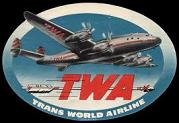
On July 16, 1930 Trans World Airlines (TWA) (originally Transcontinental and Western Air) (T&WA) is created via the forced merger of Western Air Express (founded 1925 by Charles Lindbergh et al.) and Transcontinental Air Transport (founded 1928 by Clement Melville Keys) by U.S. postmaster gen. Walter Folger Brown to service airmail contracts, with the slogan "The airline run by flyers";


Vaginas shouldn't be allowed to fly themselves? In 1930 Anne Morrow Lindbergh (1906-2001) becomes the first U.S. woman to get a glider pilot's license; meanwhile Amy Johnson (1903-41) of England obtains a pilot's license and flies solo from London to Australia in 19.5 days, setting a world record for solo flight from London to India (6 days).
In 1930 Olympic Airlines is founded in Greece.
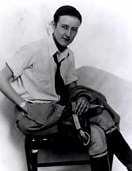
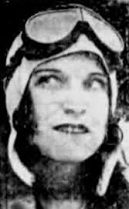
On Jan. 9, 1931 Evelyn "Bobbi" Trout (1906-2003) and washed-up silent film actress Edna Mae Cooper (1900-86) return to Los Angeles, Calif. in their monoplane after flying a continuous 122 hours 50 min.
On Mar. 31, 1931 TWA Flight 599 en route from Kansas City, Mo. to Los Angeles, Calif. crashes in the prairie in Chase County, Ky., killing Notre Dame U. football coach Knute Rockne and seven others; after the accident is traced to structural failure caused by wood rot, all Fokker aircraft in the U.S. are grounded, resulting in extensive improvements in airplane and airline safety, and the demise of wood-structured aircraft.

On May 27, 1931 Swiss-Belgian scientist Auguste Piccard (1884-1962) and his asst. Charles Knipfer ascend in a balloon from Augsburg, Germany, reaching a height of 51,793 ft. in a 17-hour flight, landing on a glacier near Innsbruck, Austria, becoming the first human flight into the stratosphere; temps of -76 F are recorded; next year he tries again, reaching 55,577 ft.


On June 23, 1931 Van Zandt County, Tex.-born aviator Wiley Post (1898-1935) (who wears a patch over his left eye, which he lost in a 1926 oilfield accident), and Tasmanian-born Harold Charles Gatty (1903-57) take off from Roosevelt Field, Long Island on the first round-the-world flight in the single-engine plane Winnie Mae (Lockheed Model 5C Vega), and return on July 1 after travelling 15,474 mi. in 8 days 15 hours 51 min. and making 14 stops in Newfoundland, England, Germany, the Soviet Union, Alaska, Alberta, and Cleveland, shattering Hugo Eckener's icky 1929 Graf Zeppelin record of 21 days; the reception rivals Lindbergh's, and they lunch at the White House on July 6 and get a ticker-tape parade in New York City on July 7.


On June 27, 1931 Ukrainian-born Igor Ivanovich Sikorsky (1889-1972) files U.S. patent 1,994,488 for the technology behind the helicopter. On May 13, 1940 he makes the first free flight in the Vought-Sikorsky VS-300, giving the U.S. heli power.
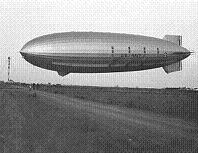
On Aug. 8, 1931 the helium-filled dirigible USS Akron (ZRS-4) is launched by First Lady Lou Henry Hoover at a ceremony attended by 150K, becoming the first flying aircraft carrier, carrying F9C Sparrowhawk fighter planes; too bad, a thunderstorm off the coast of N.J. on Apr. 4, 1933 causes it to crash, killing 73 of 76 passengers and crew, becoming the largest loss of life an an airship crash (until ?).
In 1931 the first full-scale (30 ft. x 60 ft.) Wind Tunnel is built in Langley Research Center in Va.
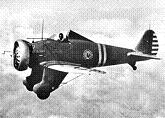
On Mar. 20, 1932 the $14K Boeing P-26 "Peashooter" makes its first flight, becoming the first all-metal production fighter aircraft and first pursuit monoplane used by the U.S. Army Air Corps; 151 are built by 1956.
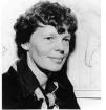

On May 20, 1932 Atchison, Kan.-born freckle cream-using coffee-hating Amelia Earhart (1897-1937) takes off from Harbor Grace, Newfoundland for Ireland in a Pratt & Whitney Wasp-powered Lockheed Vega to become the first woman to fly solo across the Atlantic, and arrives in approx. 15 hours on May 21, becoming the first woman to receive the Distinguished Flying Cross - no ticker tape parade? On May 20, 1937 Amelia Earhart (b. 1897) leaves Oakland, Calif. on a round-the-world airplane trip in a twin-engine Lockheed Electra, and wanting to make like a Soviet census figure, she disappears with partner Frederick Joseph "Fred Noonan (b. 1893) after taking off from Lae, New Guinea on July 2 on a 2,550-mi. leg headed for 2 mi. x .5 mi. Howland Island (last stop before Hawaii); on takeoff her radio antenna rips off, so she can transmit but not receive; Coast Guard cutter USS Inca II (launched 1911) has the last communication with her on July 3; USS Itasca sets off in a fruitless search for them, along with the USS Colorado; Howland Lighthouse on Howland Island is erected in memory of her; possible remains are later found on Gardner Island; she was really captured by the Japanese in the Marshall Islands 700 mi. from Howland Island, as proved by a photo discovered in the U.S. Nat. Archives in July 2017? - makes a good-looking corpse?
In May 1932 Misr Air, the nat. airline of Egypt is founded.

On Aug. 18, 1932 Scottish pilot James Allan "Jim" Mollison (1905-59) flies a De Havilland Puss Moth from Portmarnock, Ireland to Penfield, New Brunswick, becoming the first transatlantic solo flight in the E-W direction.
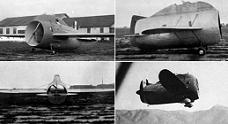
On Oct. 7, 1932 the Stipa-Caproni (Caproni Stipa) experimental aircraft with engine and propeller completely enclosed by the fuselage makes its first flight, becoming a stepping-stone to the jet aircraft.

In 1932 Hughes Aircraft Co. in Glendale, Calif. is founded by Humble, Tex.-born wacky-wonderful billionaire aerospace and movie mogul (OCD sufferer) Howard Robart Hughes Jr. (1905-76), who spends the decade setting multiple world air speed records; at the start of WWII in 1941 it only has four employees, but by the end it has 80K; in 1948 it creates the Aerospace Group, hiring future TRW founders Simon Ramo and Dean Wooldridge to manufacture the MA-1 fire control system and AIM-4 Falcon (F-98) air-to-air-missile; it is acquired in 1985 by Gen. Motors., and by Raytheon in 1997.
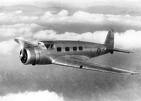
In 1932 Am. aircraft designer Gerard Freebairn "Jerry" Vultee (1900-38) of Downey, Calif. designs the Vultee V1 all-metal single-engine 2-pilot high-speed plane, which sets many aviation records, and in 1936 turns it into the 8-passenger V-1A for Am. Airlines, and later into the V-11 U.S. Army Air Corps attack plane; too bad, Vultee dies in a plane crash in 1938 before he can respond to a call for a 2-engine plane, and in 1943 his co. merges with Consolidated Aircraft to become Consolidated Vultee Aircraft Corp. AKA Convair.

On Aug. 11, 1933 the twin-boom 8-engine 120-passenger 11-crew 173'11"-wingspan Soviet Kalinin K-7 heavy experimental aircraft makes its first flight, using Soviet-made chrome-molybdenum steel; on toobad, it crashes on Nov. 21, killing all 14 aboard and one on the ground, causing the program to be scrapped amid accusations of sabotage.

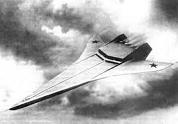
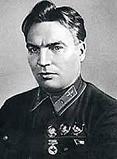
In fall 1933 the Soviet single-engine Bartini Stal-6 experimental fighter makes its first flight, designed by Italian-born Robert Ludvigovich Bartini (Roberto Oros di Bartini) (1897-1974), who emigrated to the Soviet Union in 1923 after turning Commie, and rose to head of amphibious experimental aircraft design in 1928, going on to set a Soviet air speed record. In 1957 the Soviet delta-wing Bartini A-57 revolutionary VTOL strategic jet bomber is cancelled after the launch of Sputnuk 1 and the new R-7 ICBM make it no longer cost-effective.

On July 15-22, 1933 Am. aviator Wiley Post (1898-1925) flies Winnie Mae (a Lockheed Vega) 15,596 mi. solo around the world in 7 days, 18 hours, 49.5 min. (21 hours less than his previous 2-pilot record), using a new radio compass developed by Sperry Gyroscope Co. for the U.S. Army; he is greeted by 50K at Floyd Bennett Field in Brooklyn, N.Y., and gets another ticker-tape parade; he did the whole stunt to drum up financial backing for an aeronautical school? - I'm too wiley to share that post with a partner again? On Sept. 5, 1934 Wiley Post tests the first practical high altitude rubberized pressure suit developed for him by B.F. Goodrich Co., reaching an alt. of 40K ft. over Chicago, Ill., later reaching 50K ft.

On Oct. 7, 1933 Air France is founded in Paris, France from a merger of Air Orient, Air Union, Compagnie Generale Aeropostale, Compagnie Internationale de Navigation Aerienne, and Societe Generale des Transport Aeriens; on June 26, 1945 it is nationalized; on Dec. 29, 1945 the French govt. gives it management of the entire French air transport network; in 1946 it opens its first air terminal at Les Invalides in Paris, and hires its first flight attendants.
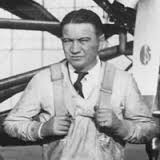
On Nov. 16, 1933 U.S. aviator James Crawford "Jimmie" Angel (1899-1956) flies over 3,212-ft. Angel Falls (highest waterfall on Earth) in Venezuela in his El Rio Caroni monoplane, causing it to be named after him; on Dec. 20, 2009 Venezuelan pres. Hugo Chavez renames it Krepakupai Meru ("waterfall of the deepest place").
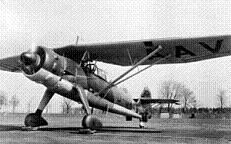
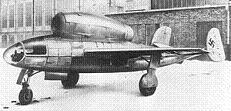
In 1933 the German Air Ministry (Reichsluftfahrtministerium) (RLM) is established to have control of all German aviation activities, implementing a standard system for aircraft designation et al.; meanwhile locomotive manufacturer Henschel and Son of Kassel, Germany sets up an aviation div. in Shchonefeld and Johannisthal, going on to produce the Henschel Hs 121 high-wing monopolane (first flight Jan. 4, 1934), Henschel Hs 122 radial-engine parasol wing recon aircraft (first flight 1935), Henschel Hs 123 single-seat biplane dive bomber (first flight May 8, 1935), Henschel Hs 126 two-seat recon aircraft, and the Henschel Hs 132 jet aircraft, with the pilot in a prone position (first flight 1945); it also manufactures the Panzer II, Tiger I, and Tiger II tanks.
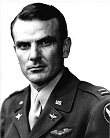
In 1933 Edwards Air Force Base (originally Muroc) is established near Rogers Dry Lake in Kern County, Southern Calif. 22 mi. NE of Lancaster and 25 mi. E of Rosamond, named after USAF Capt. Glen Edwards (1918-48), becoming a top aircraft test site, home of the USAF Test Center and NASA Armstrong Flight Research Center, known for Chuck Yeager's 1947 sound barrier breaking in a Bell X-1, the first landings of the Space Shuttle in the early 1980s, and the 1986 around-the-world flight of the Rutan Voyager.
On Jan. 30, 1934 the Soviet balloon Osoaviakhim ascends 13 mi. (22Km) into the stratosphere; too bad, the cabin becomes covered with ice and breaks loose, killing the crew.
On Feb. 9, 1934 (4:00 p.m.) the U.S. Air Mail Scandal begins after a U.S. Senate investigation of monopolistic practices by United Aircraft and Transportation Co. (UATC) causes Pres. Roosevelt to issue Executive Order 6591, suspending all airmail contracts and giving the job of 26 routes over 25K mi. of airways to the U.S. Army Air Corps in the middle of a blizzard, resulting in 66 accidents and 12 crew deaths in 78 days, with only 34.2% of scheduled flights completed, after which on June 12 the U.S. Air Mail Act (Black-McKellar Bill) is passed by Congress, forcing UATC to break up into the Boeing Aircraft Co., United Aircraft Manufacturing Co., and United Air Lines Transportation Co., causing all airlines to seek to gain more passengers to offset decreased airmail profits; on Sept. 18 pissed-off UATC founder William Edward Boeing (1881-1956) retires and goes into horsebreeding and yachting - don't forget, strictly blues tonight?
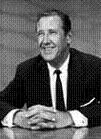

In 1934 Continental Airlines is founded as Varney Speed Lines by Walter T. Varney of Boise, Idaho, going bankrupt when the Roosevelt admin. cancels all domestic airmail contracts in 1934, selling its Southwest Div. for $90K on July 5, 1936 to Robert Forman Six (1907-86), who obtains an airmail contract between El Paso, Tex. and Pueblo, Colo., relocating the HQ to Denver Union Airport in Denver, Colo. in Oct. 1937 and changing its name to Continental Airlines, becoming CEO until 1981, later moving the HQ to Houston, Tex.; in Oct. 2010 it is acquired by United Airlines.
On Feb. 26, 1935 Adolf Hitler orders Hermann Goering to reinstate the Luftwaffe, banned by the 1919 Treaty of Versailles; Britain, France, and the League of Nations do nothing about it. On Mar. 1 the Gen. HQ Air Force is established by the U.S. Army for centralized control of aviation combat units inside the continental U.S., separate from but coordinated with the U.S. Army Air Corps, causing problems that lead to the establishment of the Army Air Forces (AAF).
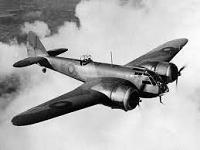

On Apr. 12, 1935 the Bristol Blenheim light bomber makes its first flight, becoming the first British aircraft with all-metal stressed-skin construction, retractable landing gear, flaps, variable-pitch propellers, and powered gun turret; after proving to be no match against the German Messerschmitt Bf 109 in daylight operations, it is used as a night fighter; on Sept. 14, 1939 the Canadian-built Bristol Fairchild Bolingbroke maritime anti-submarine and patrol aircraft makes its first flight.

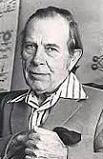
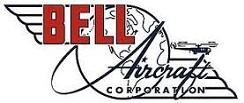
On July 10, 1935 Bell Aircraft Corp. (later Bell Aerospace) in Buffalo, N.Y. is founded by Mentone, Ind.-born Lawrence Dale "Larry" Bell (1894-1956), manufacturing the "Bomber Destroyer" YFM-1 Airacuda twin-engine fighter (first flight Sept. 1, 1937), the P-59 Airacomet (first flight Oct. 1,1942) (first U.S. jet fighter), and the P-63 Kingcroba (first flight Dec. 7, 1942), successor to the P-39; in 1941 they hire Paris, France-born helicopter designer Arthur Middleton Young (1905-95), who designs the Bell Model 30 (first flight June 26, 1943), and the Bell Model 47 (first flight Dec. 8, 1945), the first civilian helicopter; in 1960 it is acquired by Textron, with the Bell Helicopter Co. of Ft. Worth, Tex. manufacturing the Bell UH-1 "Huey" (originally HU-1) military helicopter (first flight Oct. 20, 1956), which is adopted by the U.S. Army during the Vietnam War (16K built); Young later goes philosopher, founding the Inst. for the Study of Consciousness in Berkeley, Calif. in 1972.
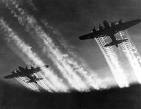
On July 28, 1935 the 4-engine Boeing B-17 Flying Fortress heavy bomber (named for the belief that it won't need fighter escort) makes its first flight, becoming the first mass-produced large aircraft starting in Apr. 1938; 12,731 are built through 1945 at $238K each.

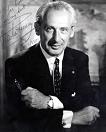
On Aug. 15, 1935 the $22,5K Seversky P-35, designed by Russian-born Am. aircraft designer Alexander Nikolaievich Prokofiev P. de Seversky (1894-1974) makes its first flight, becoming the first all-metal monoplane fighter in the U.S. Air Corps, complete with enclosed cockpit and retractable landing gear; it wins the Bendix Air Race in 1937-9, becoming the ancestor of the P-47 Thunderbolt; only 196 are manufactured; too bad, after losing $550K, the Seversky Aircraft Co., founded in 1931 fires Seversky in Apr. 1939, and reorganizes as Republic Aviation Corp..
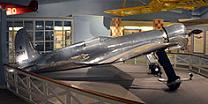

On Sept. 13, 1935 the Hughes H-1 Racer, Hughes Aircraft's first airplane makes its first flight, setting a world airspeed record and a transcontinental U.S. speed record, proposing it as a fighter plane to the U.S. Army, which turns it down; the Japanese Navy copies it and produces the Mitsubishi A6M Zero Jap. "Reisen" = Zero = last digit of Japanese year 2600 = 1940) (first flight Apr. 1, 1939), producing 1,939 by 1945; when introduced on July 1, 1940 it is the best dogfighting plane in the world, with a 12-1 kill ratio, but by 1944 it becomes outdated, and ends up used in kamikaze operations.
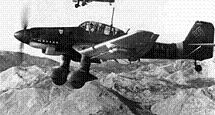
On Sept. 17, 1935 the Junkers Ju 87 "Stuka" (Ger. "sturzkampfflugzeug" = dive bomber) makes its test flight, complete with inverted gull wings, fixed spated undercarriage, and Jericho Trumpet wailing sirens mounted on its faired maingear legs, with automatic pull-up dive brakes that ensure recovery from a dive even if the pilot blacks out; 6.5K are manufactured by Aug. 1944.
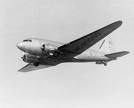
On Dec. 17, 1935 the $100K Douglas DC-3 fixed-wing propeller-driven airline makes its first flight, becoming the first successful commercial airliner, proving to be one of the safest airplines ever built, revolutionizing air transport through the 1940s with its 207 mph cruise speed and 1,500 mi. range; it is used as the basis of the C-47 Skytrain military transport aircraft, which makes its first flight on Dec. 23, 1941.

In 1935 Austrian rocket scientist Eugen Sanger (Sänger) (1905-64) invents a regeneratively-cooled liquid-fueled rocket engine capable of 10K fps, compared to only 6,560 fps for the V-2, causing the Nazis to hire him, after which in 1944 he develops the Silbervogel (Silverbird) manned winged vehicle that can achieve Earth orbit and reach the U.S., causing it to be called the Amerika Bomber, which the Allies steal and use as the basis of the X-15 and X-20 rocket planes, and the Space Shuttle.

In 1935 German engineer Hellmuth Walter (1900-80) founds Hellmuth Walter Kommanditgesellschaft, in Kiel to research using hydrogen peroxide as a fuel for rocket engines incl. rocket-assisted takeoff (RATO) and guided missiles, going on to develop main propulsion engines for rocket-powered interceptor aircraft incl. the Messerschmitt Me 163 Komet and Bachem Ba 349 Natter.
On Apr. 15, 1936 Aer Lingus (Gael. "aerloingeas" = air fleet) is founded by the Irish govt., becoming Ireland's 2nd largest airline after Ryanair, growing to a fleet of 53 with 93 destinations, based in Cork Airport, George Best Belfast City Airport, and Shannon Airport; in 2006-15 it is privatized.
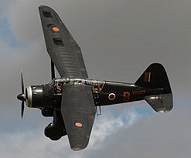
On June 15, 1936 the British Westland Lysander (named after Spartan gen. Lysander) makes its first flight, finding use for clandestine missions on short airstrips, incl. occupied France; 1,786 are built.

On June 15, 1936 the British twin-engine Vickers Wellington long range medium bomber featuring geodesic construction makes its first flight, entering service in Oct. 1938, finding use as a night bomber until replaced by the 4-engine Avro Lancaster; 11,461 are produced by 1945.
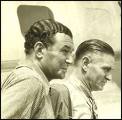
On Sept. 2, 1936 the Ping-Pong Flight sees Am. aviators Henry Tyndall "Dick" Merrill (1894-1982) and "Puttin' on the Ritz" fading star Harry Richman (1895-1972) take off from New York City in a Vultee V1, land in Llandilo (Llandeilo), Wales (175 mi. W of London) 18 hours 36 min. later, then on Sept. 14 take off from Southport, England, landing in New York City after making a mistake and dumping 500 gal. of fuel, causing them to have to stop in Newfoundland, becoming the first round-trip trans-Atlantic flight; Richman fills his plane with ping-pong balls to make it buoyant in case of a sea landing, and sells autotographed ones for the rest of his life to help recoup the $360K cost; Merrill goes on to become Pres. Eisenhower's personal pilot in 1952, and retire as the most experienced pilot for Eastern Air Lines in 1961, with 36K hours, plus 9K more, for 8M mi. total.

On Sept. 4, 1936 British-born Kenyan aviator (female) Beryl Markham (1902-86) takes off from Abingdon, England in her Vega Gull The Messenger, and 20 hours later crashes near Cape Breton, Nova Scotia, Canada, becoming the first woman to fly solo E-W across the Atlantic, and first to make it from England to North Am.
On Oct. 31, 1936 the Jet Propulsion Laboratory (JPL) (originally Guggenheim Aeronautical Lab) is founded in Pasadena, Calif., managed by Cal. Tech., going on to produce rockets, ballistic missiles et al.; in Dec. 1958 it becomes part of NASA, going on to design the Ranger, Surveyor, and Mariner spacecraft.
On Jan. 19, 1937 Howard Hughes flies his Northrop Gamma Monoplane from Los Angeles, Calif. to Newark, N.J. in 7 hours 28 min. 25 sec. to set a transcontinental air record.


5-6-37-boom? On May 6, 1937 (Thur.) the 830-ft. hydrogen-filled German Zeppelin LZ 129 Hindenburg (call sign DEKKA), commanded by Ernst August Lehmann (b. 1886) explodes and burns as it approaches its mooring tower at the Lakehurst, N.J. Naval Air Station, killing 13 passengers and 22 crew out of 36 passengers and 61 crew aboard, plus a Navy crewman on the ground, Lehmann uttering the deathbed soundbyte "It must have been an infernal machine"; Herbert O. "Herb" Morrison (1905-89) of Chicago's WLS radio gives the first recorded eyewitness news broadcast as he describes the disaster ("It's burning, bursting into flames") and breaks down in tears; the ship made 10 passenger-carrying round trips in 1936, and this is the first and last crossing of 1937; the U.S. monopily refused to sell helium to the Germans, forcing them to use hydrogen, and therefore it's a conspiracy, as dirigible development virtually ends in favor of more expensive, fuel-wasting and lucrative powered aircraft, produced in the U.S.? - fuel prices finally get so high that dirigibles make a comeback in ?
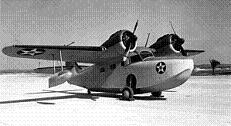
In 1937 the $62K 8-seat amphibious Grumman G-21 Goose commuter aircraft makes its first flight, becoming Grumman's first monoplane, first twin-engined aircraft, and first aircraft to enter commercial airline service, used by businessmen in the Long Island, N.Y. area, and going on to find use in the U.S. military.

In 1937 English engineer Sir Frank Whittle (1907-96) builds the first gas turbine jet engine.
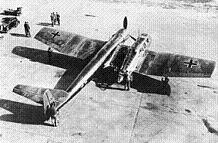
On Feb. 25, 1938 the Blohm and Voss BV 141 tactical recon aircraft makes its first flight, featuring an assymetric design with the cockpit on the starboard side of the fuselage, and the tail on the port side; after the Focke-Wulf Fw 189 is preferred by the Luftwaffe, only 13-28 are produced.
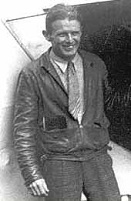
On July 17, 1938 Galveston, Tex.-born pilot Douglas Corrigan (1907-95) is denied permission from the Civil Aviation Authority to fly across the Atlantic from New York City to Ireland because of the poor condition of his plane; he takes off from New York anyway and claims to have mistakenly turned 180 degrees on a flight to Calif., landing in Ireland 28 hours and 13 min. later; after police question him, New York City gives "Wrong Way" Corrigan a ticker-tape parade - the quintessential American success story?
In July 1938 the twin-engine twin-boom 3-seat Focke-Wulf Fw 189 Uhu (Eagle Owl) tactical recon aircraft makes its first flight, entering service with the Luftwaffe in Aug. 1941, with 864 produced by 1944.
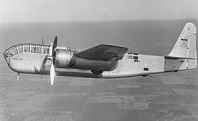
In 1938 the twin-engine Stearman Model X-100 attack aircraft makes its test flight, losing a competition in the U.S. Army Air Corps and never going into service, but leading to the Douglas A-20 Havoc, Martin Model 167 Maryland, and North American B-25 Mitchell.
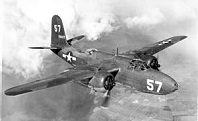
On Jan. 23, 1939 the Douglas A-20 Havoc (Boston) (DB-7) (P-70) attack, intruder, and light bomber aircraft makes its first flight, with 7,478 buit by 1944, seeing service in the U.S. Army Air Corps, RAF, French Air Force, and Soviet Air Force.
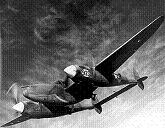
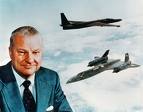
On Jan. 27, 1939 the U.S. Army Air Corps Lockheed P-38 Lightning fighter aircraft with distinctive twin booms and central nacelle containing the cockpit and armament, designed by super engineer Clarence Leonard "Kelly" Johnson (1910-90) makes its first flight, becoming the only fighter aircraft manufactured by the U.S. during WWII, helping U.S. aces in the Pacific Theater score mucho Vs, led by Richard Bong with 40Vs; 10,037 are built at an avg. cost of $97K; in June 1943 Kelly sets up the Lockheed Skunk Works in Burbank, Calif. to perform high-priority projects sans bureaucracy and red tape, going on to produce the U-2 Dragon Lady, SR-71 Blackbird, F-117 Nighthawk, and F-22 Raptor.

On July 6, 1939 McDonnell Aircraft Corp. is founded in St. Louis, Mo. by Denver, Colo.-born James Smith "Mac" McDonnell (1899-1980), going on to produce the F-4 Phantom II and the Mercury and Gemini space capsules, and later the F-15 Eagle and F/A-18 Hornet; in 1967 it merges with Douglas Aircraft Co. of Long Beach, Calif. to form Mc Former Douglas Aircraft. Co. chief engineer John Knudsen "Jack" Northrop (1895-1981) founds McDonnell Douglas Corp.
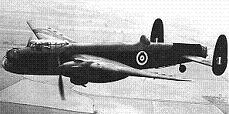
On July 25, 1939 the British twin-engine Avro 679 Manchester heavy bomber makes its first flight, entering service in Nov. 1940; too bad, its underpowered and unreliable engines make it a flop, and it is retired in 1942 after only 202 are built, being replaced by the 4-engine Avro Lancaster.



On Aug. 27, 1939 the first Turbojet Airplane, the 4.4K-lb. German Heinkel He-178, powered by a Heinkel S3B turbojet, designed by Hans Joachim Pabst von Ohain (1911-98) is test-flown at Marienehe in N Germany by pilot Capt. Erich Warsitz (1906-83); on Nov. 1 it is demonstrated to the German Air Ministry - if they hadn't yawned it off the war might have turned out differently?



On Sept. 1, 1939 - Sept. 2, 1945 the horrific $3.5T World War II resulted in 24M military and 49M civilian deaths, and featured the low point of the Jewish Holocaust (Shoah) by the German Nazis, I guess it was the Jews' fault for not ransoming themselves to go to Israel before they could round them up for the camps. The whole experience turned Jews from lovers into fighters, ramping up the Zionist movement with full world sympathy and support by new world superpower U.S., which had its own guilt trip because on Nov. 24, 1942 Budapest-born Am. Zionist leader Rabbi Stephen Samuel Wise (1874-1949) announced in a press conference in Washington, D.C. that he was authorized by the U.S. State Dept. to confirm that the Nazis had murdered 2M Jews as part of a plan to exterminate all Jews in Europe; too bad, the nat. newspapers didn't consider it front page news, and the U.S. govt. did nada. After the war ended and Americans toured the concentration camps in horror, Polish-born Jewish scholar Raphael Lemkin (1900-59), who single-handedly led an unsuccessful campaign to get the League of Nations to give internat. protections against genocide starting in 1933 finally got what he wanted after his own people got it, namely the Dec. 9, 1948 U.N. Convention on the Prevention and Punishment of the Crime of Genocide (Gen. Assembly Resolution 260), which didn't come in force until Jan. 12, 1951, and which the U.S. still didn't ratify until 1988.

In 1939 Newark, N.J.-born former Douglas Aircraft. Co. chief engineer John Knudsen "Jack" Northrop (1895-1981) founds Northrop Corp., pioneering the flying wing (tailless aircraft); in 1994 it merges with Grumman Corp. to form Northrop Grumman.


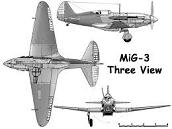
In 1939 the Mikoyan-Gurevich (MiG) Design Bureau in the Soviet Union is founded by Armenian Artem Ivanovich Mikoyan (1905-70) and Jewish Russian Mikhail Iosifovich Gurevich (1893-1976) to design fighter aircraft, which become known as "MiGs", starting with the MiG-1 high alt. fighter (first flight Apr. 5, 1940), of which only 100 are built, followed by the MiG-3 (first flight Oct. 29, 1940), of which 3,172 are built by 1941.

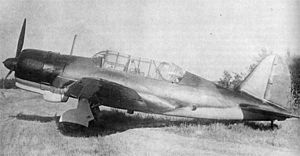
In 1939 after Joseph Stalin issues the 1936 Ivanov Order for an aircraft capable of performing recon and bombing, the Sukhoi Co. (originally Sukhoi Design Bureau OKB-51) in Moscow, Russia is founded by Tupolev employee Pavel Osipovich Sukhoi (1895-1975) to manufacture military aircraft, starting with the Sukhoi Su-2 light bomber (first flight Aug. 25, 1937).
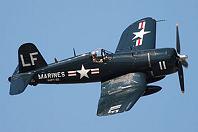
On May 29, 1940 the U.S. Navy/U.S. Marine Corps Chance Vought F4U Corsair fighter, powered by the Double Wasp engine makes its first flight, entering service on Dec. 28, 1942, with high demand causing manufacturing to be shared by Goodyear (FG) and Brewster (F3A); until problems with carrier landing are solved, it is replaced by the Grumman F6F Hellcat; it goes on to earn an 11:1 kill ratio vs. Japanese planes; after being adopted by New Zealand and France, 12,571 are produced by 1953, becoming the longest production run of any U.S. piston-engined fighter.
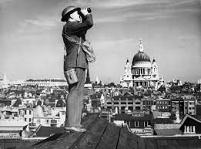
The war is saved with British and U.S. technology? On July 10, 1940 after air marshal Hermann Goering promises Hitler it will only take 1-2 weeks, Germany, having only one unfinished business (the pesky Brits) begins the Battle of Britain (ends Nov. 2) with an all-out air attack starting in SE England, with the coast around Dover becoming known as Hell-Fire Corner as it is shelled by German guns from the opposite coast; on July 10 120 German planes attack a British shipping convoy in the English Channel, while 70 more bomb docks in S Wales; the British Ministry of Aircraft Production begins calling for citizens to donate aluminum, with the soundbyte: "We will turn your pots and pans into Spitfires and Hurricanes, Blenheims and Wellingtons"; after it doen's work as planned, they restart it officially on Aug. 13 (Eagle Day); the Luftwaffe has 1.5K fighters vs. 850 for the Brits, who are hampered by being on the defensive, needing to hold back half their force for defense of Midlands and N factories; on July 10 the British Ministry of Aircraft Production begins calling for citizens to donate aluminum, with the soundbyte: "We will turn your pots and pans into Spitfires and Hurricanes, Blenheims and Wellingtons"; on July 14 the Striking Cos. launch Operation Ambassador (ends July 15) to attack Guernsey, turning into a fiasco, with one killed and two taken POW; air chief marshal Sir Hugh Dowding (1882-1970) is CIC of the RAF Fighter Command; a new secret veapon called RADAR (Radio Detection and Ranging) is used to effect by the Allies, facing 2.5K total German planes, who fail in their attempt to control the Channel, losing 1.7K planes and killing 23K British civilians before giving up; Rolls-Royce wins the battle with their Merlin Engines for the single-seat Supermarine Spitfire (first flight Mar. 5, 1936) and Hawker Hurricane (first flight Nov. 6, 1935), which can out-turn the German Messerschmitt Bf-109 (first flight May 29, 1935) but have a lower ceiling; the U.S. and Britain begin cooperating in radar development at the MIT Radiation Laboratory in Cambridge, Mass.; until Aug. 7 the Germans carry out only "test raids" on Channel merchant shipping, sinking 30K tons and downing 148 British planes, with losses of 286 German planes; the main air battle on Aug. 24-Sept. 6 is fought over the radar installations and S airfields of Fighter Command, but the Germans screw up and leave the radars intact, and fail to finish off the airfields, instead going on to attack factories and London, spurred by Hitler, who was mad that the Brits had bombed Berlin and wanted to get even; the battle ends with 414 British and allied pilots KIA (about one-third). On Sept. 15 Battle of Britain Day sees massive German air raids on London, Southampton, Liverpool, Manchester, Bristol, and Cardiff by 700 fighters and 230 bombers; the Germans lose 60 planes to 26 for the Brits; because the Germans usually attack at night, fighters are almost never used?
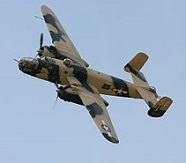
On Aug. 19, 1940 the North American B-25 Mitchell medium bomber makes its first flight, named in honor of U.S. Maj. Gen. William "Billy" Mitchell; 9,816 are produced in the next four decades, with variations incl. the USMC PBJ-1 patrol bomber, USAAF F-10 recon aircraft, and AT-24 trainer.
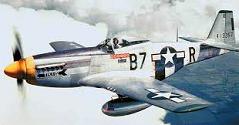
On Oct. 26, 1940 the $51K North American Aviation P-51 Mustang makes its test flight, with the British RAF replacing its Allison V-1710 engines with the Rolls-Royce Merlin, giving it equal or better high-altitude performance to the Luftwaffe fighters after it is introduced in Jan. 1942; 15K are built by 1984.
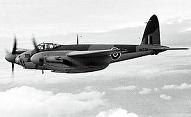
On Nov. 25, 1940 the 2-man British De Havilland DH.98 Mosquito ("Mossie") AKA "The Wooden Wonder" too-fast-to-catch multi-role recon-fighter-bomber aircraft makes its first flight, introduced on Nov. 15, 1941, evolving from photo-recon missions to low-med.-high alt. bombing missions with Blockbuster bombs, becoming the most versatile warplane ever built; there is room for only one passenger, in the bomb bay.
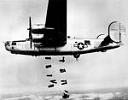
In 1940 after a successful test flight last Dec. 29, the U.S. Consolidated B-24 Liberator bomber (AKA the Flying Boxcar) (bomb cap. 4 tons), designed by Consolidated Aircraft of San Diego, Calif., with greater range and speed than a B-17 begins production in England; in Aug. 1942 the new 3.5M sq. ft. Ford Motor Co. plant in Willow Run, headed by Danish-born engineer Charles Emil Sorensen (1881-1968) opens, becoming the largest factory in the U.S. (largest outside the Soviet Union), ramping up production to one an hour, causing it to become the most-produced U.S. military aircraft (18,482) (until ?); too bad, it is hard to steer, has a tendency to catch on fire, and can't take much battle damage, causing it to be called the Flying Coffin.
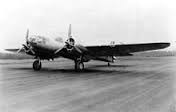
In 1940 the Martin Model 167 Maryland medium bomber makes its test flight, seeing action in France and the U.K. for the rest of WWII; 450 are produced.
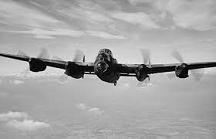
On Jan. 9, 1941 the £50K British 4-engine Avro Lancaster "Lanc" heavy bomber, based on the Avro Manchester makes its first flight, entering service in Feb. 1942 and becoming the go-to wartime night bomber, also used for daylight precision bombing, delivering 608K long tons of bombs in 156K sorties, incl. 4-ton and 6-ton blockbuster bombs, the 6-ton Tailboy and 11-ton Grand Slam earthquake bombs, and bouncing bombs; 7,377 are produced by 1963.
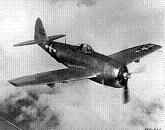
On May 6, 1941 the $85K Republic P-47 Thunderbolt, makes its first flight, becoming the largest and heaviest piston engine-powered aircraft ever made, carrying a double quartet of .50-cal. M2 Browning machine guns for ground attack, or up to 2.5K lbs. of bombs; 15.6K are built by 1966.
On June 16, 1941 Washington Nat. Airport on the W bank of the Potomac River S of the 14th St./I-395 Bridge near Crystal City in Arlington, Va. 5 mi. S of downtown Washington, D.C. opens, becoming the nearest and 2nd largest D.C. airport after Dulles Internat. Airport 30 mi. to the W; on July 1 the airport's weather station becomes the official weather observation station for the Nat. Weather Service in Washington, D.C.; in 1998 the name is changed to Ronald Reagan Washington Nat. Airport.
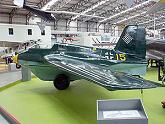
On Sept. 1, 1941 the Messerschmitt Me 163 Komet rocket-powered fighter aircraft makes its test flight; in July 1944 test pilot Heini Dittmar reaches 700 mph (1,130 km/h) in it; too bad, although 300+ are built, they only shoot down nine Allied aircraft in 16 air Vs, with 10 losses.

On Dec. 1, 1941 after being pushed by Tex. oilman David Harold "Dry Hole" Byrd (1900-86) (cousin of explorer Richard E. Byrd) et al., the Civil Air Patrol (CAP) is founded as a nonmilitary auxiliary of the U.S. Air Force.
In 1941 after hearing of the Pearl Harbor attack, dental surgeon Lytle S. Adams conceives of the Bat Bomb, a flock of bats carrying small bombs that can be unleashed on mainland Japan; too bad, in Dec. 1943 after $2M spent for multiple disastrous tests, news of the A-bomb causes the program to be cancelled.
In 1941 the Wright Aeronautical Corp. in Ohio begins bribing Army inspection officers to pass defective military aircraft engines until 1933, when some assembly line employees blow the whistle to Mo. Sen. Harry Truman, who sets up a Congressional investigation that results in Army Air Force officers Lt. Col. Frank C. Greulich, Maj. Walter A. Ryan, and Maj. William Bruckmann convicted of neglect of duty and relieved next year.
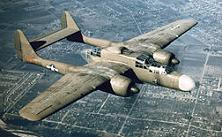
On May 16, 1942 the $190K all-metal twin-engine twin-boom Northrop P-61 Black Widow night interceptor makes its first flight, becoming the first aircraft designed to use radar; it becomes operational in 1944, and 706 are produced by 1954.

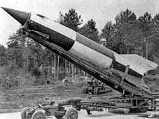
Herr Hitler unveils a secret veapon? On June 13, 1942 the 12-ton (1-ton warhead) A4 (V-1) rocket (using calcium permanganate propellant), developed by Wernher von Braun (1912-77) is tested by the Germans at Peenemunde in front of 35 senior officials incl. Albert Speer, crashing within 1 mi. despite its promised 200 mi. range; too bad, they get it right. On Sept. 7, 1942 (eve.) after years of secret Nazi weapon tests, and all kinds of failed Nazi super weapon designs, the supersonic 11-ton 3.6K-mph 100K-Reichsmark V-2 (Ger. "Vergeltungswaffe" = retribution weapon) rocket is introduced by the Germans to their English racial cousins, with one landing near Epping and another in Chiswick, killing three, causing the British govt., which announced that day that the flying bomb threat is over since it has been seven days to cover it up with a coverstory of gas main explosions until the New York Times reveals it 1 mo. later; V-2s cannot be intercepted, arrive in 3-4 min., give no warning before detonation ("bombs with slippers on"), and 1K+ are launched until Mar. 27, 1945, causing horrific damage to London and its suburbs, seriously affecting British morale in combination with wartime scarcities.
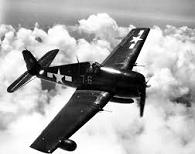
On June 26, 1942 the $35K carrier-based Grumman F6F Hellcat fighter aircraft makes its first flight, becoming the U.S. Navy's #1 fighter in WWII, supporting the U.S. Marine Corps in land operations; 12,275 are built by 1945.
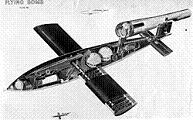

On Oct. 3, 1942 the 3rd test launch at Peenemunde of the pulsejet-powered (50 Hz) 400 mph V-1 Flying Bomb (AKA Buzz Bomb, Doodlebug, Cherystone, Maybug) is the first success, causing Hitler to authorize mass production; program leader Maj.-Gen. Walter Robert Dornberger (1895-1980) later utters the soundbyte that this day "is the first of a new era in transportation, that of space travel"; the first V-1 is launched at London on June 14, 1944 one week after D-Day, with firings reaching 100+ per day until Oct. 1944 (9,521 total), then 2,448 more launched at Antwerp et al. until Mar. 29, 1945.
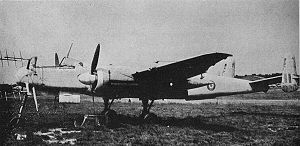
On Nov. 6, 1942 the Heinkel He 219 Uhu (Eagle Owl) night fighter makes its first flight, becoming the first military aircraft with ejection seats, and the first German WWII aircraft with tricycle landing gear; too bad, although it is a super veapon that might turn the RAF strategic night bombing offensive around, only 294 are built by the war's end.
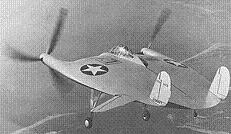
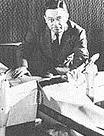
On Nov. 23, 1942 the Vought V-173 Flying Pancake experimental aircraft, designed by Olathe, Kan.-born "Zimmers Skimmers" designer Charles Horton Zimmerman (1908-96) makes its first flight, featuring an all-wing design with disc-shaped lifting surfaces, and two piston engines buried in the body that drive two props on the leading edge wingtips, making it capable of nearly vertical takeoff and landing; too bad, the complex gearbox produces unacceptable amounts of vibration, and only one is built; test pilots incl. Charles Lindbergh; last flight is on Mar. 31, 1947 after 190 flights and 131.8 hours of flying time.
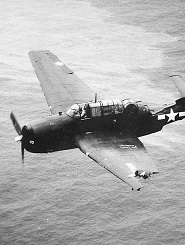
In 1942 after its initial flight on Aug. 7, 1941 the Grumman TBF Avenger AKA TBM torpedo bomber built by Gen. Motors (GM) enters service for the U.S. Navy and USMC, first seeing acting in the Battle of Midway, where five of six are destroyed; it goes on to become the most effective and widely-used torpedo bomber in WWII, sinking the super-battleships Yamato and Musashi; it remains in use until the 1960s.
In 1942 Shannon Airport in Shannon, County Clare, Ireland opens, extending the runways in 1945 to handle transatlantic flights; on Oct. 24, 1945 the Flagship New England (Am. Overseas Airlines DC-4) becomes its first scheduled commercial flight.
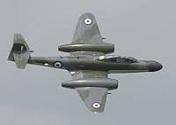
On Mar. 5, 1943 the straight-wing Gloster Meteor "Meatbox", based on the revolutionary turbojet engine of Sir Frank Whittle makes its first flight, becoming the first British jet fighter and the only operational Allied jet in WWII, introduced on July 27, 1944 with RAF Squadron 616, and adopted by Australia, Israeli, Egypt, and Argentina; on Nov. 7, 1945 the first official jet air speed record of 606 mph (975 km/h) is set by a Meteor F.3; on Sept. 20, 1945 a Meteor I with its two turbine engines modified to drive propellers becomes the first turboprop aircraft to fly; on Feb. 10, 1954 the Gloster Meteor F8 Prone Pilot, a modified Meteor F.8 to place the pilot in a prone position makes its first flight, proving that an upright position is superior in combat, leading to the development of g-suits; 3,947 are built by the 1980s.
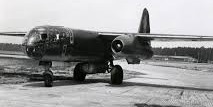
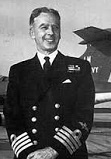
On June 15, 1943 the 461 mph 20K ft. alt. Arado Ar 234 makes its first flight, becoming the world's first operational jet-powered bomber, becoming the last Luftwaffe aircraft to fly over Britain in WWII in Apr. 1945 in the last German blitz, which comes too late to make it Hitler's vaunted Vonder Veapon; British #1 pilot (Navy) Eric Melrose "Winkle" Brown (1919-2016) rushes to N Germany to capture the German air base in Grove, Belgium as part of Operation Enemy Flight, shipping 12 AR 234s to Farnborough.
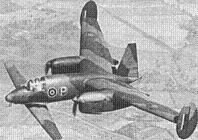
On July 22, 1943 the tandem wing Miles M.39B Libellula (Libellulidae = dragonfly family) experimental bomber, with the larger wing in the back to give the pilot the best possible view for aircraft carrier landing makes its first flight; too bad, it is cancelled after only one is built.
In 1943 Operation Bumblebee is launched by the U.S. Navy to build ramjets to combat German glide bombs and anti-ship missiles; in Mar. 1947 Topsail Island, N.C. becomes the permanent testing and launch facility until it is transferred to China Lake, Calif. in 1950.
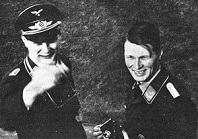
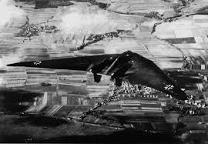
On Mar. 1, 1944 in response to Hermann Goering's call for light bombers that meet the "3x1000" requirement (fly 1kg of bombs 1km at a speed of 1km/hour) the Horten Ho 229 (Gotha Go 229) (Horten H.IX.) flying wing prototype fighter-bomber makes its first flight, designed by the Horten brothers Walter Horten (1913-98) and Reimar Horten (1915-94); too bad, the Allies defeat Germany before it can be put into production, and only three are built, after which the Allies copy the design for their stealth bombers.
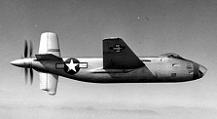
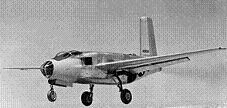
On May 6, 1944 the 2-engine Douglas XB-42 Mixmaster medium bomber makes its first flight, featuring rear-mounted contra-rotating pusher propellers for higher speed; too bad, it is cancelled in 1948 after only two are built due to the advent of jet aircraft, starting with the Douglas XB-43 Jetmaster (first flight May 17, 1946), which replaces the piston engines of the XB-42 with two GE J35 jet engines, becoming the first U.S. jet bomber to fly, but is cancelled after only two are built because of stability problems.
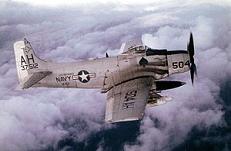
On Mar. 18, 1945 the single-seat piston-engine propeller-driven Douglas A-1 Skyraider "Spad" attack aircraft makes its first flight, having a long career with the U.S. Navy, Marine Corps, and Air Force, with 3,180 produced by 1957.
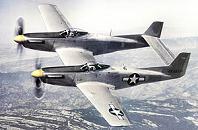
On June 15, 1945 the North American F-82 Twin Mustang long-range (2K mi.) excort fighter makes its first flight, becoming the last piston-engine fighter ordered into production by the USAF; too bad, WWII ends before they can become operational, and they end up being used to replace the Northrop P-61 Black Widow, seeing action in Korea and becoming the first to destroy North Korean aircraft.
'
In 1945 Avro Canada is founded in Toronto, Ont., Canada, growing to become the #3 aircraft manufacturer in Canada.
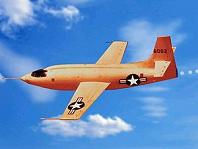
On Jan. 19, 1946 the Bell X-1 (originally Bell XS-1) rocket plane is first flown, becoming the first manned airplane to break the sound barrier.
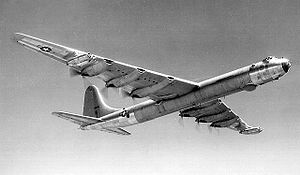
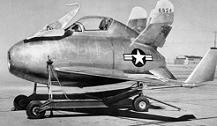
On Aug. 8, 1946 the Convair B-36 Peacemaker strategic bomber makes its first flight, becoming the largest mass-produced piston engine aircraft, with the longest wingspan (230 ft.) (70.1m) of any combat aircraft, with its range of 10K mi. (first manned bomber with an unrefueled intercontinental range) and max. payload of 72K lb. making it the first bomber capable of delivering any of the nuclear weapons in the U.S. arsenal from its four bomb bays sans modifications, being adopted as the primary nuclear weapons delivery vehicle of the Strategic Air Command (SAC) until the Boeing B-52 Stratofortress becomes operational in 1955; on Aug. 23, 1948 the McDonnell XF-85 Goblin jet fighter makes its first flight, designed as a parasite fighter to be deployed from a Convair B-36 bomber bomb bay to defend it from enemy fighters; too bad, it is too inferior to face them in combat, and there are docking problems, caused it to be cancelled in 1949 after only two are built.

In 1946 Korean Nat. Airlines is founded in Seoul, South Korea, commencing operations on Oct. 30, 1948 with a flight from Seoul to Pusan; on Mar. 1, 1969 it begins operations as the privatized "Korean Air Lines; on Mar. 1, 1984 it becomes Korean Air.
In 1946 the Nat. Air and Space Museum of the Smithsonian Inst. is founded in Washington, D.C. - see Charles Lindbergh's plane hanging on wires?
In 1946 Scandinavian Airlines System (SAS) is founded as the flag carrier of Denmark, Norway, and Sweden, becoming the largest airline in Scandinavia.






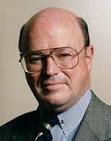
Just when the U.S. is #1 on the planet, dumbo Truman single-handedly dismantles U.S. military might, insuring that the Korean War will be an American D? On July 26, 1947 Pres. Truman signs the U.S. Nat. Security Act, to take effect on Sept. 18, unifying the Dept. of War (Army), Navy, and newly-formed U.S. Air Force (USAF) into the Nat. Military Establishment (NME), with the Marine Corps staying under the Navy Dept. and the Coast Guard under the Dept. of the Treasury (shifted to the Navy Dept. during time of war); after the abbrevation NME sounds too much like enemy, the name is changed on Aug. 10, 1949 to Dept. of Defense; it also establishes the Joint Chiefs of Staff, Nat. Security Council (NSC), and the Central Intelligence Agency (CIA) in Sept. to replace the Nat. Intelligence Authority and the Central Intelligence Group; on May 1 Rear Adm. Roscoe Henry Hillenkoetter (1897-1982) becomes dir. #3 of the CIA (until Oct. 7, 1950), going on to join super-secret Majestic-12 and help run the Roswell UFO coverup?; Allen Welsh Dulles (1893-1969) helps create the CIA, and becomes its first civilian dir. in 1953; the CIA hires 1K Nazis for spying and intel during the Cold War?; on Sept. 17 U.S. Navy secy. (since 1944) James Vincent Forrestal (1892-1949), the chief planner of defense unification becomes U.S. defense secy. #1 (until Mar. 28, 1949), giving it a paranoid dipstick baby-don't-stop-now anti-Communist mentality that spawns the Cold War policies of George Frost Kennan (1904-2005) and Paul Henry Nitze (1907-2004); on Sept. 18 William Stuart Symington Jr. (1901-88) (CEO of Emerson Electric Co., the world's largest manufacturer of airplane armament) becomes U.S. Air Force secy. #1 (until Apr. 24, 1950); new CIA exec Frank Gardner Wisner (1909-65) creates the covert Office of Policy Coordination (OPC) for agitprop and subversion of hostile states and support of anti-Communist forces; it founds Operation Mockingbird to influence domestic and foreign media, with his network becoming known as "Wisner's Wurtlitzer", making FBI dir. J. Edgar Hoover jealous of "Wisner's gang of weirdos", passing background info. on its members to Wisc. Sen. Joseph McCarthy, who gets staff member Carmel Offie fired in 1953.
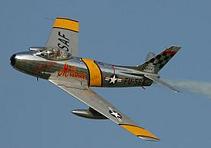
On Oct. 1, 1947 to counter the Soviet MiG-15, the transonic swept-wing (first for the U.S.) North American F-86 Sabre(jet) fighter makes its first test flight, becoming a success against the Soviet MiG-15 in the Korean War (1950-3); 7,800 are built by 1956, and 9,860 by 1994, becoming the most-produced Western fighter.

On Oct. 14, 1947 (Tues.) U.S. test pilot Maj. Charles Elwood "Chuck" Yeager (1923-) ignores two broken ribs from a drunken horseback ride to break the sound barrier in a Bell X-1 rocket plane named Glamorous Glennis (his wife) over Edwards AFB (Mojave Desert) in Calif., reaching a speed of 662 mph (750 mph?) (Mach 1.06) at 42K ft., and creating the first sonic boom.
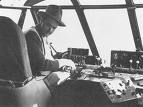


On Nov. 2, 1947 after surviving Maine Sen. Owen Brewster's congressional investigation of alleged war profiteering (arranged by Pan Am pres. Juan Trippe (1899-1981) in an effort to trip him up and force him to sell his holdings in rival TWA?), Howard Hughes (1905-76) pilots the monumentally big (five stories tall) and expensive H-4 Hercules HK-1 Flying Boat (AKA the Spruce Goose), the world's largest airplane (made of birch), built with govt. backing for a 1-mi., 1- min. test flight over Long Beach Harbor in Calif., relieving Hughes of his promise to leave the country and never return if it doesn't fly; it never flies again - and he got the hidden helium balloons out without being caught?
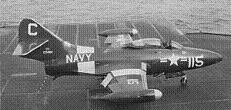
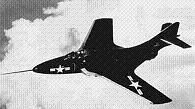
On Nov. 24, 1947 the single-engine straight-wing carrier-based Grumman F9F Panther makes its first flight, becoming Grumman's first jet fighter, adopted by the U.S. Navy and U.S. Marine Corps, seeing action in the Korean War, later adopted by Argentina; 1,382 are produced by 1958. On Sept. 20, 1951 the swept-wing carrier-based Grumman F9F/F-9 Cougar makes its flight, replacing the Panther; 1,392 are produced by 1974.
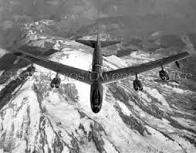
On Dec. 17, 1947 the first $1.9M Boeing B-47 Stratojet, the first all-jet bomber, with a revolutionary swept wing is test-flown; it begins operation in June 1951; a total of 2,032 are delivered by 1957.
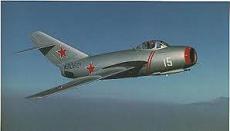
On Dec. 30, 1947 the Soviet Mikoyan-Gurevich MiG-15 "Fagot" fighter jet makes its first flight, using swept wings to reach transonic speeds; it is first used in combat in the Korean War (1950-3),, causing the U.S. to respond with the F-86 Sabre.
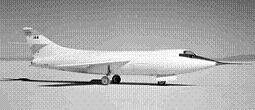

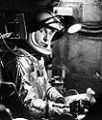
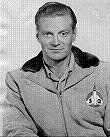
On Feb. 4, 1948 the U.S. Navy Douglas D-558-2 Skyrocket rocket and jet-powered supersonic research aircraft makes its first flight; on Aug. 21, 1953 WWII Midway ace (later USMC Maj. Gen.) Marion Eugene Carl (1915-98) sets an unofficial alt. record of 83,235 ft. above Muroc Dry Lake in Calif. in a Douglas Skyrocket dropped from a B-29 bomber at 34K ft.; on Nov. 20 (almost the 50th anniv. of the Wright Brothers flight on Dec. 17) U.S. Nat. Advisory Committee for Aeronautics (NACA) civilian test pilot Albert Scott Crossfield (1921-2006) becomes the first pilot to twice at 2x the speed of sound in a Douglas Skyrocket, reaching 1,291 mph (2,078 km/h) (Mach 2.005), causing military "blue suiters" to throw fits; on Dec. 12 Chuck Yeager bests him with Mach 2.4 (1.8K mph). On Sept. 9, 1954 Captain Midnight (Jet Jackson, Flying Commando) (an adaptation of the radio show that ran from 1938-49) debuts on CBS-TV for 39 episodes (until Jan. 21, 1956), starring Richard Webb (1915-93) in the title role, who flies a Douglas D-558-2 Skyrocket named the Silver Dart, Sid Melton (Sidney Meltzer) (1917-2011) as Ichabod "Ikky" Mudd ("Mudd with two Ds"), and Olan Evart Soule (1909-94) as Dr. Aristotle "Tut" Jones.

In Sept. 1948 El Al Israel Airlines Ltd. (Arab. "skywards") is founded by the new state of Israel, with its first flight from Geneva to Tel Aviv.
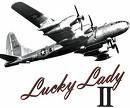
On Mar. 2, 1949 the Lucky Lady II Boeing B-50 Superfortress lands at Ft. Worth, Tex. after completing the first nonstop flight around the world in 94 hours 1 min. with in-flight refueling.
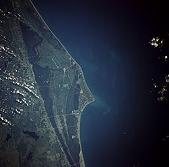
On May 11, 1949 Pres. Truman signs Public Law 60, establishing the Joint Long Range Proving Ground at Cape Canaveral, Fla. (Span. "sugar cane field") E of Merritt Island across the Banana River; in 1963-73 it is renamed Cape Kennedy.
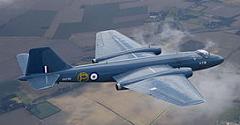
On May 13, 1949 the English Electric Canberra jet-powered medium bomber makes its first flight, entering service on May 25, 1951 nd setting a world alt. record of 70,310 ft. (21,430m) in 1957, getting adopted by India, Australia, and Peru; 900 are built by 2006.
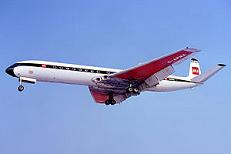
On July 27, 1949 the De Havilland DH 106 Comet makes its first flight, featuring four De Havilland Ghost turbojet engines buried into the wings to give it a sleek design complete with large windows, making it a big success; BoAC introduces it on May 2, 1952; too bad, within a few years metal fatigue causes two midair accidents where it tears itself apart, setting their marketing program back and allowing competitors to pass them.
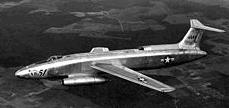
On Oct. 28, 1949 the $6.3M Martin XB-51 tri-jet bomber makes its test flight; too bad, it loses out to the English Electric Canberra (B-57).
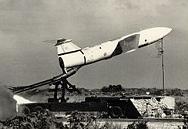
In 1949 the 700-mi. range 35K-ft alt. 650 mph 39'6"-long 4'6"-diam. Martin MGM-1 Matador makes its first flight, becoming the first operational U.S. surface-to-surface cruise missile, based on the German V-1 with radio control to give it a 1 mi. CEP, and a turbojet engine in place of the pulsejet, entering service in 1954 in Bitburg AFB, Germany armed with W5 nuclear warheads until it is retired in 1957.
On Nov. 8, 1950 the first-ever jet airplane dogfight sees USAF Lt. Russell J. Brown shoot down two North Korean MiG-15s near the Yalu River in his F-80.
On Nov. 10, 1950 a USAF B-50 Superfortress bomber has an in-flight emergency and jettisons and detonates a Mark 4 atomic bomb over Quebec, Canada; the device lacks the plutonium core.
On Apr. 11, 1952 Pan Am Flight 526-A en route to New York City crashes shortly after takeoff in San Juan, Puerto Rico, killing 52 of 64 passengers, after which pre-flight safety demonstrations are recommended for over-water flights.

On Apr. 15, 1952 the $8M straight-swept-wing 8-turboprop-engine Boeing B-52 Stratofortress, AKA BUFF (Big Ugly Fat Fucker) makes its first flight, replacing the Convair B-36 as a strategic nuclear weapons delivery platform in 1955, and inactivated in 1992, going on to drop only conventional munitions in combat; it can carry a payload of 25-40 tons nonstop at 50K ft. at almost Mach 1 for 8.8K mi. without refueling; it goes into daily operation in 1956, becoming the symbol of U.S. strength and know-how, ruling the Cold War, and spawning bouffant (beehive) "B-52" hairdos for women; the 3rd plane built becomes the first of several equipped to carry the X-15 rocket-propelled plane; a B-52 is the first plane to be refueled in the air, via a Boeing KC-135 tanker; the last of 744 production models, a B-52H is delivered in 1962; it goes on to become the world's longest-flying military aircraft, and is not scheduled for retirement until 2040, becoming the best military weapons investment in history?
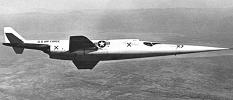
On Oct. 15, 1952 the Douglas X-3 Stiletto makes its first flight, featuring a slender fuselage and long tapered nose, incl. the first use of titanium in major airframe components to achieve Mach 2.63 (1K mph); too bad, it fails to even achieve Mach 1, and is retired on May 23, 1956.
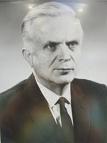
In 1952 Evanston, Ill.-born aeronautical engineer Richard Travis Whitcomb (1921-2009) of Langley Memorial Aeronautical Lab in Va. discovers the Whitcomb Area Rule for Supersonic Aircraft Design, which reduces drag and increases speed without additional power by narrowing the fuselage at the wing location, revolutionizing supersonic aircraft; he later invents winglets for transport planes to increase the lift-to-drag ratio; too bad, the Area Rule was actually discovered by Junkers engineer Otto Frenzl in 1943, and the Germans had already used it in their designs, but since they lost WWII, a Yankee gets the credit?
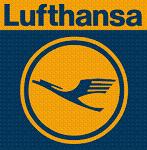
On Jan. 6, 1953 Lufthansa Airlines is founded in Cologne, Germany, based on the pre-war Deutsche Luft Hansa A.G. (Deutsche Lufthansa), founded in Berlin in 1926 and closed in 1945 after Germany's defeat; its first domestic flights are flown on Apr. 1, 1955, followed by internat. flights on May 15; since flights to Berlin are barred until 1989, Frankfurt Airport develops into their major hub.

On Feb. 8, 1953 a USAF B-29 equipped with the new triple-gyro inertial guidance system designed by MIT engineer Charles Stark Draper (1902-) takes off from Bedford, Mass. carrying eight MIT profs., and flies for 12 hours without anyone touching the controls before the crew take over 10 mi. from Los Angeles, Calif. and lands it.
A greedy Korean pilot proves that Soviet jets suck? On Apr. 26, 1953 in Korea two U.S. Air Force B-29s drop leaflets behind enemy lines offering a $50K reward and political asylum to any pilot delivering an intact MiG-15 to the U.S. for study; on Sept. 21 North Korean pilot Lt. Ro Kim Suk (No Kum Sok) lands his MiG-15 at Kimpo Air Base outside Seoul, collecting the reward after claiming to have been unaware of it; flight tests reveal that the MiG-15 is not supersonic, causing the Kremlin to cover its tracks by ordering development of a next-gen. Mach 2 craft with a 20 km ceiling.
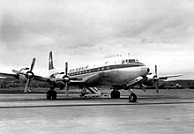
On May 18, 1953 Douglas Aircraft makes the first flight of its $1.5M Douglas DC-7 propeller plane, introducing it on Nv. 29, and selling 338 by 1958 while dragging its feet on a private jet.

On May 18, 1953 Jacqueline "Jackie" Cochran (1906-80) becomes the first woman to break the sound barrier as she pilots a North Am. F-86 Canadair Sabrejet over Rogers Dry Lake, Calif. at an avg. speed of 652.337 mph, only six years behind Chuck Yeager.
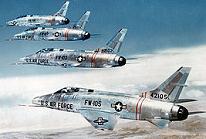
On May 25, 1953 the North American F-100 Super Sabre makes its first flight, becoming the U.S. Air Force's first supersonic jet fighter, introduced on Sept. 17, 1954, then retired in 1971 and adopted by the Air Nat. Guard until 1979.
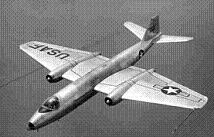
On July 20, 1953 the $1.25M USAF Martin B-57 Canberra tactical bomber, based on the English Electric Canberra makes its first flight, becoming the first U.S. jet bomber to drop bombs in combat; 403 are built by 1983.
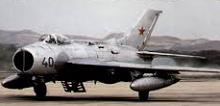
On Sept. 18, 1953 the single-seat twin-engine MiG-19 "Farmer" is first flown, and introduced in the Soviet Union in Mar. 1955, becoming their first supersonic jet fighter; it is phased-out in the 1960s for the MiG-21 after producing 2,172 in the Soviet Union and 8K in Red China.
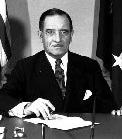

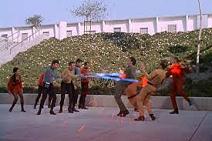
In Sept. 1953 after USAF secy. #3 (since Feb. 4) Harold Elstner Talbott Jr. (1888-1957) dumps Hughes Aircraft for its mismanagement of the AIM-4 Falcon project, TRW Inc. in Redondo Beach, Calif. is founded by disgruntled Hughes Aircraft employees Simon "Si' "Ramo (1913-) and Dean Everett Woolridge (1913-2006) as the Ramo-Wooldridge Corp., leading the development of the first U.S. ICBM as systems contractor; in Oct. 1958 it merges with Thompson Products of Cleveland, Ohio to form Thompson-Ramo-Wooldridge Inc.; in June 1960 the U.S. Congress forces its Space Technology Labs (STL) to split off as the nonprofit Aerospace Corp., in El Segundo, Calif., which works for the USAF Space and Missile Systems Center and Nat. Reconnaisance Office; In 1961-3 TRW produces 319K M-14s for the U.S. military; in July 1965 STL is renamed TRW Systems Group; in 1970 it forms the Credit Data Group to compete with Dun and Bradstreet; in 1978 it acquires ESL; TLW works for TRW in 1979-81; in 1996 it spins-off Credit Data to form Experian; on July 1, 2002 it is acquired by Northrop Grumman; Microsoft founder Bill Gates gets his first break at age 15 debugging energy-grid control software for TRW; the season 1 "Star Trek" episode #29 Operation Annihilate! (Apr. 13, 1967) is filmed on Feb. 15, 1967 on the campus-like grounds of TRW in Redondo Beach, Calif.

In 1953 Austrian engineer Eugen Sanger (Sänger) (1905-64) proposes photon propulsion for spaceships, eventually resulting in the Solar Sail.
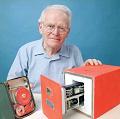
In 1953 Australian inventor David Warren (1925-2010) invents the Black Box Flight Data Recorder.
In 1953 Rocket Chemical Co. invents WD-40 for use on Atlas rockets; it is supplied in an aerosol can in 1958.
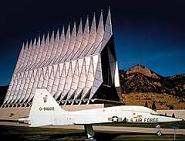
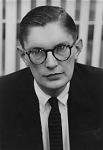
On Apr. 1, 1954 the U.S. Air Force Academy is established at Lowry AFB in Denver, Colo., modelled after West Point and Annapolis; it opens next year; on Aug. 29, 1958 it moves to Colorado Springs, Colo. In 1962 the cool space-age Air Force Academy Cadet Chapel (begun 1956), designed by Chicago architect Walter A. Netsch (1920-2008) is built on the campus of the new Air Force Academy in Colo. Springs, Colo., near Pikes Peak; on Sept. 22 $3.5M Falcon Stadium opens on the Air Force Academy campus, and the first football game is played with Colo. State U.; the authorities make the mistake of opening the whole campus to visitors, and 85K show up, creating the biggest traffic jam in Colo. history; USAF Gen. Jimmy Stewart gives a speech.
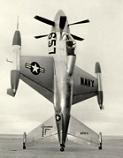
On June 16, 1954 the Lockheed XFV "Salmon" tailsitting VTOL aircraft makes its first flight; after it proves too slow, and operable only by highly-experienced pilots, it is retired after 32 flights.
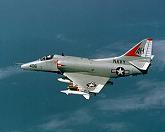
On June 22, 1954 the $860K single-seat carriar-capable lightweight 600 mph Douglas A-4 Skyhawk attack jet makes its first flight; 2,960 are produced by 1979.
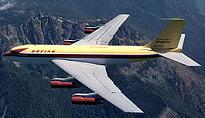
On July 15, 1954 the Boeing 367-80 ("Dash 80") jetliner makes its maiden flight from Renton Field S of Seattle, Wash., attaining the unheard of speed of 575 mph, becoming the prototype for the KC-135 Stratotanker and the 707 - what's next?
In Oct. 1954 after U.S. physicists advise Ike that they believe they can design an A-bomb small enough to be carried by a missile, and he approves the development of a nuclear ballistic missile, Nazi V-2 scientist Wernher von Braun (1912-77) (who becomes a U.S. citizen in 1955) is put in charge of a joint Army-Navy venture, beginning with souping up the Army's Redstone missile to send a 5-lb. satellite into orbit, which is called Project Orbiter; an Internat. Geophysical Year panel meeting in Rome proposes that the U.S. launch a satellite during the IGY, and U.S. policy makers decide that it must not appear to have military purposes, causing Project Orbiter to be cancelled in mid-1955.
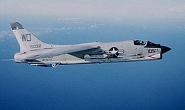
On Mar. 25, 1955 the single-engine supersonic Mach 1.2 carrier-based Vought V-8 Crusader (originally F8U) air superiority jet fighter with variable-incidence wing makes its first test flight, becoming the last U.S. fighter aircraft with guns as the primary weapon, causing it to become known as "the Last of the Gunfighters"; after being introduced in Mar. 1957, it goes on t be used in the Vietnam War; 1,219 are produced by 1976.
On June 12, 1955 the 4-seat single-engine fixed-wing (high wing) Cessna 172 Skyhawk makes its first flight, selling 44K units in 1956-2019 and becoming the most successful aircraft in history (until ?); on Dec. 4, 1958 Robert Timm and John Cook take off in their Cessna 172 from McCarran Airfield in Lss Vegas, Nev., and land there on Feb. 7, 1959 after 64 days 22 hours 19 min. 5 sec., becoming a world record for refueled flight endurance.


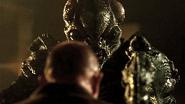
In July 1955 Lockheed's single-jet U-2 "Dragon Lady" high-alt. spy plane for the CIA, designed by Ishpeming, Mich.-born engineer Clarence Leonard "Kelly" Johnson (1910-90) is tested at Groom Lake (Area 51) AKA Homey Airport KXTA) in S Nev. (83 mi. NNW of Las Vegas), with a large-format camera by Perkin-Elmer that has a resolution of 2.5 ft. (76cm) at an alt. of 60K ft.; Area 51 becomes known for its top secret activities, spawning UFO/ET conspiracy theories; the CIA finally publicly acknowledges its existence on June 25, 2013; watch video; watch video; watch video. On Feb. 26, 2011 Jason Connery's 51 debuts on SyFyChannel, starring Bruce Boxleitner, John Shea, and Jason London, about the USAF allowing some reporters access to Area 51 in Nev. just as vicious shape-shifting Patient Zero busts out.
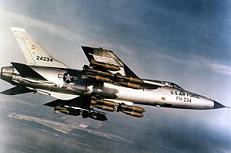
On Oct. 2, 1955 the Republic F-105 Thunderchief "Thud" Mach 2 supersonic fighter-bomber makes its first flight, going on to perform strike bombing missions in the Vietnam War until high losses cause it to be removed from combat, after which a 2-seat Wild Weasel version is developed to attack SAM sites.
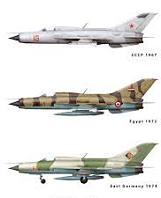
On Feb. 14, 1956 the MiG-21 "Fishbed" "Balalaika" supersonic jet fighter makes its first flight, entering service in 1959, going on to become a hit in the Commie world, with 11,496 produced by 1985, becoming the most-produced supersonic jet aircraft in history.
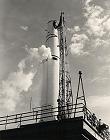
In Aug. 1956 Douglas Aircraft Co. tests the 65-ft.-long 8-ft.-diam. PGM-17 Thor intermediate range (1.5K mi.) ballistic missile, which is deployed in England in late 1958 (until Aug. 1963), spawning the Douglas Delta missile.
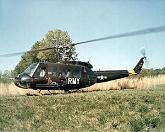
On Oct. 20, 1956 the 2-blade single turboshaft engine Bell UH-1 Iroquois "Huey" (originally HU-1) military heli makes its first flight, turning the Vietnam War into a Huey war, with 7K seeing service; 16K are built by 1986.
On Nov. 8, 1956 M.D. Ross and M.L. Lewis of the U.S. reach the stratosphere (22.8 km) in a balloon.
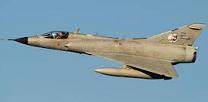
On Nov. 17, 1956 the single-seat single-engine Dassault Mirage III fighter makes its first flight, entering service in 1961 and becoming known for its maneuverability in close range dogfighting, becoming popular in France, Australia, Israel, South Africa, Argentina, Pakistan et al.; 1,422 are built.
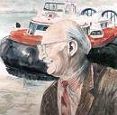
In 1956 British mechanical engineer Sir Christopher Sydney Cockerell (1910-99) invents the Hovercraft, with an annular ring and skirt to maintain an air cushion.
On June 5, 1957 a U.S. Army Jupiter missile travels 1.5K mi. from Cape Canaveral in the first successful U.S. test of an intermediate range ballistic missile (IRBM).


On July 1, 1957-Dec. 31, 1958 the Internat. Geophysical Year (IGY) is participated in by by 67 nations, who cooperate to sponsor research on the year's high solar sunspot activity; the idea was originated in 1950 by scientists James Alfred Van Allen (1914-2006) of the U. of Iowa, and British geophysicist Sydney Chapman (1888-1970) on England; the Antarctic is the initial focus of activity with Operation Deep Freeze (1955-6) using a network of 60 research stations; on Sept. 18, 1958 the temp. in the Antarctic reaches a record low of -102.1 F (-74.5 C).
On Aug. 1, 1957 the U.S. and Canada reach an agreement to create the North Am. Air Defense Command (NORAD).





Red Moon Rising, Or, The long Eisenhower Siesta ends, and now the smug Americans become desperate to keep up with the Russkies or be buried? On Oct. 4, 1957 the Soviet Union launches the beach ball-sized (22.8 in. diam.), 183.9 lb. Sputnik I, the first manmade satellite on a R-7 Smyorka (Russ. "seven") (SS-6 Sapwood) missile, going on to orbit the Earth every 96.2 min.; Operation Moonwatch, organized by Am. astronomer Fred Lawrence Whipple tracks its movements; on Oct. 4 the Soviet news agency Tass announces it, with the soundbyte "Artificial earth satellites will pave the way for space travel, and it seems that the present generation will witness how the freed and conscious labor of the people of the new Socialist society turns even the most daring of man's dreams into reality"; Americans, who had believed that all Russians did was steal their inventions are shocked; Khrushchev utters the soundbyte "People of the whole world are pointing to the satellite... saying that the U.S. has been beaten"; Clare Boothe Luce calls the Sputnik's beep an "outer-space raspberry to a decade of American pretensions that the American way of life is a gilt-edge guarantee of our national superiority"; after Pres. Eisenhower's Speech on Science in Nat. Security on TV on Nov. 7, the U.S. launches a massive $100B catch-up effort; TV speech on Nov. 7 by Pres. Eisenhower, the U.S. launches a massive $100B catch-up effort; Sputnik I is a sphere the size of a beach ball (22.8 in. diam.), weighing 183.9 lbs., and orbiting the Earth once every 96.2 min. (18K mph) at an apogee of 583 mi. to a perigee of 143 mi. while emitting 1 watt A-flat beeping sounds at 20-40 MHz from four radio antennas, launched from a Russian rocket with 200K lbs. of thrust, which is all far better than the planned U.S. Vanguard project, a 21.5 lb. satellite designed to be lifted to a 300 mi. orbit with a 27K lb. thrust rocket; the course of Sputnik takes it over most of the inhabited Earth so that as many people as possible can see it with binoculars, shifting 4 deg. a day, and purposely designed so that Americans are the last to be able to view it (Oct. 20); the batteries wear out after three weeks; no sooner does that happen than on Nov. 3 cone-shaped 1,129.29 lb. Sputnik II is launched, orbiting at 1,056 mi. alt., filled with scientific instruments, along with a female part-Samoyed terrier named Kudryavka (Russian for Little Curly), later changed to Laika (1954-7) (Russian for Barker) (who runs out of oxygen and dies within two days, er, that was the coverstory, she really died of overheating within hours, which isn't revealed until 2002), scaring Americans that the Commies will get to the Moon first and attack Earth from it?; Sputnik II reenters Earth's atmosphere on Apr. 14 after 162 days in orbit; as the news breaks, Ike is returning from a West Point class of 1915 reunion and homecoming football game, and when he refuses to rush into the space program, his public approval plummets from 71% to 57%; the death of Laika pisses-off the Nat. Canine Defence League (founded 1891); the brains behind the Soviet space program is Lt. Gen. Kerim Aliyevich Kerimov (1917-2003), whose identity is kept secret for decades; by the year 2000 over 25K objects are put into orbit, of which almost 9K remain orbiting; Sputnik eventually falls onto the middle of 8th St. in Manitowoc, Wisc., where a brass ring is placed.



On Nov. 7, 1957 Pres. Eisenhower appoints MIT pres. (since 1948) James Rhyne Killian Jr. (1904-88) as his special asst. for science and technology (missile czar); he disputes Ike's policy of keeping all rocket programs under the Defense Dept. to avoid costly duplication of effort; when Nixon backs Killian, Ike responds that he'd rather have "one good Redstone nuclear-armed missile than a rocket that could hit the moon", adding, "We have no enemies on the moon" - that we know of? On Feb. 4, 1958 Pres. Eisenhower creates the Killian Committee to reorganize America's ballistic missile and space program; U.S. Sen. (D-Tex.) Lyndon Johnson leads the Congressional effort to establish the Nat. Aeronautics and Space Admin. (NASA) (big bucks for Texas) on July 16, signed by Ike on July 29; the 1959 NASA Logo is known as the "meatball"; it is replaced in 1975-2 by the NASA "worm" Logo.
On Dec. 6, 1957 a bowling ball-sized "American Sputnik" ends up on the ground emitting 108 MHz beeps after the 3-stage Navy Vanguard Martin TV-3 (Test Vehicle 3) (dubbed by the press the "flopnik", "sputternik" "dudnik", etc.) rocket explodes on the launchpad at Cape Canaveral in front of numerous spectators and press, after the U.S. had touted in advance how it was catching up with the Russkies; "It's our worst humiliation since Custer's last stand."

On Dec. 17, 1957 the U.S. successfully test-fires the General Dynamics SM-65 Atlas ICBM for the first time; it becomes operational in Oct. 1959 with a warhead 100x as power as the one dropped over Nagasaki in 1945.
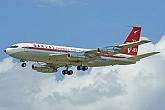
On Dec. 20, 1957 the $4.3M Boeing 707 long-range narrow-body 4-engine swept-wing jet airliner with podded engines makes its first flight, becoming the first commercially successful jetliner, dominating the industry in the 1960s and ushering in the Jet Age; it is introduced in Oct. 1958 by Pan Am.; 1,010 are produced by the time it is discontinued in 1979.
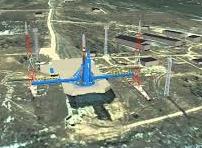
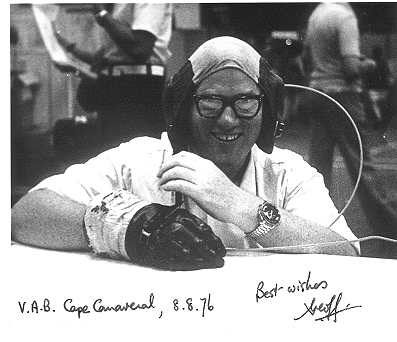
In 1957 Plesetsk Cosmodrome in Arkhangelsk Oblast 500 mi. N of Moscow (120 mi. S of Arkhangelsk) is begun as a launch site for ICBMs; it becomes operational in Dec. 1959, and is kept secret until English physics teacher Geoffrey E. Perry (1927-2000) and his students figure it out in 1966 from analysis of Cosmos 112 satellite data, which is pub. by the New York Times in Dec. 1966, after which the Soviet Union finally admits its existence in 1983 despite explosions in 1973 and 1980.

On Jan. 31, 1958 the U.S. enters the Space Age by successfully launching its first satellite into orbit, 31-lb. Explorer (Futura) 1, followed on Mar. 5 by Explorer 2 (which fails to reach Earth orbit), and on Mar. 26 by Explorer 3 (Gamma 1) (launched in conjuction with the IGY); meanwhile on May 15 the Soviets launch the 7K-lb. Sputnik III, but the U.S. follows on July 26 with Explorer 4, allowing Am. physicist James Alfred Van Allen (1914-2006) of the U. of Iowa to discover the two doughnut-shaped Van Allen Radiation Belts around Earth using Geiger counters placed aboard; in Sept. 2012 a third ring between the other two briefly appears; the Van Allen Radiation Belts of highly-charged particles will turn into X-rays when they hit metal, making it impossible for humans to travel through it, leading to the conclusion that the Apollo lunar landings were faked?

On Mar. 25, 1958 after the first unit is rolled out on Oct. 4, 1957 (Sputnik I launch day), the $3.5M delta-winged Mach 1.98 Avro Canada CF-105 Arrow interceptor makes its first flight; too bad, on Feb. 20, 1959 (Black Fri.) it is cancelled after only five are built, and Avro goes out of biz in 1962.
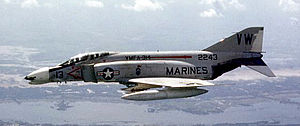
On May 27, 1958 the tandem 2-seat twin-engine all-weather long-range supersonic Mach 2.2 McDonnell Douglas F-4 Phantom II interceptor-fighter-bomber makes its first flight, being adopted by the U.S. Navy in 1960, later by the U.S. Marine Corps and U.S. Air Force.
On Aug. 23, 1958 the U.S. Federal Aviation Act of 1958 goes into effect, establishing the U.S. Federal Aviation Administration (FAA) to regulate civil aviation.
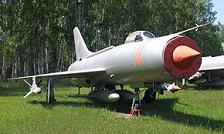
On Dec. 25, 1958 the delta wing cigar-shaped Sukhoi Su-11 "Fishpot-C" interceptor aircraft with circular nose intake and powerful Oryol (Eagle) (Skip Spin) radar makes its first flight; too bad, after being introduced in 1964, it proves unable to combat low-flying aicraft, and only 108 are built by 1983.
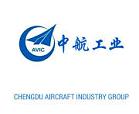
In 1958 the Chengdu Aircraft Industry Group (originally the Chengdu State Aircraft Factory No. 132 Aircraft Plant) in Pandaland Chengdu, Sichuan Province, China is founded to supply military aircraft.
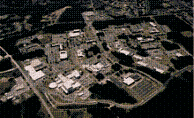
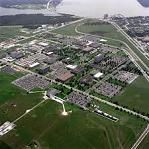
On Mar. 1, 1959 the NASA Goddard Space Flight Center in Greenbelt, Md. 6.5 mi. NE of Washington, D.C. is established by renaming the Beltsville Space Center in honor of rocket pioneer Robert H. Goddard (1882-1945), going on to manage Project Vanguard and Project Mercury until it gets to big, causing NASA to establish the Manned Spacecraft Center in "Space City" Houston, Tex. on Nov. 1, 1961, being renamed the Lyndon B. Johnson Space Center (JSC) on Feb. 19, 1973.

On Mar. 3, 1959 after several failed attempts since 1958, the U.S. launches Pioneer 4 at Woomera on a Juno II rocket vehicle, becoming the first successful U.S. probe, passing within 60km of the Moon on Mar. 4 before losing contact on Mar. 6, and eventually going into orbit around the Sun - the total eclipse of my heart?
On Apr. 9, 1959 NASA announces the selection of America's first seven Mercury astronauts, all veteran test pilots aged 32-37, and all white, Protestant, small town natives, and fathers, incl. Scott Carpenter, Gordon Cooper, John H. Glenn Jr., Gus Grissom, Wally (Walter M.) Schirra Jr., Alan Shepard, and Donald "Deke" Slayton; all except ? have crew cuts.
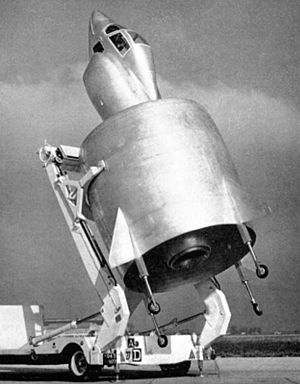
On May 6, 1959 the Nord Aviation SNECMA C.450 Coleoptere (Coléoptère) (Fr. "beetle") VTOL aircraft with an annular wing makes its first flight; too bad, it crashes on its 9th flight on July 25 and the project is cancelled.
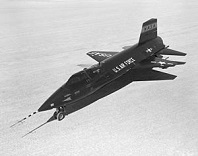
On June 8, 1959 the hypersonic rocket-powered North Am. X-15 rocket plane makes its first flight, and goes on to achieve speeds as high as Mach 6.72 (4,520 mph) in Oct. 1967 before being retired after 199 flights in Dec. 1968, becoming a manned powered aircraft speed record (until ?).
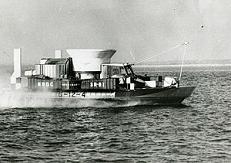
On July 25, 1959 the Saunders-Roe SR.N1, the first civilian hovercraft crosses the English Channel in 20 min.; in Dec. the Duke of Edinburgh talks them into letting him fly it, and he flies it too fast, dishing in the bow, creating the "Royal Dent".
On Oct. 7, 1959 the Soviet space probe Luna 3 takes the first photos of the dark side of the Moon.
On Oct. 10, 1959 Pan Am begins offering regular commercial jet flights around the world.
On Oct. 15, 1959 a 163K lb. 4-engine Convair B-58A Hustler (first supersonic bomber, test-flown in 1956) flies 1,680 mi.from Seattle, Wash. to Carswell AFB in Tex. with one subsonic air refueling in 70 min. at an avg. speed of 1,320 mph, becoming the first sustained Mach 2 flight.
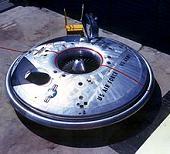
On Nov. 12, 1959 the secret flying saucer-like Coanda Effect Avro Canada VZ-9 Avrocar VTOL aircraft makes its first flight; too bad, after it fails to deliver expected performance, Project Y is cancelled in Sept. 1961.
On Dec. 6, 1959 the U.S. launches Pioneer 3, which is aimed at the Moon but only makes it to 102.36km alt. before falling back to Earth.
On Dec. 19, 1959 Pres. Eisenhower delivers his taped Christmas Peace Message
to the world on shortwave via the Project SCORE (Signal Communications Orbit Relay Equipment)
satellite (launched Dec. 18) (world's first comm satellite), becoming the first voice beamed in from space.
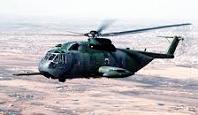
In 1959 the twin-engine Sikorsky S-61R (HH-3E Jolly Green Giant) (HH-3F Pelican) transport and search and rescue heli makes its first flight, entering service in 1961 (until ?).
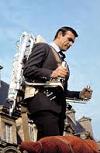
Early in the 1960s the Bell Rocket Belt is created for the U.S. Army, using compressed nitrogen to shoot hydrogen peroxide over a catalyst that turns it into superheated steam to supply thrust.
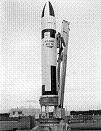
On Jan. 7, 1960 a U.S. 2-stage solid fuel Polaris UGM-27 A1 Missile is test-launched from Cape Canaveral; on Apr. 14 one is launched underwater for the first time; on July 20 a missile is successfully test-fired into the air from a submarine, after which it becomes known as a fleet ballistic missile (FBM); in 1961 Holy Loch in the Firth of Clyde in Argyll, Scotland becomes a Polaris base (until 1992).
On Mar. 11, 1960 the U.S. launches the NASA Pioneer 5 (Pioneer P-2) (Thor Able 4) spin-stabilized space probe from Cape Canaveral into solar orbit between Earth and Venus; it goes on to confirm the existence of interplanetary magnetic fields.

On Apr. 1, 1960 TIROS-1, the first weather satellite is launched from Cape Canaveral - coverstory for a spy satellite?
On Apr. 13, 1960 after launching the prototype Transit 1A in Sept. 1959, which fails to reach orbit, the U.S. Navy launches Transit 1B (NAVSAT) (NNSS) from Cape Canaveral on a Thor-Ablestar rocket, becoming the first satellite navigation system, used by Polaris ballistic missile subs, surface ships, and hydrographic-geodetic surveying; the satellites provide continuous navigation service starting in 1964, later allowing civilian use; last satellite is launched in 1988, and it is retired in 1996.

On Apr. 19, 1960 the $16M twin jet mid-wing all-weather Grumman A-6 Intruder attack aircraft makes its first flight, entering service in 1963 for the U.S. Navy and Marine Corps and replacing the Douglas A-1 Skyraider; 693 are built by the 1993; it is retired by the USMC on Apr. 28, 1993, and the U.S. Navy on Feb. 28, 1997; on May 25, 1968 the $20M Northrop Grumman EA-6B Prowler electronic warfare version makes its first flight, entering service in July 1971; 170 are produced by 2015.


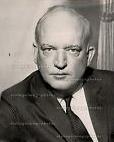
On May 1, 1960 (Sun.) (Mayday) (6 weeks after Lee Harvey Oswald arrived in the Soviet Union) the U.S. Lockheed U-2 spy plane (sortie #4154 of Operation Overflight, commanded by Col. William M. Shelton, leaving at 3:26 a.m. Moscow time) piloted by beefy crew-cut Air Force 1st lt. Francis Gary Powers (1929-77) (salary $30K/year) is shot down at 65K ft. alt. by 14 Soviet S-75 Dvina (SA-2 Guideline) SAMs over the Soviet Union near Degtyarsk (near Sverdlovsk) (the Russian Ruhr) in the Urals (1.3K mi. from the Soviet-Afghan border) on a spy run from Badaber (near Peshawar), Pakistan to Bodo, Norway (1st overflight since Apr. 9, 2nd U-2 overflight since last Oct., and 1st attempt to cross the entire Soviet Union, personally approved by Eisenhower). Powers wasn't shot down but defected? The incident causes the B-70 Valkyrie high altitude Mach 3 nuclear bomber program (begun in 1957) to be cancelled in 1961, causing the B-52 to be forced to keep on keeping on. Powers was flying U-2 #360, known to be a "dog" with faulty fuel tanks, and waits 56 min. on the flight line waiting for final White House approval. He parachuted onto a large state farm and is held by farmers at gunpoint until the KGB arrived. On May 5 (Thur.) after NASA issued a coverup report about an aircraft missing N of Turkey, claiming pilot oxygen difficulties, Khrushchev reports the true incident in a 3.5 hour speech in the Supreme Soviet, calling it a "spy plane", after which the same day the U.S. responded by lying that it was a weather observation plane that may have "strayed" over the Russian border, not realizing that the plane had been captured almost intact along with its photographic equipment after Powers failed to activate the self-destruct mechanism before parachuting out. On May 7 Khrushchev sprung his trap, revealing that Powers was captured "alive and kicking", and had made a "complete confession", calling his mission "an agressive act" by the U.S. "aimed at wrecking the summit", with the soundbyte "Now just look how many silly things [the Amerikanskies] have said", raising a big stink which causes lasting injury to U.S.-Soviet relations. Powers was carrying the "silver dollar" containing an instant-death curare-tipped needle, but whimped out and didn't use it. On May 6 Lincoln White of the U.S. State Dept. issues an official coverup, with the soundbyte : "There was absolutely no deliberate intention to violate Soviet airspace, and there has never been.". On May 9 Khrushchev warned that any country allowing U.S. spy planes will be attacked by Soviet rockets. On May 11 Ike belatedly assumed personal responsibility for all U-2 flights, and K-Shoe responded by displaying the plane wreckage and uttering the soundbyte "The Russian people would say I was mad to welcome a man who sends spy planes over here." On May 15 Ike suspends future U-2 flights. On May 16 the Four-Nation Summit U.S., U.K., Soviet Union, France) in the Elysee Palace in Paris begins, but collapses after Khrushchev accuses Ike of "treachery" and "bandit" acts, demands an apology, then demands it be postponed for 6 mo. and walks out on both shoes; on May 17 at 5 p.m. the summit ends after Ike refuses to apologize; on May 18 Khrushchev tells a press conference attended by 3K that the U.S. is "thief-like", "piratical", and "cowardly"; on July 8 the Soviets charge Powers wth espionage, and he pleads guilty on Aug. 17, saying "I have a sackful of pride", er, "I am sincerely sorry that I had anything to do with this"; on Aug. 19 he is convicted, and sentenced to 10 years in prison, then after negotiations by Brooklyn atty. James Britt Donovan (1916-70) is exchanged on Feb. 10, 1962 after 17 mo. for English-born German-Russian Soviet spy Col. Rudolf Abel (real name Vilyam Genrikhovich "Willie" Fisher) (1903-71) at the Glienicke Bridge in Potsdam, Germany, after which he works for Lockheed as a test pilot until being laid off in 1970; Powers' survival pack, incl. 7.5K rubles plus jewelry to give women ends up on display with the plane wreck at the Central Museum of the Armed Forces in Moscow, although a small piece of the plane is returned to the U.S.; on his way home Ike visits Lisbon to honor Portugal's 71-y.-o. dictator (since 1931) Antonio de Oliveira Salazar (1889-1970); did the Military-Industrial Complex stab Ike in the back to kill the summit by feeding U-2 radar secrets to the Soviets through Office of Naval Intelligence (ONI) double-agent Lee Harvey Oswald, who worked at Atsugi U-2 Air base in Japan before defecting to the Soviet Union, and is later allowed to return to the U.S. without arrest and then later used as the patsy when the MIC bumps JFK off?
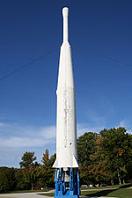
On May 13, 1960 the Douglas Delta satellite launching vehicle makes its first launch, which is a failure, after which it goes on to have a 95.3% success rate (15 failures out of 325 launches) in the Vanguard, Agena, Echo, and other programs.
On July 1, 1960 the Marshall Space Flight Center (MSFC) in Huntsville, Ala. ("Rocket City, USA") is created from the Redstone Arsenal, and dedicated on Sept. 8 by Pres. Ike.


On Aug. 12, 1960 Echo 1, the first balloon communications satellite is launched by the U.S. from Cape Canaveral, and the first 2-way telephone conversation by satellite takes place over it on Aug. 13, after which coast-to-coast U.S. TV transmissions become possible; Am. inventor Gilmore Tilmen Schjeldahl (1913-2002) pastes together the 100-ft. sphere coated with Mylar and vaporized aluminum with his own adhesive.
On May 22, 1960 the U.S. launches Midas 2, the first infrared spy satellite, followed by CORONA, the first photo spy satellite on Aug. 18; first in a series (ARGON, LANYARD).
On July 29, 1960 a NASA rocket test in Cape Canaveral witnessed by the Mercury astronauts fails to lift off, going up in a fireball.

In 1960 the Bussard Ramjet, a rocket that uses electromagnetic fields to compress hydrogen until it fuses is proposed by physicist Robert W. Bussard (1928-2007) as a method of spacecraft propulsion - why do I keep picturing a space buzzard?
In 1960 the govt. of Lebanon begins developing its Cedar rocket line, which is discontinued after a warning letter from French pres. Charles de Gaulle that it threatens French army missiles.
On May 25, 1961 Pres. Kennedy gives his Man on the Moon Speech to a joint session of Congress, asking Americans to help put an American (white, straight, male, non-Communist) on the Moon and return him safely by the end of the decade; former pres. Eisenhower utters the soundbyte "Anybody who would spend $40B in a race to the Moon for national prestige is nuts."

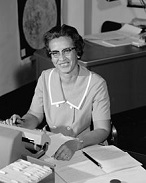
On Jan. 31, 1961 37 lb. Ham the Chimp (Astrochimp) (1956-83) becomes the first animal put by the U.S. into orbit aboard Mercury-Redstone 2 to test the Project Mercury capsule; African-Am. mathematician Katherine Coleman Goble Johnson (1918-) works as a computor for NASA calculating trajectories, going on to work for the Apollo and Space Shuttle programs, receiving a Pres. Medal of Freedom in 2015.
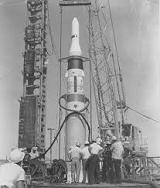
On Feb. 1, 1961 the U.S. makes its first test-launch of the LGM 30-A Minuteman 1 ICBM,; the system becomes operational next year, followed by the Minuteman 2 in 1965, and the Minuteman 3 in 1970; as of 2015 there are 450 Minuteman-III missiles deployed in Malmstrom AFB, Mont., Minot AFB, N.D., and Warren AFB, Wyo.; in 2018 50 are put in reserve.
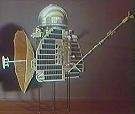
On Feb. 12, 1961 the Soviet Union launches the Venera 1 probe towards Venus; on Feb. 19 contact is lost; on May 19-20 it becomes the first manmade object to pass by Venus, passing within 100K km then entering heliocentric orbit, and the mission is a dud.

On Apr. 12, 1961 (100th anniv. of the opening of hostilities at Ft. Sumter) orange-spacesuited Soviet cosmonaut Yuri Alekseyevich Gagarin (1934-68) becomes the first human to orbit the Earth in his 6-ton spacecraft Vostok (East) 1, making a single orbit at 17.5K mph in 108 min. at alt. 203 mi. while humming a patriotic song with the lines "The Motherland hears, the Motherland knows/ Where her son flies in the sky"; after welcoming him back to Earth, Nikita Khrushchev says that Gagarin "didn't see any God up there", which was misquoted as by Gagarin himself.

The original 15 minutes of fame? On May 5, 1961 (Fri.) after uttering "Shepard's Prayer" ("Don't fuck up, Shepard") ("Oh Lord, don't let me fuck up"), Navy cmdr. Alan Bartlett Shepard Jr. (1923-98) (known for impersonating Jose Jimenez) becomes the 2nd person and 1st American in space as he makes a 15-min. suborbital flight down the Atlantic Missile Range on a Redstone Rocket ("every part of this ship was built by the low bidder"), reaching an alt. of 116.5 mi. in the Project Mercury Freedom 7 capsule launched from Cape Canaveral, Fla.; after waiting too long on the launchpad and peeing in his spacesuit, he utters the immortal soundbyte "What a beautiful view!"; on his return, he is greeted as a nat. hero and given parades in New York City, Washington, D.C., and Los Angeles, and meets with Pres. Kennedy; he uses a bar of Dial brand soap, which ends up in the Smithsonian; too bad, in early 1964 he is diagnosed with Meniere's Disease, causing him to be removed from flight status until May 1969 after corrective surgery, when he becomes the oldest astronaut in the U.S. space program, then gets to command Apollo 14 in 1971, becoming the 5th person to walk on the Moon.

On July 21, 1961 U.S. Air Force Capt. Virgil Ivan "Gus" Grissom (1926-67) becomes the 2nd Americanski to rocket into a suborbital pattern around the Earth, flying for 16 min. on the Mercury-Redstone 4 Liberty Bell 7; too bad, the capsule sinks in the Atlantic Ocean 302 mi. from Cape Canaveral when the hatch blows prematurely, and bobbing Grissom is rescued by heli; the capsule is not recovered until 1999, and Grissom's career is tainted by allegations that he screwed the pooch, although he claims the explosive bolts went off by themselves in an equipment malfunction.

On Aug. 6-7 , 1961 Soviet cosmonaut Gherman Stepanovich Titov (1935-2000) makes 17 orbits around the Earth in 25.6 hours in Vostok 2, smashing Gagarin's record of one - think back to when you were a child, what did you dream of as you fell asleep, space travel?
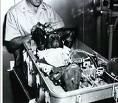
On Nov. 29, 1961 Enos the Chimponaut is launched from Cape Canaveral aboard the Mercury-Atlas 5 spacecraft, orbiting the Earth 2x before returning for bananas.
On Dec. 12, 1961 Oscar 1 (Orbiting Satellite Carrying Amateur Radio) (built by U.S. radio hams) is launched by the U.S., becoming the first privately-built satellite to be launched.
In 1961 the Martin Marietta Corp. is founded in Bethesda, Md. via the merger of the Glenn L. Martin Co. and the Chicago-based paint manufacturer American-Marietta; in 1995 it merges with Lockheed Corp. to form Lockheed Martin.


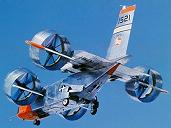
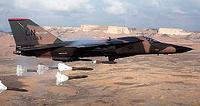
It's time to shop at checkered auto parts? On Jan. 4, 1962 Pres. Kennedy appoints Texas-born Frederick Herman "Fred" Korth (1909-98) as U.S. Navy secy. #56 (until Nov. 1, 1963) after Texas-born John B. Connally Jr. (appointed on Jan. 25, 1961) resigns last Dec. 20 and Texas-born LBJ lobbies him in; within weeks Korth gets the X-22 V/STOL contract switched from Boeing of Seattle, Wash. to Bell Aerospace Corp. of Ft. Worth, Tex.; too bad, after a prototype crashes on Aug. 8, 1966, the program is cancelled; meanwhile the $6.5B joint Navy-Air Force swing-wing TFX/F-111 Aardvark program is up for bids, and with his and LBJ's lobbying, General Dynamics Co. of Ft. Worth, Tex. gets the award on Oct. 24, despite Boeing Co. of Washington state having a better design and bidding $100M lower; Korth served as pes. of the Continental Nat. Bank in Fort Worth, Tex., which financed the Gen. Dynamics plant, and before that he was the lawyer for Edwin A. Ekdahl, hubby of Lee Harvey Oswald's mother Marguerite Frances Ekdahl during their divorce; too bad, on Dec. 12 when LBJ visits GD for their big celebration, Texas Dem. rep. (1955-89) James Claude "Jim" Wright Jr. (1922-), representing the Texas 12th District based in Ft. Worth slips and utters the soundbyte: "You have to have friends and they have to stick with you through thick and thin even if you do have merit on your side", causing the U.S. Senate to begin an investigation. On Nov. 20, 1963 a Senate investigating committee holds hearings on the TFX (Tactical Fighter Experimental) Fighter Plane Scandal where General Dynamics had received a $7B contract in 1962; on Nov. 22, 1963 they hear testimony about an alleged $100K cash payoff to vice-pres. LBJ, but after the assassination of JFK there is no follow-up - hmmm, JFK, Cuba, the U.S.S.R., Oswald, Marcello, General Dynamics, LBJ... let's make a movie?




The original Dudley Doright Eagle Scout Lily-White Straight Married American Hero? On Feb. 20, 1962 (Tue.) U.S. Marine Lt. Col. John Herschel Glenn Jr. (1921-2016) becomes the first American to orbit the Earth (3x) in the Mercury Atlas 6 Friendship 7 capsule in a mission lasting 4 hr. 55 min. 23 sec., reaching an alt. of 162 mi., and uttering the soundbyte "Oh, that view is tremendous!"; the pop. of Perth, Australia turn their lights on and off simultaneously as he passes over them, and he thanks them; he claims to see firefly-like objects swarming over his capsule; after a "Landing Bag Deployed" light starts blinking, causing the heat shield to be suspected of being loose, the planned seven orbits are scrapped, and he has to reenter without jettisoning the retro rockets so they will hold his heat shield on; on Mar. 1 he is given a ticker tape parade in New York City (3,529 tons of ticker tape); he is given a 2nd ticker tape parade on June 18, 1999; Samuel Shenton (-1971), founder of the Flat Earth Society (1956) sends Glenn a telegram: "OK wise guy"; in Jan. 1964 6 weeks after the assassination of personal friend JFK he retires from NASA to go into politics.
On Feb. 23, 1962 the European Space Agency (ESA) is formed by 12 Euro countries.
On Apr. 26, 1962 the NASA Ranger 4 spacecraft crash-lands on the Moon.

On Apr. 26, 1962 the Lockheed A-12 "Archangel" "Oxcart" "Cygnus" spy plane, designed by Clarence "Kelly" Johnson, using titanium sold unknowingly by the Soviet Union makes its first flight, becoming the first Stealth Aircraft; it can fly at 2K mph and take photos at 90K ft. alt. that can resolve 1 ft. objects on the ground; on May 22, 1967 it is put into service as the successor to the U-2, arriving at Kadena Air Base in Okinawa to begin Operation Black Shield over North Vietnam; too bad, after close calls with North Vietnamese SAMs it is decommissioned next June.
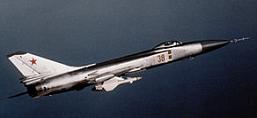
On May 30, 1962 the twin-engine supersonic Sukhou Su-15 "Flagon" interceptor makes its first flight, replacing the Su-9 and Su-11 when introduced in 1965, continuing in use until the fall of the Soviet Union; on Sept. 1, 1983 one shoots down Korean Air Lines Flight 007; 1,290 are produced by 1996.

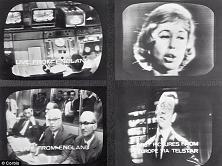
On July 10, 1962 (night) the $3M 170 lb. Bell Labs Telstar I, the world's first privately-funded commercial communication satellite is launched from Cape Canaveral, Fla., carrying 12 voice circuits with a combined throughput of 768K bps; on July 23 (2:58 p.m.) the first transatlantic TV broadcast, relayed from Andover, Maine to Goonhilly, Cornwall and Pleumeur-Boudou, France is seen by millions, starting with a split screen of the Statue of Liberty and Eiffel Tower, followed by Walter Cronkite saying "Good evening Europe. This is the North American continent live via AT&T Telstar, July 23, 1962"; although the first images were supposed to be of JFK in a trans-Atlantic press conference in Washington, D.C. on nuclear testing and the devaluation of the dollar, he isn't ready on time so a ML ballgame between the Philadelphia Phillies and Chicago Cubs at Wrigley Field actually shows Ernie Banks first, with BBC broadcaster Richard Dimbleby uttering the soundbyte: "There is a face - it's a man's face!" (and yes, it's black), becoming the first expore to baseball for many Europeans; after Philly's Tony Taylor flies-out and Johnny Callison hits a single to right field at the top of the 3rd inning, the signal is switched to JFK's press conference, which is already in the Q/A phase; at 6:00 p.m. after live scenes from the U.S.-Mexico border at Juarez, Niagara Falls, the World's Fair in Seattle, Wash., the U.N. HQ in New York City, a chat with NASA astronauts at Cape Canaveral, Fla., a rehearsal of Shakespeare's "Macbeth" at the Shakespeare Festival in Stratford, Ont., a close-up of Mount Rushmore in S.D. and the singing of "The Battle Hymn of the Republic" by the Mormon Tabernacle Choir, the Euro program opens with live shots of Big Ben in London and a welcome from Brussels, Belgium by Richard Dimbleby of BBC-TV; in Nov. Telestar's electronics fail due to radiation, then come back online until Feb. 21, 1963; meanwhile this year the U.K. transmits the first color TV pictures via satellite.

On July 22, 1962 the NASA Mariner 1 rocket bound for Venus has to be blasted apart when it begins veering off course several min. after launch; the problem is later traced to the omission of a hyphen from the flight computer's program; the failed project costs $18.5M - the most expensive hyphen so far in history? On Aug. 27, 1962 the U.S. launches the Mariner (Mariner-Venus) 2 space probe for Venus, the first successful Mariner craft; on Dec. 14 it passes within 20K mi., reporting surface temps of 800 deg. - a little too hot for a Roman bath?
On Aug. 31, 1962 Pres Kennedy signs the U.S. Communications Satellite Act of 1962, creating the Communications Satellite Corp. (COMSAT) to handle space communications on a for-profit basis under govt. supervision.
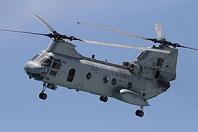
In Aug. 1962 the twin turboshaft engine all-weather day-night Boeing Vertol CH-46 Sea Knight medium-lift tandem rotor transport heli makes its first flight, being adopted by the U.S. Marine Corps until being replaced by the MV-22 Osprey in 2007, and by the U.S. Navy until being replaced by the MH-60S Knighthawk in the early 2000s; Canada, Japan, Sweden, and Saudi Arabia also adopt it.
On Sept. 12, 1962 JFK gives his We Choose to Go to the Moon Speech at Rice U. in Houston, Tex., promising to deliver genuine Yankee astronauts to its surface by the end of the decade to beat the pesky Soviets and prove that Capitalism is better than Communism, causing Socialist NASA and Capitalist Hollywood to work together to film the ultimate simulation on a secret soundstage to push off on the public via the TV networks as a top national security priority? It worked didn't it? The juice from the Sputnik coup was reversed, and Commie bragging rights in the non-Commie world went kaput, leading to the ultimate collapse of the Soviet Union in another 20 years, all for only umpteen billion. Naw, they really did it, they wouldn't want to weather the backlash, it's just that no other country has been able to go there since to verify it, a country we can trust to tell the truth like China - check back with me later.
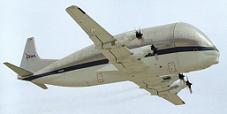
On Sept. 19, 1962 the wide-bodied Aero Spacelines Pregnant Guppy (B377PG) cargo plane makes its first flight, made from a modified Boeing 377 Stratocruiser to carry space program components, inspiring other giant cargo aircraft incl. the Airbus Beluga and Boeing Dreamlifter.
On Sept. 29, 1962 the Canadian Alouette I satellite (first built outside the U.S. and Soviet Union) is launched from Vandenberg AFB, Calif.
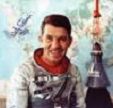
On Oct. 3, 1962 NASA astronaut Walter Marty "Wally" Schirra Jr. (1923-2007) blasts off from Cape Canaveral, Fla. aboard the Mercury Atlas Sigma 7 on a 9-hour flight, becoming the first American in space and the 3rd to orbit the Earth, making six orbits in a 9 hour 13 min. 11 sec. flight, and uttering the soundbyte "I'm having a ball up here drifting."
On Nov. 17, 1962 Washington Dulles Internat. Airport in Loudoun and Fairfax Counties, Va. 26 mi. W of downtown Washington, D.C. opens, named after U.S. secy. of state #52 John Foster Dulles (1888-1959), with a main terminal designed by Eero Saarinen, becoming the busiest internat. airport in the mid-Atlantic area outside New York City (60K passengers/day).


On Apr. 23, 1963 after being refused by Continental Airlines in 1957 and going all the way to the U.S. Supreme Court, who unanimously decides that states can make interstate airlines stop racial discrimination in hiring practices, Marlon D. Green (1929-2009) becomes the first African-Am. pilot hired by a major U.S. passenger airline, working for Continental Airlines in 1965-78; meanwhile David Harris (1935-) becomes the first African-Am. pilot in the U.S. at Am. Airlines in 1964-94.

On June 14, 1963 the Soviets launch Vostok 5 carrying cosmonaut Valery Fydorovich Bykovsky (1934-) for a 5-day 81-orbit space mission, setting a solo flight space endurance record that stands until ?.

On June 16-19, 1963 Soviet cosmonaut (amateur parachutist) Lt. Valentina Tereshkova (1937-) becomes the first woman in space aboard Vostok VI, orbiting 48x in 78 hours, more than double U.S. astronaut Gordon Cooper's total (22); weeks later Khrushchev attends her wedding; she also becomes the first non-test pilot to orbit.
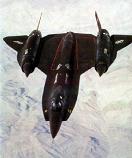
On Aug. 7, 1963 the 2-seat Lockheed YF-12 prototype interceptor, based on the single-seat Lockheed A-12 makes its first flight, going on to set records of 2K+ mph and 80K+ ft. alt. until surprassed in 1976 by the SR-71.


On Oct. 7, 1963 after Hannibal, Mo.-born William Powell "Bill" Lear (1902-78), co-inventor in the 1920s of the car radio founds Lear Jet Corp. to produce jets for private and business use, it test-flies the $650K 8-passenger 560 mph Learjet 23, a modified Swiss-built military jet fighter, becoming the first mass-produced business jet. In 1964 he leads a consortium that invents 8-Track Tape players; in 1966 they are offered as factory equipment in Fords (first available in Sept. 1965), followed by GM and Chrysler vehicles in 1967; by 1970 the Muntz 4-track system is kaput.
On Oct. 18, 1963 France launches Felicette (Félicette), becoming the first cat in space; on Oct. 24 after she survives, a 2nd cat is launched, but doesn't make it.
On Dec. 13, 1963 U.N. Gen. Assembly Resolution 1962, titled "Declaration of Legal Principles Governing the Activities of States in the Exploration and Uses of Outer Space" is approved, declaring that outer space is free for exploration by all states on an equal basis, that exploration and use should be carried on for the benefit of all mankind, that it is not subject to nat. appropriation by claim of sovereignty or occupation, that astronauts shall be regarded as envoys of mankind, etc.

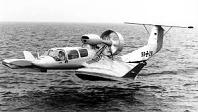
In 1963 the 2-seat Collins Radio Co. Collins X-112 ground effect vehicle for use over water, designed by Munich, Germany-born designer Alexander Martin Lippisch (1894-1976) makes its first flight in Cedar Rapids, Iowa; it is followed by the RFB X-113, which makes its first flight in Oct. 1970; it is followed by the 7-seat RFB Aerofoil X-114, which can switch off the ground effect, which makes its first flight in Apr. 1977.
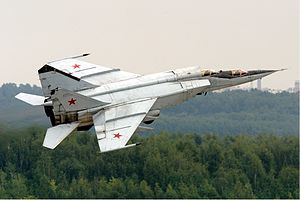
On Mar. 6, 1964 the supersonic Mach 2.83 Soviet Mikoyan-Gurevich MiG-25 "Foxbat" recon-interceptor makes its first fleet, entering service in 1970, becoming the 2nd fastest military aircraft in service after the SR-71, shocking the U.S. into making improvements to the F-15 Eagle; in 1976 Soviet pilot Viktor Belenko defects to the U.S. via Japan, allowing his plane to be reverse-engineered; 1,190 are manufactured by 1984.
On Apr. 8, 1964 the U.S. launches the 2-man Gemini 1 unmanned as a test.
On May 22, 1964 Pres. LBJ gives his Great Society Speech at the U. of Mich., with the soundbyte: "The Great Society rests on abundance and liberty for all. It demands an end to poverty and racial injustice, to which we are totally committed in our time. But that is just the beginning. The Great Society is a place where every child can find knowledge to enrich his mind and to enlarge his talents. It is a place where leisure is a welcome chance to build and reflect, not a feared cause of boredom and restlessness. It is a place where the city of man serves not only the needs of the body and the demands of commerce but the desire for beauty and the hunger for community. It is a place where man can renew contact with Nature. It is a place which honors creation for its own sake and for what it adds to the understanding of the race. It is a place where men are more concerned with the quality of their goals than the quantity of their goods. But most of all, the Great Society is not a safe harbor, a resting place, a final objective, a finished work. It is a challenge constantly renewed, beckoning us toward a destiny where the meaning of our lives matches the marvelous products of our labor"; too bad, the huge cost causes the govt. to start cutting the space program - great taste and fewer calories too?
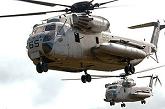
On Oct. 14, 1964 the 2-engine U.S. Marine Corps Sikorsky CH-53 Sea Stallion heavy-lift transport heli makes its first flight, being adopted by Israel, Germany, Mexico, and Iran; on Mar. 15, 1967 the $40M U.S. Air Force Sikorsky MH-53 Pave Low "Super Jolly Green Giant" long-range search and rescue heli makes its first flight, with 72 produced by 1970, being replaced in Sept. 2008 by the CV-22B Osprey; in Mar. 1974 the $24M 3-engine Sikorsky Ch-53E Super Stallion makes its first flight.
On Nov. 5, 1964 the NASA Mariner 3 flyby craft is launched from Cape Kennedy; too bad, it fails to achieve a trajectory around Mars and ends up in distant orbit around the Sun.

On Dec. 21, 1964 the $10.3M supersonic medium-range variable-swept wing General Dynamics F-111 Aardvark interdictor-tactical attack aircraft makes its first flight, featuring electronic warfare capabilities, terrain-following radar, and afterburning turbofan engines; after being introduced on July 18, 1967, it is phased-out by the end of the cent. after 563 are manufactured, being replaced by the F-15E Strike Eagle and B-1B Lancer. On Mar. 28, 1968 the U.S. loses its first aircraft in Vietnam, an F-111 - first that it will admit to?
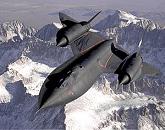
On Dec. 22, 1964 the long-range high-alt. supersonic Mach 3+ Lockheed SR-71 "Blackbird" "Habu" strategic recon aircraft, designed by the Lockheed Skunk Works makes its first flight, becoming the world's fastest air-breathing manned aircraft in 1976, and a forerunner of stealth aircraft; 32 are built by 1998, with none lost to enemy action and 12 lost to accidents.
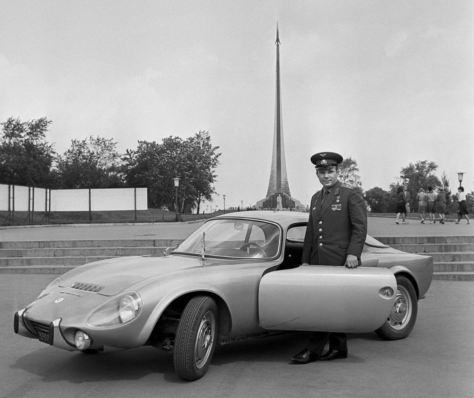
In 1964 the 361 ft. (110m) titanium Monument to the Conquerors of Space is erected in Moscow to celebrate Soviet space explorers; its base houses the Memorial Museum of Cosmonautics (1981).


On Mar. 23, 1965 Gemini 3 blasts off from Cape Kennedy carrying USAF Capt. Virgil Ivan "Gus" Grissom (1926-67) (first American to fly into space twice) and U.S. Navy. Capt. John Watts Young (1930-) (first flight by an astronaut who's not one of the original seven), becoming the first U.S. 2-person space flight, making the first manual change of orbit altitude and plane, and the first controlled lifting reentry; after his previous disaster, Grissom names the craft the (Unsinkable) Molly Brown, and Young sneaks a corned beef sandwich into orbit, given to him by Wally Schirra, who purchased it at Wolfie's Restaurant and Sandwich Shop at the Ramada Inn in Cocoa Beach, Fla., causing a congressional uproar; after this NASA doesn't allow astronauts to name their spacecraft - or fly right after St. Patrick's Day?

On Apr. 6, 1965 Early Bird is launched, becoming the first commercial comm satellite; on May 2 it transmits its first TV signal across the Atlantic.
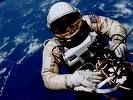


On June 3, 1965 lily-white Tex.-born USAF Lt. Col. Edward Higgins White II (1930-67) becomes the first American to make a spacewalk during the flight of Gemini 4, during which he loses a glove, which stays in orbit at a speed of 28K km per hour for 1 mo., becoming the most dangerous garment in history?; on June 7 Gemini 4 splashes down after completing 62 orbits - the reason Michael Jackson, no?

On Aug. 21, 1965 Gemini 5 blasts off from Cape Canveral atop a Titan V, carrying astronauts L. Gordon Cooper (first person to go on two orbital missions) and gap-toothed Charles "Pete" Conrad Jr. (1930-99); it splashes down on Aug. 29 after proving new long-lasting fuel cells and messing up a practice space rendezvous, after which Conrad calls it "eight days in a garbage can", during which they establish a space endurance record of 190 hours, 56 min., travelling 3.3M mi.
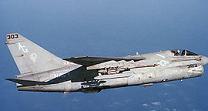
On Sept. 26, 1965 the $2.85M carrier-capable subsonic LTV A-7 Corsair II light attack aircraft makes its first flight, entering service in Feb. 1967 and replacing the Douglas A-4 Skyhawk; 1,569 are produced by 1984.




On Dec. 15, 1965 Gemini 6A, carrying Walter Marty "Wally" Schirra Jr. (1923-2007) and Thomas Patten Stafford (1930-), and Gemini 7 (launched Dec. 4), carrying Frank Frederick Borman II (1928-) and James Arthur "Jim" Lovell Jr. (1928-) make the first space rendezvous 180 mi. above the Earth, maneuvering to within 10 ft. of each other; the Gemini 7 crew splashes down on Dec. 18 after setting a space endurance record and being allowed to wear soft spacesuits and hang around in long johns.
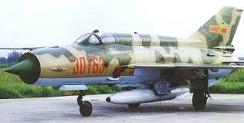
In Jan. 1966 the Chinese Chengdu J-7, a version of the Mig-21 makes its first flight; 2.4K are produced by 2013.
On Feb. 3, 1966 the unmanned Soviet spacecraft Luna (Lunik) 9 makes the first controlled rocket-assisted landing on the Moon and takes some nice pictures to send home to Mother Russia, putting the Soviets ahead of the U.S. in the Moon Race; meanwhile the Soviet Venera 3 spacecraft (launched Nov. 16, 1965) heads for Venus in an attempt at a double coup on the Yanks, but on Mar. 1 it crash-lands on Venus, becoming the first spacecraft to land on another planet, although its comm systems fail and send no data.


On Mar. 16, 1966 Gemini 8, with astronauts David Randolph Scott (1932-) and Neil Alden Armstrong (1930-2012) performs the first docking operation in space with an Agena Target Vehicle, then malfunctions, requiring the first emergency landing by a U.S. spacecraft on Mar. 17.

On Mar. 31, 1966 the Soviet Union launches Luna (Lunik) 10, which on Apr. 4 becomes the first manmade object to enter lunar orbit (or any heavenly body), playing the "Internationale" for the 23rd Communist Party Congress; it quits transmitting on May 30 after 460 orbits.


On June 3, 1966 Gemini 9A is launched from Cape Canaveral, carrying astronauts Thomas Patten "Tom" Stafford (1930-), and Eugene Andrew "Gene" Cernan (1934-2017); on June 5 Cernan completes the 2nd U.S. spacewalk (2 hours 7 min.), landing on June 6 after rendezvousing 3x with the Agena target vehicle.

On June 8, 1966 legendary NASA test pilot Joseph Albert "Joe" Walker (1921-66) and USAF test pilot Maj. Carl Cross are killed when Walker's Mach 3 XB-70 Valkyrie prototype collides with Cross' F-104 Starfighter during a photo shoot; in 1963 Walker made two X-15 flights beyond 100km alt., qualifying him as an astronaut, becoming the only powered spaceplane flights past the magic threshold until SpaceShipOne in 2004.
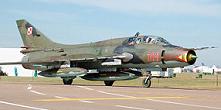
On Aug. 2, 1966 the variable-sweep wing Sukhoi Su-17 "Fitter" fight-bomber makes its first flight, entering service in 1970, becoming popular throughout the Eastern Block, Middle East, and Latin Am. as the Su-20 and Su-22; by 1990 2,867 are produced.

On Aug. 2, 1966 the variable-sweep wing Sukhoi Su-17 "Fitter" fight-bomber makes its first flight, entering service in 1970, becoming popular throughout the Eastern Block, Middle East, and Latin Am. as the Su-20 and Su-22; by 1990 2,867 are produced.


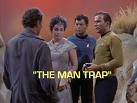
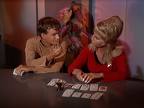



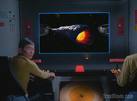
I'm a PC and I'm 8 years old? On Sept. 8, 1966 (Thur.) Star Trek: The Original Series, created by Tex.-born Eugene Wesley "Gene" Roddenberry (1921-91) debuts on NBC-TV for 79 episodes (until Apr. 4, 1969) with The Man Trap, starring Jeanne Bal (1928-96) as a shape-shifting salt-sucking space siren, unveiling a new technology-based Jesus-and-Muhammad-free futuristic leftist Jewish kingdom of heaven combined with a mostly white Wagon Train in Space show about the 23rd cent. voyages of the faster-than-light USS Enterprise NCC-1701, featuring Canadian Jewish actor William Shatner (1931-) as straight womanizing swashbuckling Capt. James Tiberius Kirk (born in Riverside, Iowa), the Capt. Horatio Hornblower of Space, who is so good at his job that he's allowed to break the rules, incl. sex with blacks, browns, yellows, greens, blues, non-humans, anything they can sign an acting contract with; Jewish-Am. actor Leonard Nimoy (1931-2015) plays his 2nd in command, pointy-eared half-human half-Vulcan half-Salmon super-smart Science officer Spock (blood type T-negative) (only mates once every 11 years) (likes to put his hand in the shape of the Hebrew letter shin because in real life he's Jewish); Ga.-born actor DeForest Kelly (1920-79) plays liquor-pouring Southern-drawling Dr. Leonard "Bones" McCoy, and Canadian actor James Doohan (1920-2005) plays Scottish engineer Scotty, who is the real brains of the ship, staying safely behind while the reckless captain and crew go beaming into danger and he takes the credit for superhuman repair work by inflating repair time estimates while swigging Scottish whiskey; on Sept. 15 episode #2 Charlie X stars Robert Hudson Walker Jr. (1940-), son of Robert Walker Sr. and Jennifer Jones as a space orphan raised by aliens who gets his first crush on a woman, Capt. Kirk's yeoman Janice Rand, played by Grace Lee Whitney (1930-), and can't grow up fast enough to avoid using his superhuman powers to destroy the ship until his alien parents intervene and take him back; in real life, Walker's mom Jennifer Jones cheated on his daddy then dumped him in 1945 for producer David O. Selznick, causing daddy to go nuts and become an alcoholic and have an early death in 1951, affecting him, while Whitney in real life was an orphan, and is cut from the show in the first season so that Kirk could have a guest babe each episode, causing her to spiral down also; episode #3 Where No Man Has Gone Before stars Gary Lockwood (1937-) as Lt. Cmdr. Gary Mitchell, who develops super-ESP when the Enterprise is driven over the edge of the galaxy; episode #9 Dagger of the Mind (Nov. 3) is about the Neural Neutralyzer Device; episode #28 The City on the Edge of Forever (Apr. 6, 1967), written by Harlan Ellison and featuring a working Historyscope called the Guardian of Forever plus yummy Joan Henrietta Collins (1933-) as Am. Depression Era social worker Edith Keeler wins a Hugo Award; episode #29 (last of season 1) Operation Annihilate! (Apr. 13, 1967) (filmed Feb. 15, 1967) is set on the campus-like grounds of TRW Inc. in Redondo Beach, Calif; episode #35 The Doomsday Machine (Oct. 20, 1967) about a planet-eating machine is written by Norman Robert Spinrad (1940-); Theodore Sturgeon (Edward Hamilton Waldo) (1918-85) writes the screenplays for "Shore Leave" (1966), and "Amok Time" (1967), in which he invents the Vulcan Pon Farr mating ritual, the Vulcan benediction "Live long and prosper", and the Vulcan hand symbol; he also creates the Prime Directive; the show creates a new social class of fans called Trekkies (Trekkers), coined by Arthur William Saha (1923-99), incl. TLW, who took to emulating a Spock haircut in 9th grade (1967); too bad, after some go overboard, they get a bad name as nerdy escapist losers without a life; it's really an attempt to prepare youth for the New Age Movement?

On Sept. 12, 1966 Gemini 11, carrying astronauts Charles "Pete" Conrad Jr. (1930-99) and Richard Francis Gordon Jr. (1929-) blasts off from Cape Canaveral, docks with an Agena target vehicle on Sept. 12, and returns on Sept. 15.
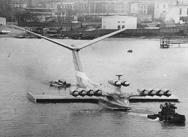
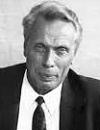
On Oct. 16, 1966 the Caspian Sea Monster (KM) ground effect vehicle (ekranoplan) makes its first flight, featuring 10 engines and Y-shaped tail, designed by Rostislav Evgenievich Alexeyev (1916-80); too bad, it sinks in 1980.
On Nov. 26, 1966 the NASA Lunar Orbiter 2 is launched, sending back more photos of the Moon.
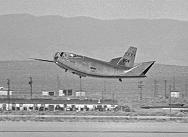
On Dec. 22, 1966 the Northrop HL-10 heavyweight inverted airfoil lifting body aircraft makes its first flight to evaluate its reentry ability for space; only one is built.
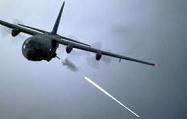
In 1966 the heavily-armed long-endurance low alt. (7K ft.) Lockheed AC-130 ground-attack gunship, based on the C-130 Hercules makes its first flight; the AC-130U Spooky features a 5-barrel 25mm 2K-4K rounds/min. GAU-12 Equalizer Gatling gun for mowing down gooks; 47 are built by 2015.
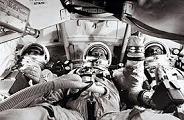

On Jan. 27, 1967 NASA astronauts Virgil Ivan "Gus" Grissom (b. 1926), Edward Higgins White (b. 1930), and Roger Bruce Chaffee (b. 1935) burn to death on the launchpad in their Apollo 1 space capsule, which was charge with 100% oxygen; Grissom was assassinated for speaking out about the failings of the Apollo program, serving as a warning to future astronauts to keep their mouths shut?
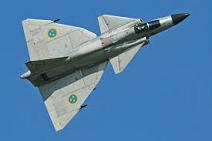
On Feb. 8, 1867 the single-engine single-seat med.-range Saab 37 Viggen ("thunderbolt", "tufted duck") multirole combat aircraft makes its first flight, becoming the first canard design to be built in quantity; after introduction on June 21, 1971, 329 are built by 1990.
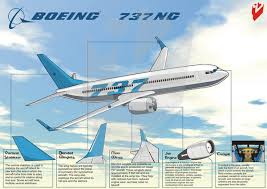
On Apr. 9, 1967 the 115-passenger (6 abreast) 94-ft.-long narrow-body Boeing 737 twin-engine jet makes its first flight from Seattle, Wash., entering service next Feb. 10 with Lufthansa and becoming its most popular model, with 8K ordered by 2008; meanwhile after the Boeing 707 kills its market, on Apr. 28 McDonnell Douglas Corp. (MDC) is created by a takeover of civilian-oriented Douglas Aircraft (founded 1921) in Long Beach, Calif. by military-oriented McDonnell Aircraft Corp. (founded 1939) in St. Louis, Mo.; in May 1976-Dec. 1978 young whippersnapper with peach fuzz on his cheeks TLW works for their Astronautics div. in Huntington Beach, Calif. as an engineer; in 1984 it acquires Hughes Helicopters; in 1996 it is acquired by Boeing.

On Apr. 23, 1967 taking advantage of the Jan. 27 NASA space capsule ground tragedy, Soyuz 1 is launched, and the Soviets once again best the Yanks as Vladimir Mikhailovich Komarov (b. 1927) becomes the first in-flight space casualty when he dies in a crash landing on Apr. 24 after the parachute lines release at 23K ft. and become snarled.
On June 12, 1967 the Soviet Venera 4 probe is launched, entering the atmosphere of Venus on Oct. 18 and parachuting down, conking out at 24.96 km alt. after determining that the hot atmosphere is mainly carbon dioxide and far denser than expected, causing fans of Immanuel Velikovsky to celebrate.
The day the gondola biz on Mars dries up On June 14, 1967 the U.S. launches Mariner 5 from Cape Kennedy on a flight to Venus, reaching within 2.6K mi. (4K km) and obtaining data consistent with the Soviet Venera 4 probe; meanwhile on July 14-15 Mariner 4 flies by Mars, taking the first close-up photos of the Red Planet (no evidence of canals), which are released on July 15; it later gets hit by micrometeorites from Comet D/Swift and loses contact on Dec. 21, 1967 - really shot down by madass Martians?
On Sept. 8, 1967 Surveyor 5 is launched by the U.S.; it lands near the Moon's equator on Sept. 10, using a mechanical claw for digging lunar soil and then performing radiological analysis on it.
On Oct. 10, 1967 after being ratified on May 19 by the Soviet Union, the Treaty of Principles Governing the Activities of States in the Exploration and Use of Outer Space, including the Moon and Other Celestial Bodies AKA the Outer Space Treaty (signed on Jan. 27 by the U.S., U.K., and Soviet Union) enters into force; by May 2013 104 countries incl. the Repub. of China (Taiwan) are party to the treaty, and another 26 have signed but not completed ratification.
On Nov. 18, 1967 the first-ever photo of the Earth from space is taken by the ATS-III weather satellite.
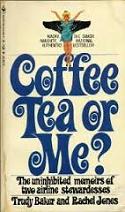
In 1967 Donald Bain (1935-), later known for the "Murder, She Wrote" series anon. pub. Coffee, Tea, or Me?, "The uninhibited memoirs of two airline stewardesses"; the alleged memoirs of lusty young stewardesses Trudy Baker and Rachel Jones, whom he cooks up while working in public relations for Am. Airlines, after which the airline hires two stewardesses to pose as the authors for book tours and TV appearances; spawns the sequels "The Coffee Tea or me Girls' Round-the-World Diary" (1970), "The Coffee Tea or Me Girls Lay It on the Line" (1972), and "The Coffee Tea or Me Girls Get Away From It All" (1974).
On Jan. 7, 1968 (1:30 a.m. EST) the U.S. launches Surveyor 7 from Cape Kennedy, Fla.; on Jan. 9 (8:05:36 p.m. EST) it makes the first-ever soft landing on the Moon 29 mi. N of Tycho Crater in the lunar highlands, analyzing the lunar soil and sending back 3,343 boring pictures; thus ends the boring U.S. unmanned lunar exploration program; meanwhile the increasingly Armageddon-like situation on Earth causes everybody to keep space in the back of their minds as humanity's only ultimate escape option?
On Apr. 4, 1968 the Apollo 6 mission is launched, becoming the 2nd and last unmanned test flight of the Saturn V launch vehicle.
On Apr. 7, 1968 the Soviet Union launches the Luna 14 lunar probe.
On Apr. 22, 1968 the U.N. Space Rescue Treaty is signed by the U.S., U.K., and Soviet Union at separate ceremonies.

On July 15-16, 1968 the first direct air service between the U.S. and Soviet Union since the end of WWII begins as a 4-jet Aeroflot Ilyushin 11-62, designed by Sergei Vladimirovich Ilyushin (1894-1977) flies to New York City, while two Pan Am Boeing 707s fly to Moscow.
Send the turtles to play rabbit for us? On Sept. 15-22, 1968 the Soviet spacecraft L-1 (Zond 5) (Probe 5), carrying turtles, flies, worms, and seeds becomes the first spaceship to loop around the Moon and return to Earth; it is recovered in the Indian Ocean.




On Oct. 11, 1968 Apollo 7, the first manned Apollo mission is launched from Cape Kennedy with astronauts Navy Capt. Wally Schirra Jr. (1923-2007) (only astronaut to fly on Mercury, Gemini, and Apollo), Air Force Lt. Col. Donn Fulton Eisele (1930-87), and civilian Ronnie Walter "Walt" Cunningham (1932-); it orbits the Earth 163x (260 hours), rendezvouses with a stage from the Saturan launch vehicle, and gives the first live telecast from a manned spacecraft on Oct. 14, featuring a sign reading "From the lovely Apollo Room high atop everything", followed by a view of New Orleans and Fla. before splashing down in the Atlantic Ocean on Oct. 22; astronauts first use the nitrogen-pressurized Space Pen, made by Fisher Space Pen Co. of the U.S.

On Oct. 25, 1968 the Soviet Union launches the Soyuz 2 spacecraft, followed on Oct. 26 by Soyuz 3, manned by Col. Georgi Timofeyevich Beregovoi (1921-95), who does rendezvous maneuvers with Soyuz 2 (200M or 650 ft. distance) and completes 64 orbits before landing in Russia on Oct. 30.
On Dec. 18, 1968 the Intelsat III-A (first in a new series) comm satellite is launched from Cape Kennedy.


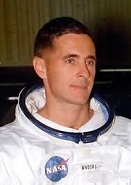
The Reverse Beagle Expedition of 1968? On Dec. 21, 1968 Apollo 8, the first U.S. manned mission to be propelled by the Saturn V launch vehicle and the first to orbit the Moon (first time that humans leave Earth's gravity) blasts off from Cape Kennedy, carrying Air Force Col. Frank Federick Borman II (1928-), Navy Capt. James Arthur "Jim" Lovell Jr. (1928-), and Air Force Maj. William Alison "Bill" Anders (1933-), reaching the Moon on Dec. 24 and giving a Christmas Eve Broadcast, where the crew takes turns quoting from the Bible Book of Genesis; after photographing the far side of the Moon for the first time, taking neat photos of Spaceship Earth, and making 10 lunar orbits, it returns, and on Dec. 27 makes a safe nighttime splashdown in the Pacific; Silly Putty (given to the astronauts by inventor Peter C. Hodgson in sterling silver eggs) is used to keep tools from floating away in space; "We came all this way to explore the Moon, and the most important thing is that we discovered the Earth" - take that, Charles Darwin?
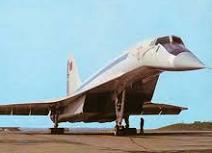
On Dec. 31, 1968 the Soviets use good old Communist industrial espionage to build and fly a supersonic aircraft, the Tu-144 "Charger", beating the capitalist Anglo-French Concorde; too bad, one crashes at the 1975 Paris Air Show, and it doesn't go into passenger service until Nov. 1, 1977, after which another one crashes in May 1978 in a test flight before delivery, grounding the passenger fleet after 55 flights; it remains in service as a cargo aircraft by 1983, for a total of 102 commercial flights.





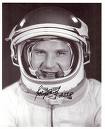
We can't deliver the Moon, but we can put on an acrobatics show? On Jan. 14, 1969 the Soviet Union launches Soyuz 4 carrying cosmonaut Vladimir Alexandrovich Shatalov (1927-); on Jan. 15 it launches Soyuz 5, carrying Boris Valentinovich Volynov (1934-), Alexei Stanislavovich Yeliseyev (1943-), and Yevgeni Vassilyevich Khrunov (1933-2000); on Jan. 16 the first space-docking of two spacecraft (Soyuz 4 and Soyuz 5) takes place in space, followed by the first space crew transfer in Earth orbit, to Soyuz 4; Soyuz 5 lands on Jan. 17. On Oct. 11 Soyuz 6 is launched carrying cosmonauts Georgi Stepanovich Shonin (1935-97) and Valery Nikolayevich Kubasov (1935-), followed on Oct. 12 by Soyuz 7, carrying Anatoly Vassilyevich Filipchenko (1928-), Vladislav Nikolayevich Volkov (1935-), and Viktor Vassilyevich Gorbatko (1934-), followed on Oct. 13 by Soyuz 8, carrying Vladimir Aleksandrovich Shatalov (1927-) and Alexei S. Yeliseyev (1943-), becoming the first triple launch; they orbit the Earth simultaneously until Oct. 18, doing who knows what (something about a future space lab), but never going to you know where, the Moon; Soyuz 6 cosmonauts perform the first space welding experiments.

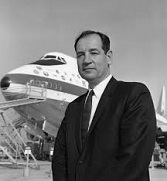
On Feb. 9, 1969 the Boeing 747, the world's first jumbo jet (world's largest airplane, twice as large as previous airliners), designed by Joseph F. "Joe" Sutter (1921-2016) makes its first test flight; on Dec. 2 it makes its public preview flight from Seattle to New York City carrying 191 passengers, mainly reporters; in 1966 Pan Am places an order for 25 of them, causing the other carriers incl. United Airlines, British Airways, British Airways, and KLM to follow suit; too bad, they carry from 342-490 passengers, and when they are full the terminal facilities are saturated, while most of the time they are full of empty seats, causing them to end up becoming unprofitable.
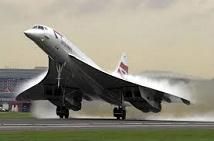
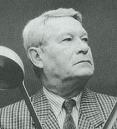

On Mar. 2, 1969 the turbojet-powered supersonic Mach 2.0 Anglo-French Aerospatiale-BAC Concorde makes its first test flight from Toulouse, followed by a test flight from an RAF base at Fairford, Gloucestershire on Apr. 9, and its first supersonic flight on Oct. 1; French food journalist Henri Gault (1929-2000) first uses the term "nouvelle cuisine" for low-cal haute cuisine food prepared by French chef (from Lyon) (pupil of Fernand Point) Paul Bocuse (1926-) et al. for the Concorde's maiden flight? On Jan. 21, 1976 the Concorde supersonic transport is put into commercial service by Air France and British Airways, with flights between Paris and Rio, and London and Bahrain; both airlines begin service to Washington, D.C. on May 24; no surprise, at 100 passengers max it never produces a profit, and is retired in 2003.
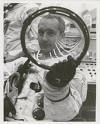


On Mar. 3, 1969 Apollo 9, the 3rd manned Apollo mission, carrying Air Force Col. James Alton McDivitt (1929-), Air Force Col. David Randolph Scott (1932-), and civilian Russell Louis "Rusty" Schweickart (1935-) blasts off from Cape Kennedy to test the Lunar Module with the first manned Apollo undocking, and returns on Mar. 13 after the crew sings "Happy Birthday" in space.
On Mar. 26, 1969 the Soviets launch Meteor 1, the first of dozens of weather satellites.
On Mar. 27, 1969 the Mariner 7 spacecraft is launched from Cape Kennedy to photograph Marilyn, er, Mars.
On Apr. 1, 1969 the V/STOL Hawker Siddeley Harrier enters service with the British RAF.



On May 18, 1969 Navy Cmdr. Eugene Andrew "Gene" Cernan (1934-2017), Air Force Col. Thomas Patten "Tom" Stafford (1930-), and Navy Cmdr. John Watts Young (1930-) blast off aboard Apollo 10, a "dress rehearsal" for the Apollo 11 lunar landing mission; the lunar module is named "Snoopy" and the command ship "Charlie Brown"; Cernan wears a Mickey Mouse watch; it attains lunar orbit on May 21 and makes 31 orbits; on May 22 (last orbit) Stafford and Cernon fly the Lunar Module to within 9.4 mi. (15.4 km) of the lunar surface; they return on May 26; as they fly over the Moon's dark side ceepy music is received, and covered-up until 2008.
On May 16, 1969 Soviet space probe Venera 5 lands on Venus; on May 17 Venera 6 enters Venus' atmosphere and sends back atmospheric data before being crushed; together they confirm that the planet is unfit for human habitation - they're already thinking of Siberia II?
On July 13, 1969 the Soviets launch the unmanned Luna 15 to the Moon; it crashes on July 22, rubbing a U.S. coup over the Soviets in the Moon race in the Moon's face?




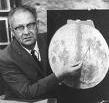

Glory Days, Glory Days, Glory Days pass you by? Just in time to make JFK's prediction come true, white IS right on the Moon on the anniv. of the creation of Washington D.C., the execution of Tsar Nicholas II, the installation of the first parking meters, and the first A-bomb explosion? On July 16, 1969 (Wed.) Apollo 11 blasts off from Cape You Know What, and goes into lunar orbit on July 19, then lands on the "place of magnificent desolation" (the Moon) on July 20 at 4:17 p.m. EDT in the Eagle landing module; as 600M worldwide watch on TV (Soviet TV snubs them), white, blonde-blue, straight Christian church-going Wapakoneta, Ohio-born WASP male Neil Alden Armstrong (1930-2012) (shoe size 9-1/2) (salary $30K a year) becomes the first human to set foot on the Moon at 10:56 p.m. EDT at Tranquility Base (total price tag $35B) after taking a recording of Antonin Dvorak's Symphony No. 9 in E minor, op. 95, B. 178 ("From the New World") with him; his first words are: "One small step for [a] man, one giant leap for mankind"; he rubs white-is-right in more by carrying a piece of fabric from the 1903 White, er, Wright brothers plane Flyer 1; Glen Ridge, N.J.-born U.S. Air Force Col. Edwin Eugene "Buzz" Aldrin Jr. (1930-) follows close behind, later uttering the soundbyte "Neil Armstrong was the first man to walk on the Moon, I am the first man to piss his pants on the Moon"; Presbyterian Aldrin performs a communion before Armstrong starts his walk, but due to a lawsuit by atheist Madalyn Murray O'Hair they black it out; meanwhile Rome, Italy-born U.S. Air Force Lt. Col. Michael "Mike" Collins (1930-) stays in orbit at 60-75 mi. in the Columbia Command Module (named after the cannon-fired Columbiad spacecraft in the 1865 Jules Verne novel "From the Earth to the Moon"), with the Mission Control Center in Houston, Tex. uttering the immortal soundbyte: "Not since Adam as any human known such solitude as Mike Collins during this 47 minutes of each lunar revolution when he's behind the Moon with no one to talk to except his tape recorder"; after the onboard computer fails from interference caused by the radar system as they are making their landing, Armstrong and Aldrin switch to manual control and display their hotdogging cowboy skills, landing with less than 1 min. of fuel left; the first moon walk confirms the prediction made in 1964 by Dutch-born U. of Ariz. astronomer Gerard Peter Kuiper (1905-73) (who helped identify lunar landing sites) that it would be "like crunchy snow"; Aldrin brings a copy of the 1941 poem A Prayer for Protection by Am. poet James Dillet Freeman (1912-2003), causing to be called the "Poet Laureate to the Moon"; after Aldrin plants a nylon flag on El Moono, and they have their romp, they return to Earth and splashdown on July 24 in the Pacific, and are brought aboard the USS Hornet (CV-12), then greeted personally by Pres. Nixon while on a round-the-world tour (July 23-Aug. 3) to try to get back some of the billions wasted, er, invested in a second industrial rev., er, wasted with some good Cold War propaganda; they then spend 65 hours inside the Mobile Quarantine Facility to prove they didn't acquire "Moon germs" under the July 16 U.S. Extra-Terrestrial Exposure Law, violation of which carries a 1-year sentence and $5K fine; Walter Cronkite makes CBS-TV the most-watched TV network for the missions, which follows through to Apollo 13; Thomas Otten Paine (1921-92) is the head of NASA in 1969-7 (first seven Apollo manned missions), and goes on to become pres. of Northrop Corp. in 1976-82; On Jan. 12 the front page of the New York Times reads "Believes Rocket Can Reach Moon", and on Jan. 13 an editorial disses the idea; on July 17 the New York Times pub. A Correction, apologizing for their Jan. 12, 1920 editorial, with the soundbyte: "Further investigation and experimentation have confirmed the findings of Isaac Newton in the 17th cent. and it is now definitely established that a rocket can function in a vacuum as well as in an atmosphere. The Times regrets the error"; David Threlfal of Preston, Lancashire, England is awarded a £10K check by bookmaker William Hill, Ltd. for a £10 bet in 1964 that a man would land on the Moon by 1971 at 1000 to 1 odds; millions believe the whole thing is a staged govt. hoax, pointing to the "rippling flag", absence of blast craters, shadows suggesting stage lighting, etc.; millions more that all that money was "dumped into space", or that it would have been better spent reclaiming the deserts, developing agriculture, affordable housing and medicine, or jump-jiving woo woo woo?; the landing was faked to help the U.S. win the Cold War?; the dir. of the fake landing was Stanley Kubrick, who was told to keep his mouth shut, but gave it away in highly coded form in his 1980 film "The Shining"?; too bad, the astronauts leave radar corner reflectors, which can be seen from Earth, proving they were there, or just that unmanned ships made it there?; on July 16, 2009 NASA admits that it lost its original hi-res moonwalk footage, but is hiring guess-who Hollyweird to restore it, stoking conspiracy theorists; in the 20-zeds the NASA Lunar Reconnaisance Orbiter (LRO) allegedly takes hi-def photos of the landers and astronaut tracks, but it can hardly be called an independent witness?; the jury will be out until an independent group visits the Moon and verifies the junk they allegedly left?; on Jan. 13, 2017 after the Chinese Lunar Rover produces no evidence of Apollo Moon landings, 200 officials of the Chinese Space Program pub. a petition in the Beijing Daily Express asking NASA for an explanation; zonk, that's fake news :); the Apollo 11 astronauts appear on the first U.S. stamp to depict a living American, issued later in the year; "For one crowning moment we were creatures of the cosmic ocean" (Aldrin); issued later in the year; "For one crowning moment we were creatures of the cosmic ocean" (Aldrin); "Slipped the surly bonds of Earth to touch the face of God" (Ronald Reagan); Aldrin later suffers from depression - buzzy Excedrin headache number? On Oct. 9 U.S. ambassador J. William Middendorf II presents Netherlands PM Willem Drees with a Moon rock from Apollo 11; too bad, in 2009 the Rijksmuseum announces that it is made of petrified wood from Ariz., giving conspiracy theorists a boost.



The U.S. rubs it in to the Soviet Union that they are being left behind by Capitalism and not burying it? On Nov. 14, 1969 the U.S. launches Apollo 12 from Cape Kennedy, carrying astronauts Alan LaVern Bean (1932-), Charles "Pete" Conrad Jr. (1930-99), and Richard Francis Gordon Jr. (1929-); on Nov. 19 Conrad and Bean make man's 2nd landing on the Moon in the lunar module Intrepid in the Ocean of Storms (Oceanus Procellarum), and make two 4-hour excursions in a 15-hour period (the first lunar jumping bean?); "Whoopee! Man, that may have been a small one for Neil, but that's a long one for me" (Conrad, said to win a $500 bet with Italian journalist Oriana Fallaci to prove that NASA doesn't script astronaut comments); lab instruments detect that the landing causes the Moon's surface to vibrate for 55 min., leading to theories that it is composed of many fragile rock layers; they splash down in the South Pacific on Nov. 24, and are recovered by the USS Hornet.
On Dec. 18, 1969 Airbus SE is founded in Blagnac, France by the govts. of France and Germany to compete with U.S. aircraft cos. incl. Boeing, McDonnell Douglas, and Lockheed; Spain joins in 1974, followed by Britain in 1979.
In 1969 Emnbraer aerospace conglomerate is set up by the govt. of Brazil, with HQ in Sao, Jose dos Campos, Sao Paulo State, becoming the #3 largest aircraft manufacturer after Airbus and Boeing, with Bombardier of Canada a close 4th.
On Jan. 21, 1970 after problems in the Pratt & Whitney JT-9D engines are revealed in Oct. 1969, causing a delay, during which four inflatable chutes are fitted allowing 80 passengers/min. to evacuate in an emergency, Pan Am Flight Two, the first regularly scheduled commercial flight of the 350-ton 400-passenger 2-story cabin Boeing 747 "Jumbo Jet" carrying 324 passengers begins in New York City, and ends in London's Heathrow Airport 6.5 hours later at 14:14 GMT after being delayed seven hours with technical problems, after which a faulty compressed air bottle in the emergency door causes a 4.5 hour delay during which 36 of 153 passengers transfer to other flights before the return trip to New York City takes off.
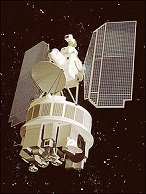
On Apr. 8, 1970 the NASA Nimbus 4 weather satellite is launched from Vandenberg AFB in Lompoc, Calif., sending data until Sept. 30, measuring the infrared emission spectra of the Earth's atmosphere, along with vertical temperature profiles and water vapor, solar UV radiation, and atmospheric ozone, revealing a V-shaped notch in the outgoing longwave radiation spectrum at 13-17 microns, caused by the 325 ppm CO2 content, which only cuts 2/3 of the way into the surface radiation spectrum, allowing 1/3 of the energy to escape into space?; the notch is saturated, meaning that higher CO2 concentrations can't increase the so-called Greenhouse Effect?
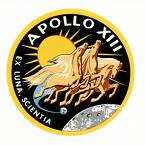
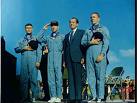
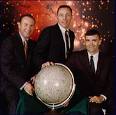

NASA saves its poor TV ratings with its own I am the Walrus Paul is Dead publicity stunt, based on a Friday the 13th horror script about three juniors mattingly loving a swigert in the haze? The Great Satan U.S. Scientific Establishment tries to disprove ancient superstition, only to prove it? On Apr. 11, 1970 (Sat.), 1970 at 13:13 CST unlucky number Apollo 13 blasts off from Cape Kennedy, with astronauts James Arthur "Jim" Lovell Jr. (1928-), Fred Wallace Haise Jr. (1933-), and John Leonard "Jack" Swigert Jr. (1931-82) (first bachelor) (all, as L. Ron Hubbard would say, "unlucky enough to get a Junior tagged on"?); Command Module pilot Swigert replaces Thomas Kenneth "Ken" Mattingly II (1936-), who is grounded for observation for German measles (rubella); on Apr. 13 at a distance of 321.86km (199,990 mi.) from Earth (80% of the way to the Moon) the #2 (of 2) onboard LOX tank ruptures after the Teflon-insulated wires providing electricity to the stirrer motor spark, crippling it and causing the planned Moon landing at Frau Mauro to be aborted, with Lovell uttering the immortal soundbyte: "Houston, we've had a problem", followed by "We've had a Main B Bus undervolt", making the TV ratings go from a lackluster 3M viewers to all cherries, pass the popcorn; after using the Lunar Module as a lifeboat and using the Moon as slingshot, and going through all kinds of hair-raising drills, incl. constructing a carbon dioxide filter from duct tape to avoid imminent suffocation, it returns safely on Apr. 17 to an enthusiastic worldwide viewing audience, splashing down in the Pacific at 12:07:41 CST (5 days 22 hours 54 min. 41 sec.), and being labelled a "successful failure"; how lucky for the Apollo program, flagging ratings are reversed, and program funding renewed?; Haise becomes sick from Pseudomonas aeruginosa during the mission - Wall St. learns that failure should be rewarded from NASA?

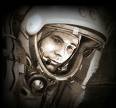
On June 1, 1970 the Soviet Soyuz 9 spacecraft blasts off, and returns on June 19 with seasick cosmonauts Col. Andriyan Grigoryevich Nikolayev (1929-2004) and Vitaly Ivanovich Sevastyanov (1935-), who set a spaceflight endurance record of 17 days, 16 hours, 59 min.
On Nov. 17, 1970 the Soviet Union lands the Lunokhod I unmanned remote-controlled vehicle on the Moon.
On Dec. 12, 1970 the 300-lb. NASA Uhuru (Swahili "freedom") (Small Astronomical Satellite 1) satellite is launched from the Indian Ocean off the coast of Kenya on the 7th anniv. of Kenya's independence, becoming the first satellite devoted exclusively to observing cosmic X-ray sources.

On Dec. 21, 1970 the supersonic twin-engine 2-seat variable-sweep wing Grumman F-14 Tomcat fighter makes its first flight, entering U.S. Navy service on Sept. 22, 1974 to replace the F-4 Phantom II and A-6 Intruder, and retired on Sept. 22, 2006 after being replaced by the F/A-18E/F Super Hornet; all U.S. teen-series fighters incorporate combat experience against MiG fighters during the Vietnam War; in 1976 the Iranian Air Force gets a shipment of them.
In 1970 the ground-based VLF (10-14 KHz) Omega Navigation System (ONS) becomes the first worldwide radio navigation system for aircraft, operated by the U.S. Coast Guard with six partner nations, with six of nine stations becoming operational by next year; meanwhile the Global Positioning System (GPS) begins development, with the USAF Central Inertial Guidance Test Facility at Holloman AFB set up in 1972, and the first experimental satellite launched in 1978; it becomes fully operational in 1993 with 24-32 medium-orbit satellites, and the ONS is shut down on Sept. 30, 1997.
In 1971 the U.S. airline accident rate is the lowest in 23 years, and the 3rd year in a row in which there is a reduction; pressured by the Assoc. of Flight Attendants (AFA), U.S. courts rule that United Airline's no-marriage rule for stewardesses is illegal, as is the no-male rule.

On Jan. 31, 1971 (4:03 p.m. EST) astronauts Stuart Allen Roosa (1933-94), "Smiley Al and Icy Commander" Alan Bartlett Shepard Jr. (1923-98), and Edgar Dean "Ed" Mitchell (1930-2016) blastoff aboard Apollo 14 on a mission to the Moon; on Feb. 5 Shepard and Mitchell land the lunar module Antares in Frau Mauro (3rd manned landing on the Moon) (most accurate landing), broadcasting the first color TV pictures from the lunar surface, with Shepard uttering the soundbyte after stepping on the surface: "It's been a long way, but we're here", followed by the soundbyte about the Earth as seen from the Moon: "You can see the blue water of the ocean. You can see the ice caps. I got a little misty-eyed thinking of all my friends on that beautiful planet"; 47-y.-o. Shepard becomes the first WWII vet and oldest man to walk on the Moon; on the last day of the mission Shepard hits two golf balls in the Fra Mauro region using a tool used to sample lunar material with a Wilson 6-iron attached, and one of the balls travels for about 50 ft., the other "miles and miles and miles"; they splashdown in the Pacific on Feb. 9 at 4:05 p.m. EST, bringing back 98 lbs. of lunar rocks; paranormal and UFO believer Mitchell tries an ESP experiment with friends back on Earth, which doesn't work out.



On Apr. 19, 1971 the Soviet Union launches the Salyut 1 orbiting space station using a Proton rocket, becoming the first space station; on Apr. 23 Soyuz 10 is launched, carrying cosmonauts Vladimir Aleksandrovich Shatalov (1927-), Alexei S. Yeliseyev (1943-), and Nikolai Nikolayevich Rukavishnikov (1932-2002), locking but not docking with Salyut 1, after which their capsule fills with toxic fumes during reentry, causing Nikolai R. to pass out, although they all survive; on June 6 Soyuz 11 lifts off, carrying cosmonauts Vladislav Nikolayevich Volkov (b. 1935), Viktor Ivanovich Patsayev (b. 1933), and Georgy Timofeyevich Dobrovolsky (b. 1928) (flight cmdr.); on June 30 after setting a 23-day endurance record for space flight in the Salyut 1 space lab, all three die during reeentry from cabin depressurization after a fire in space, being found BBQed and dead in the craft after an apparently successful automatic landing, a govt. coverup not stopping the Soviet space program from stinking to high heaven for its disregard of life.
On May 10, 1971 the Soviet Kosmos 419 Mars probe is launched, but fails to leave Earth orbit.
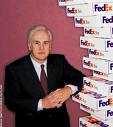

On June 18, 1971 Marks, Miss.-born Frederick Wallace "Fred" Smith (1944-), son of the founder of Dixie Greyhound Bus Lines, who flew 200+ missions as a U.S. Marine pilot in Vietnam and attended Yale U. with George W. Bush and John Kerry founds Federal Express (FedEx Express) in Memphis, Tenn. with his $4M inheritance plus $91M in venture capital (largest raised to date), becoming the world's first overnight express delivery co.; on Apr. 17, 1973 it begins offering service from Memphis Internat. Airport to 25 cities using 14 French-built Falcon DA-20 jets, which later end up in the Nat. Aeronautics and Space Museum; the first night it delivers 186 packages from Miami, Fla. to Rochester, N.Y.; it adds letter delivery in 1981, growing to handle 1M parcels and letters a day by 1989, eventually becoming a $30B+ air freight giant; Smith originally submitted the concept to his Yale economics class and got a C?
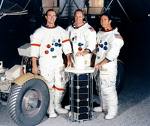
On July 26, 1971 (9:34 a.m. EDT) Apollo 15 is launched from Cape Kennedy atop a 363-ft. Saturn 5 rocket carrying astronauts David Randolph Scott (1932-), James B. Irwin (1930-), and Alfred Merrill Worden (1932-), becoming the first J mission, placing greater emphasis on scientific studies; on July 30 they land near Hadley Rille in the Marsh of Decay (Palus Putredinus), becoming the first Apollo mission to not land in a lunar mare; after driving their Lunar Rover (Lunar Roving Vehicle) (LRV) on the Moon on July 31, the astronauts splashdown in the P acific on Aug. 7 at 4:46 p.m. EDT, bringing 173 lbs. of moon rocks; the moon rocks were really collected by Wernher von Braun in Antarctica? Irwin leaves a microfilm copy of the 1947 poem I Am There by Am. poet James Dillet Freeman (1912-2003); in 2015 the Japanese Kayuga(Selenological and Engineering Explorer) lunar mission sends an image of the halo left by the lunar module engine exhaust plume, shutting critics up?
On Dec. 8, 1971 the Soviet Union announces a successful landing of a space capsule of Mars, which transmits TV signals for a brief period - a clear leapfrog over the lame American craft which orbits overhead?

On Jan. 5, 1972 Pres. Nixon authorizes NASA to proceed with the 6-year $5.5B Space Shuttle Program, which will replace all U.S. launch vehicles except the Scout (the smallest) and the Saturn 5. On Sept. 18, 1976 NASA publicly commissions the first Space Shuttle, the Enterprise at ceremonies in Palmdale, Calif., attended by seven members of the original Star Trek TV cast while the Air Force band plays the Star Trek Theme - is that like having the Fairy Godmother around? On Feb. 18, 1977 the Space Shuttle Enterprise, sitting atop a Boeing 747 goes on its maiden flight above the Mojave Desert from Edwards AFB in Calif. On Aug. 12, 1977 the Space Shuttle Enterprise passes its first solo flight test by taking off atop a Boeing 747, separating and then touching down in Calif.'s Mojave Desert; in Oct. it glides to another bumpy but successful landing at Edwards AFB in Calif.; meanwhile the Thirty-Five New Guys, the first Space Shuttle astronauts undergo selection. On Jan. 16, 1978 NASA names 35 candidates to fly on the Space Shuttle, incl. Sally K. Ride (a woman) and Guin S. Bluford, Jr. (a black) - where's the Jew and the cripple? On Mar. 25, 1979 NASA Space Shuttle Columbia is delivered to the Kennedy Space Center to be prepped for its first launch.
On Apr. 14, 1972 the Soviet Union launches the Prognoz 1 spacecraft to study the Sun; first of a series of 12 (ends Aug. 29, 1996) - born to be wi-i-i-ld?
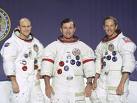
On Apr. 16, 1972 Apollo 16 blasts off on a voyage to the Moon, landing on Apr. 20; on Apr. 21 John Watts Young (1930-) and Charles Moss Duke Jr. (1935-) explore the surface while Thomas K. Mattingly II (1936-) orbits, setting a lunar rover speed record of 18 kmh/hr; it returns on Apr. 27 with 214 lbs. of Moon rocks after spending a record 71 hours 2 min. on the surface.
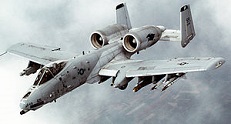
On May 10, 1972 the $18.8M single-seat twin turbofan engine, straight wing Fairchild Republic A-10 Thunderbolt II "Warthog" ("Hog") jet aircraft makes its first flight, becoming the USAF's airplane of choice for close-in support of ground troops, close air support, and anti-heli action when introduced in Mar. 1977; 716 are built by 1984; in 2016 it is upgraded for combat search and rescue.

On May 22, 1972 U.S. Pres. Nixon and Soviet PM Leonid Brezhnev hold their First U.S.-Soviet Summit in Moscow, becoming the first visit of a U.S. pres. to the Soviet Union since 1945; on May 26 they conclude 2.5 years of negotiations (since Nov. 17, 1969) by signing the Strategic Arms Limitation Talks (SALT) I Agreement, prepared by Soviet diplomat Vladimir Semenovich Semyonov (1911-92), limiting each country to only two anti-ballistic missile (ABM) deployment areas, with no nat. ABM defense, and qualitative improvement of ABM technology limited; the summit ends on May 30; the U.S. Senate ratifies the agreement on Aug. 3, to go into force on Oct. 3; the total world arsenal of nuclear weapons contains approx. 10 gig
On July 23, 1972 the NASA Landsat-1 satellite is launched with a multi-spectrum infared Earth imaging scanner, becoming the first Earth resources satellite.
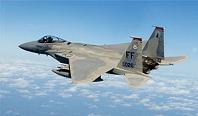
On July 27, 1972 the twin-engine all-weather McDonnell Douglas F-15 Eagle makes its first flight, becoming the #1 air superiority fighter, with a combat record of 100-0; on Dec. 11, 1986 the all-weather the McDonnell Douglas F-15E Strike Eagle makes its first flight.
On Aug. 10, 1972 Chinese launches its first Feng Bao 1 rocket, which reaches an alt. of 200km; 10 more are launched by 1981, of which four fail.
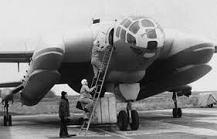
On Sept. 4, 1972 the 3-man Bartini Beriev VVA-14 wing-in-ground-effect VTOL aircraft, designed by Italian-born Robert Ludvigovich Bartini (Roberto Oros di Bartini) 1897-1974) makes its first flight, with the goal of hi speed hi alt. and hovercraft flight to hunt and kill U.S. Navy Polaris missile subs; too bad, after Bartini's 1974 death, the project is cancelled after 107 flights and 103 hours airtime, with only two built.
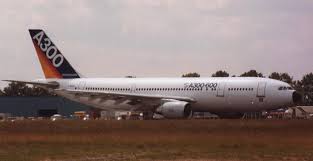
On Oct. 28, 1972 the twin-engine med.-range widebody Airbus A300 airliner makes its first flight, becoming the world's first twin-engined widebody jet, challenging U.S. dominance; 561 are built by 2007.
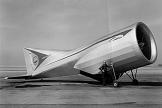
On Nov. 30, 1972 the Lippisch Aerodyne E1 experimental VTOL aircraft is successfully tested in Western Germany, winning an Oscar for weird looks.
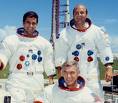
On Dec. 7, 1972 (12:33 a.m. EST) NASA's Apollo 17 blasts off for the Moon from Cape Kennedy, landing on the Moon on Dec. 11 and returning and splashing down in the Pacific on Dec. 19, ending the Apollo program after the 11th manned mission; on Dec. 14 Harrison Hagan "Jack" Schmitt (1935-) and Eugene Andrew Cernan (1934-2017) (3rd and last spaceflight) become the last humans (#11, #12) to walk on the Moon (until ?) (Cernan is the last); Schmitt becomes the first geologist to walk on the Moon (until ?); Cernan leaves his daughter's initials TDC in the dust; Ronald Ellwin Evans Jr. (1933-90) pilots the Command Module America, completing 1 hour 6 min. of EVA on the way back; the last words spoken on the Moon are "God bless the crew of Apollo 17" (Cernan); on Dec. 7 (5:39 a.m. EST) (5 hours 6 min. after launch) they take the Blue Marble Photo of Earth - are you cernan you got the last word?
On Feb. 15, 1973 the Soviet Union launches the Prognoz 3 spacecraft to study the Sun - born to be wi-i-i-ld?
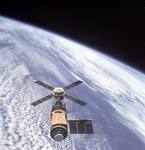

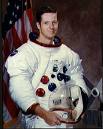

On May 14, 1973 NASA launches 85-ton Skylab 1, its first manned space station, which orbits at 271 mi. alt.; on May 25 Skylab 2 is launched from Cape Canaveral (renamed from Cape Kennedy this year) carrying the first of three crews for a 28-day stay, incl. Charles "Pete" Conrad Jr. (1930-99), Joseph Peter Kerwin (1932-), and Paul J. Weitz (1932-); they splash down on June 22; it falls back to Earth on July 11, 1979; the first time that Soviet cosmonauts and U.S. astronauts are in orbit at the same time, although they never see each other.
On Sept. 20-23, 1973 the Dallas/Fort Worth Internat. Airport (Dallas/Fort Worth Regional Airport until 1985) in Tex. is dedicated, featuring the first U.S. landing of a supersonic Air France Concorde aircraft en route from Caracas to Paris; attendees incl. Tex. gov John Connally, U.S. transportation secy. Claude Brinegar, U.S. Sen. Lloyd Bentsen, and Tex. gov. Dolph Briscoe; it opens for commercial service on Jan. 13, 1974.
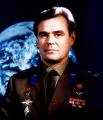



On Sept. 27, 1973 after getting over the 1971 Soyuz 11 tragedy, the Soyuz 12 spacecraft is launched by the Soviets, carrying cosmonauts Vasily Grigoyevich Lazarev (1928-90) and Oleg Grigoryevich Makarov (1933-2003); it returns on Sept. 28; on Dec. 13 Soyuz 13 is launched, carrying cosmonauts Pyotr Ilyich Klimuk (1942-) and Valentin Vitalyevich Lebedev (1942-); it returns on Dec. 21.
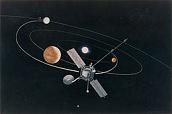
On Nov. 3, 1973 NASA's Mariner 10 space probe blasts off to explore Venus and Mercury; next Feb. 5 it passes within 3,584 (5,768km) of Venus; on Mar. 29 it passes within 466 mi. (750 km) of Mercury, taking 800 closeup photos showing a surface similar to the Moon, becoming the first space probe to observe two planets (incl. Venus), and first to observe Mercury; it discovers that Mercury has a magnetic field.
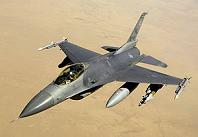
On Jan. 20, 1974 the single-engine $14.6M General Dynamics F-16 Fighting Falcon multirole fighter makes its first flight, evolting into an all-weather aircraft, with 4.5K manufactured by 2015.
On Feb. 12, 1974 the Soviet space probe Mars 5 (launched July 25) enters Mars orbit and begins relaying imaging data for the Mars 6 and Mars 7 missions; on Aug. 5 Mars 6 (launched Aug. 5) flies by and ejects a lander that transmits atmospheric data during descent before crashing; Mars 7 (launched Aug. 9) flies by and ejects a lander that misses Mars completely.
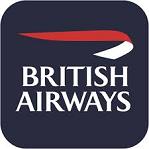
On Mar. 31, 1974 British Airways is founded by the British govt. in Waterside near London Heathrow Airport to manage British European Airways, British Overseas Airways Corp., Cambrian Airways, and Northeast Airlines, going on to become a big fan of the Boeing 747-400 and Boeing 777; it is privatized in Feb. 1987 by the Conservative govt. of Margaret Thatcher, and acquires British Caledonian in 1987, Dan-Air in 1992, and British Midland Internat. in 2012.
On May 20, 1974 the Ballistic Missile Defense Org. (BMDO) is established by the U.S. Defense Dept. to be in charge of all U.S. ICBMs.
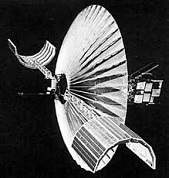
On May 30, 1974 NASA launches the Fairchild ATS-6 (Applications Technology Satellite 6), becoming the world's first educational and experimental direct broadcast satellite, the first 3-axis stabilized spacecraft in geostationary orbit, and the first to use electric propulsion in orbit; it also carries the first heavy ion detector in geostationary orbit; it is decommissioned on July 30, 1979.


On July 3, 1974 the Soviets launch the Soyuz 14 mission, carrying cosmonauts Pavel Romanovich Popovich (1930-2009) (first Ukrainian in space) and Yuri Petrovich Artyukhin (1930-98) to study Earth resources in the Salyut 3 space station.


On Aug. 26, 1974 the Soviets launch the Soyuz 15 mission, carrying cosmonauts Gennadi (Gennady) Vasiliyevich Sarafanov (1942-2005) and Lev Stepanovich Dyomin (1926-98); too bad, it fails to dock with the Salyut 3 space station.
On Sept. 1, 1974 Pioneer 11 passes Saturn at a distance of 21K km from its cloud tops; on Dec. 2 it passes Jupiter at a distance of 34K km from its cloud tops, sending back photos of the Great Red Spot; communication is lost on Sept. 30, 1995.
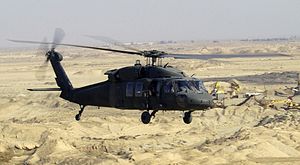
On Oct. 17, 1974 the $21M 4-blade twin-engine U.S. Army Sikorsky UH-60 Black Hawk medium-lift utility heli makes its first flight, entering service in 1979, replacing the Bell UH-1 Iroquois, later adopted by the U.S. Navy, Air Force, and Coast Guard, seeing combat in Grenada, Panama, Iraq, the Balkans, Somalia, Afghanistan et al.; 4K are built by 2015.
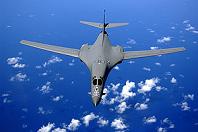
On Dec. 23, 1974 the $283M 4-engine supersonic Mach. 1.25 variable-sweep wing Rockwell B-1 Lancer (AKA Bone) heavy strategic nuclear bomber makes its first successful test flight; it enters service on Oct. 1, 1986 as the B-1A (4 produced) and B-1B (100 produced).

On Dec. 2, 1974 the Soviets launch Soyuz 16, carrying cosmonauts Anatoly Vasiyevich Filipchenko (1928-) and Nikolai Nikolayevich Rukavishnikov (1932-2002) to work on the Salyut 3 space station. On Dec. 8 the Soyuz 16 manned spacecraft lands safely after a 6-day flight rehearsal for the 1975 joint U.S.-Soviet space mission.


On Jan. 10, 1975 the Soviet Soyuz 17 mission blasts off carrying cosmonauts Alexei Aleksandrovich Gubarev (1931-) and Georgi Mikhailovich Grechko (1931-), docking with Salyut 4 and setting a Soviet endurance record of 30 days before returning on Feb. 9; on Dec. 20, 1977 Grechko makes the first spacewalk in an Orlan space suit; on Apr. 5 Soyuz 18A is launched, which fails to reach orbit, the crew landing safely in W Siberia; on May 24 Soyuz 18B is launched with cosmonauts Pyotr Ilyich Klimuk (1942-) and Vitaly Ivanovich Sevastyanov (1935-), docking with Salyut 4 and setting a new record of 63 days; on Nov. 17 the unmanned Soyuz 20 biological mission is launched, docking with Salyut 4.
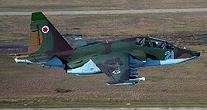
On Feb. 22, 1975 the $11M single-seat twin-jet Soviet Sukhoi Su-25 Grach (Rook) "Frogfoot" close air support aircraft makes its first flight, going into service on July 19, 1981 after production begins in 1978 in Tbilisi, Georgia, getting used in Afghanistan, Iran, Macedonia, Ivory Coast, Chad, Sudan et al.; 1K+ are built by 2015.
On Apr. 19, 1975 India launches the Aryabhatta satellite (their first) using a Soviet Intercosmos rocket; it carries three scientific payloads.
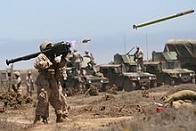
In June 1975 Raytheon Missile Systems successfully tests the 35 lb.shoulder-fired solid-fuel Mach 2 (1.5K mph) heat-seeking FIM-92 Stinger (originally Redeye II) infrared homing surface-to-air missile (SAM), which begins production in 1978 to replace the FIM-43 Redeye, and goes on to fame in Afghanistan (and the crash of TWA Flight 800) after debuting on May 21, 1982 in the Falklands War; after the Soviets withdraw from Afghanistan, the U.S. spends $55M trying to buy them back, obtaining about 300 of ?.
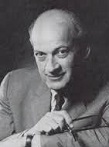




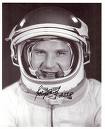
On July 15, 1975 after efforts by Nat. Academy of Sciences pres. (1969-81) Philip Handler (1918-81) (biochemist), the first joint U.S.-Soviet Apollo-Soyuz Test Project begins as U.S. astronauts USAF brig. gen. Thomas Patten Stafford (1930-) (first gen. in space) Donald Kent "Deke" Slayton (1924-93), and Vance DeVoe Brand (1931-) blast-off aboard an Apollo spaceship hours after Soviet cosmonauts Alexei Arkhipovich Leonov (1934-2019) (first man to walk in space in 1965) and Valery Nikolayevich Kubasov (1935-) blast off aboard the Soyuz 19 spacecraft for a mission that incl. a first-ever linkup of the two ships in orbit, docking on July 17 at 140 mi. alt., proving that superpowers stick together in space regardless of ideology down on Earth?; they separate on July 19, and Soyuz splashes down on July 21, followed on July 24 by the Apollo astronauts, becoming the last Apollo mission.
On June 22, 1976 the Soviet Union launches the Soyuz 5 orbiting space station, which is later visited by Soyuz 21 and 24.
In 1976 Spinoff mag. is founded by NASA to brag about its impact on civilian society, e.g., how the Viking Mars Lander program helped improve winter car tires.





On Feb. 7, 1977 Soyuz 24 blasts off carrying Soviet cosmonauts Viktor Vassilyevich Gorbatko (1934-) and Yuri Nikolayevich Glazkov (1939-2008), docking with Salyut 5 for 18 days; on Oct. 9 Soyuz 25 is launched carrying cosmonauts Vladimir Vasiliyevich Kovalyonok (1942-) and Valery Victorovich Ryumin (1939-), but it fails to dock with Salyut 6; on Dec. 10 Soyuz 26 blasts off, carrying Yuri Victorovitch Romanenko (1944-) and Georgi Mikhailovich Grechko (1931-), docking with Salyut 6 and setting an endurance record of 96 days.
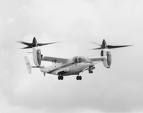
On May 3, 1977 the Bell XV-15, the first successful tiltrotor VTOL aircraft makes its first flight; the Model 1-G of 1947-54 was the first, but it was abandoned by the USAF.
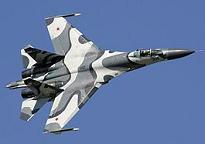
On May 20, 1977 the $30M twin-engine Sukhoi Su-27 "Flanker" supermaneuverable fighter makes its first flight; when it is introduced on June 22, 1985 it joins with the MiG-29 to compete with U.S. 4th gen. fighters incl. the F-14 Tomcat and F-15 Eagle; by 2015 809 are built.

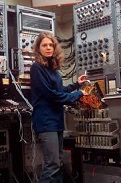
On Aug. 20, 1977 NASA launches Voyager 2, an unmanned spacecraft carrying a 12-in. gold phonograph record containing 115 images and 90 min. of greetings in 55 languages incl. from the U.S. pres. and secy.-gen. of the U.N., common sounds of Earth, scientific info., and music incl. Mozart and Chuck Berry's "Johnny B. Goode", ed. by Carl Sagan and Frank Drak; it goes on to study Jupiter, Saturn, Uranus and Neptune; on Sept. 5 its twin Voyager 1 is launched; both Voyagers contain a golden record titled Sounds of Earth, incl. an interpretation of Johannes Kepler's Harmony of the Worlds (Harmonices Mundi) by computer musician Laurie Spiegel (1945-); in Dec. 2010 Voyager 1 reaches a distance from the Sun where it no longer can detect solar wind. On Nov. 12, 1980 NASA Voyager 1 (launched Sept. 1977) comes within 77K mi. of Saturn and sends back its first pictures of the ringed planet with 1.5K+ rings plus 27 moons, all named after chars. from the works of William Shakespeare and Alexander Pope.
On Sept. 29, 1977 the Soviet Union launches the Soyuz 6 orbiting space station.
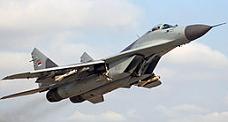
On Oct. 6, 1977 the $11M twin-jet Mikoyan MiG-29 "Fulcrum" multirole fighter makes its first flight, entering service in July 1983; after the breakup of the Soviet Union, the Russian, Serbian, and other former Soviet repubs. continue to operate it; by 2015 1.6K are built; in the mid-1990s the more advanced Mikoyan MiG-29M "Fulcrum-E", developed in the mid-1980s is offered for export.

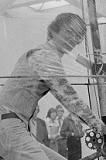

In 1977 Paul B. MacCready Jr. (1925-2007) designs and builds the 55-lb. human-powered airplane called the Gossamer Condor, piloted by Calif.-born Bryan L. Allen (1952-), winning the £50K 1959 Kremer Prize for the first sustained controlled flight by a heavier-than-air craft powered solely by the pilot's muscles. On June 12, 1979 26-y.-o. cyclist Bryan L. Allen (1952-) flies the 70 lb. man-powered Gossamer Albatross across the English Channel, winning the £100K Henry Kremer Prize.



 The Soviets can't outdo the Amerikanskies technically, so they resort to multinational photo opps?
On Jan. 10, 1978 the Soviet Union launches cosmonauts
Vladimir Aleksandrovich Dzhanibekov (1942-) and
Oleg Grigoryevich Makarov (1933-2003)
aboard the Soyuz 26
capsule for a rendezvous with the Salyut 6 space lab on Jan. 11, returning to Earth on Mar. 16; on
Mar. 2 Soyuz 28
is launched, carrying Soviet cosmonaut
Alexei Aleksandrovich Gubarev (1931-),
and Czech pilot Vladimir Remek (1948-),
who becomes the first non-Russian, non-Am. in space; after docking with Salyut 6, they set
a new space endurance record of 140 days (high cheekbones in space?); on June 27
Soyuz 30 is launched, carrying Soviet cosmonauts
Pyotr Ilyich Klimuk (1942-), and
Miroslaw Hermaszewski (1941-),
who becomes the first Polish cosmonaut; on July 5 they land safely in Soviet Kazakhstan; on Aug. 25
Soyuz 31
is launched, carrying Soviet cosmonaut
Valery Fyodorovich Bykovsky (1934-), and
Sigmund Werner Paul Jahn (Jähn) (1937-),
who becomes the first (East) German in space.
The Soviets can't outdo the Amerikanskies technically, so they resort to multinational photo opps?
On Jan. 10, 1978 the Soviet Union launches cosmonauts
Vladimir Aleksandrovich Dzhanibekov (1942-) and
Oleg Grigoryevich Makarov (1933-2003)
aboard the Soyuz 26
capsule for a rendezvous with the Salyut 6 space lab on Jan. 11, returning to Earth on Mar. 16; on
Mar. 2 Soyuz 28
is launched, carrying Soviet cosmonaut
Alexei Aleksandrovich Gubarev (1931-),
and Czech pilot Vladimir Remek (1948-),
who becomes the first non-Russian, non-Am. in space; after docking with Salyut 6, they set
a new space endurance record of 140 days (high cheekbones in space?); on June 27
Soyuz 30 is launched, carrying Soviet cosmonauts
Pyotr Ilyich Klimuk (1942-), and
Miroslaw Hermaszewski (1941-),
who becomes the first Polish cosmonaut; on July 5 they land safely in Soviet Kazakhstan; on Aug. 25
Soyuz 31
is launched, carrying Soviet cosmonaut
Valery Fyodorovich Bykovsky (1934-), and
Sigmund Werner Paul Jahn (Jähn) (1937-),
who becomes the first (East) German in space.

On Mar. 10, 1978 the $23M single-engine Dassault Mirage 2000 multirole 4th gen. fighter makes its first flight, going into service in Nov. 1982 and being adopted by nine nations; 601 are built by 2007.
On June 8 and June 14, 1978 the Soviet Union launches twin probes Venera 9 and Venera 10; on Oct. 22 (5:13 UT) Venera 9 makes a soft landing on Venus (first-ever), sending back photographs for 53 min. before being crushed in the 90-bar pressure at 905F (485C); on Oct. 25 Venera 10 follows suit, sending back photographs for 65 min.; on Sept. 9 and 14 the Soviet Union launches twin probes Venera 11 and Venera 12, which soft-land on Venus in late Dec. and transmit data to Earth for 95 and 110 min. respectively.
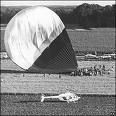
On Aug. 11-17, 1978 the first successful transatlantic balloon flight is made by Max Leroy "Maxie" Anderson (1934-83), Benjamin L. "Ben" Abruzzo (1930-85) (of Albuquerque, N.M.), and Larry Newman (1947-2010), who leave Presque Isle, Maine in Double Eagle II from Presque Isle, Maine, and land six days later (137 hours 6 min.) on Aug. 17 in Miserey, France outside Paris after 137 hours 6 min.
On Aug. 12, 1978 the NASA Internat. Sun-Earth Explorer (ISEE-3) is launched; in 1983 it is renamed the Internat. Cometary Explorer (ICE) and redirected to study comet Giacobini-Zinner.
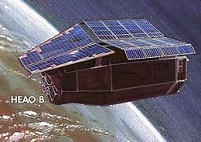
On Nov. 13, 1978 NASA launches the TRW Einstein Observatory (HEAO-2) to study astronomical X-ray sources, becoming the first fully imaging X-ray telescope in space; contact is lost on Apr. 17, 1981.
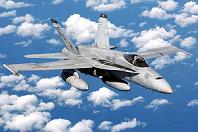
On Nov. 18, 1978 the $29M twin-engine supersonic Mach 1.8 all-weather carrier-capable McDonnell Douglas F/A-18 Hornet multirole combat jet makes its first flight, being adopted by the U.S. Navy and U.S. Marine Corps incl. the Blue Angels (1986); on Nov. 29, 1995 the Boeing F/A-18E Super Hornet makes its first flight.




On Feb. 25, 1979 Soyuz 32, carrying cosmonauts Vladimir Afanasiyevich Lyakhov (1941-) and Valery Victorovich Ryumin (1939-) blasts off, who spend a record 175 days in space on Salyut 6, and spend their time sans visitors because of failure of the visiting crew from Soyuz 33, launched on Apr. 10, incl. Georgi Ivanov (Kakalov) (1940-) (first Bulgarian in space) and Nikolai Nikolayevich Rukavishnikov (1932-2002) to dock, followed by the sending of the unmanned Soyuz 34 craft on June 6 as a replacement return vehicle.

On June 18, 1979 after almost five years of negotiations on the U.S. side by former Navy secy. (1963-7) Paul Henry Nitze (1907-2004), Pres. Carter and Soviet chmn. Leonid Brezhnev sign the Strategic Arms Limitation Treaty (SALT) II agreement in Vienna, setting a ceiling on long-range bombers and missiles, and limiting development to only one new land-based missile system for the duration of the treaty, which expires on Dec. 31, 1985; too bad, Nitze turns against it, believing that the Soviets have developed new WMDs and have aggressive strategies with regard to a nuclear war, founding Team B, a think tank that promotes the concept of the U.S. "window of vulnerability", which is adopted by the Carter and Reagan admin. to justify a massive arms buildup despite lack of real evidence, and causing the U.S. Senate to block ratification of the treaty; meanwhile the U.S. has 2,283 missiles and bombers vs. 2,504 for the Soviet Union; on June 7 Carter approves the $30B MX (LGM-118A Peacekeeper) Missile, a shell-game deployment of large missiles in 8.8K underground shelters connected by railroad track in the deserts of Utah, Nev. et al. in an attempt to survive a Soviet first strike and/or preserve the option of a U.S. first strike, which is deployed starting in 1985, then decommissioned on Sept. 19, 2005 after only 50 missiles are deployed.
On Sept. 20, 1979 NASA launches the HEAO-3 satellite to study hard x-ray and gamma ray emissions; it goes on to pick up gamma ray signals from Cygnus X-1.
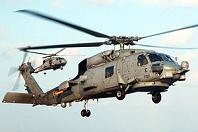
On Dec. 12, 1979 the $28M twin turboshaft engine multi-mission U.S. Navy Sikorsky SH-60/MH-60 Seahawk heli, based on the U.S. Army UH-60 Black Hawk with a hinged tail makes its first flight, replacing the CH-46 Sea Knight in the early 2000s.
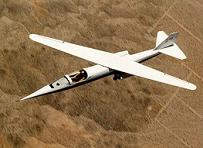
On Dec. 21, 1979 the $240K NASA AD-1 (Ames-Dryden-1) subsonic jet makes its first flight, with a wing that can be pivoted up to 60 deg. for better hi-speed performance; it is retired in Aug. 1982 after 79 flights.
In 1979 Soviet radar engineer ("the Billion Dollar Spy") Adolf Tolkachev begins sending copies of secret documents about Soviet radar and electronic systems to the U.S. (until 1985), giving it a strategic advantage in aerospace technology.
In 1979 the Air Line Stewards and Stewardesses Assoc. (ALSSA) files a sexual discrimination lawsuit under Title VII of the 1964 U.S. Civil Rights Act for grounding pregnant female attendants while allowing male attendants with pregnant wives to continue to fly; on Oct. 18, 1976 the U.S. district court rules that "TWA's no motherhood policy... provides a clear example of sex discrimination"; too bad, it bars 90% of the claimants for late filing.
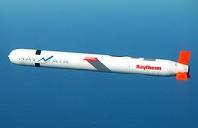
In the late 1970s the all-weather long-range low-alt. 20-ft.-long 20-in.-diam. 3K-lb. subsonic (550 mph) McDonnell Douglas Tomahawk cruise missile makes its first flight, going into service in 1983, capable of carrying a W80 nuclear warhead or 1K lbs. of high explosives.
On Feb. 14, 1980 the Solar Maximum (SolarMax) satellite is launched by NASA to monitor the Sun and its flares at an orbit of 400 mi. above the Earth; in Nov. its attitude control system fails, but it is repaired and launched by the Space Shuttle in Apr. 1984, then is destroyed by a massive solar flare on Dec. 2, 1989.
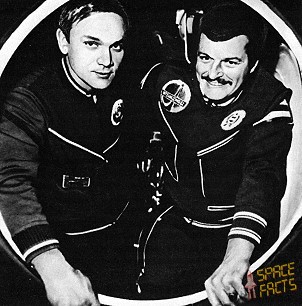
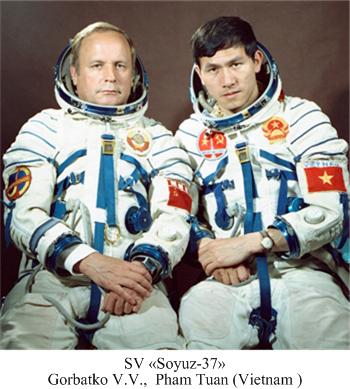

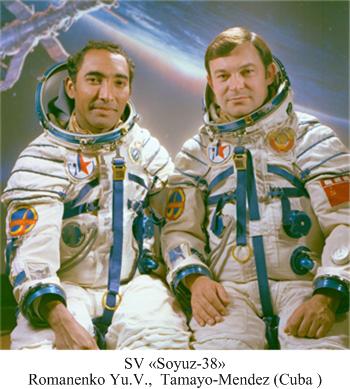

The Soviets go for quantity not quality? On Apr. 9, 1980 Soyuz 35 carries Soviet cosmonauts Valery Victorovich Ryumin (1939-) and Leonid Ivanovich Popov (1945-) to space station Salyut 6; on May 26 Soyuz 36 carries cosmonauts Valery Nikolayevich Kubasov (1935-) and Bertalan Farkas (1949-) (first Hungarian and first Esperantist in space) to Salyut 6; they return on Soyuz 35; on June 5 Yuri Vasilievich Malyshev (1941-99) and Vladimir Viktorovich Asksyonov (1935-) are launched on the Soyuz T-2 mission, which docks with Salyut 6; on July 23 Viktor Vassilyevich Gorbatko (1934-) and Phan Tuan (1947-) (first Vietnamese and first non-Russian Asian in space) are launched on Soyuz 37, after which the Soyuz 35 crew returns to Earth after 185 days in orbit; on Sept. 18 Soviet cosmonaut Yuri Victorovitch Romanenko (1944-) and Cuban cosmonaut Arnoldo Tamayo Mendez (1942-) (first black, first Cuban, first Hispanic, and first from a non-U.S. Western Hemisphere country in space) take off on Soyuz 38, docking with Salyut 6; on Nov. 27 Soyuz T-3 launches carrying Leonid Denisovich Kizim (1941-2010), Oleg Grigoryevich Makarov (1933-2003), and Gennadi Mikhailovich Strekalov (1940-2004) (1st 3-person crew since Soyuz 11), docking with Salyut 6 and exchanging crews.


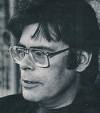
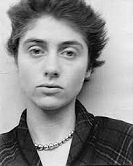

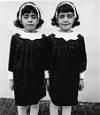
On May 23, 1980 Stanley Kubrick's The Shining (Peregrine Productions) (Hawk Films) (Warner Bros.) debuts, based on the 1977 Stephen King novel about failed writer Jack Torrance (Jack Nicholson) getting cabin fever at the secluded Overlook Hotel in Colo. during the winter; features the great climax where he goes after his family with an axe, crying, "Here's Johnny!"; title is inspired by John Lennon's "Instant Karma" and its line "We all shine on"; Joe Turkel plays creepy Joe the Bartender; the disturbing 1967 photograph Identical Twins, Roselle, N.J. of Lisa and Louise Burns (1968-) by Diane Arbus is used for effect; Danny Lloyd plays the psychic kid who talks with his finger and spouts "Redrum!"; bizarrely skinny scarecrow Shelley Duvall plays his freaked wife, and Scatman Crothers plays psychic vacationing chef Dick Hallorann, who returns to get axed; the photo at the end shows the hotel on July 4, 1921 as "Midnight, the Stars, and You" is being played; "All work and no play make Jack a dull boy"; the film contains numerous codes revealing that Kubrick directed a govt.-backed fake Apollo 11 moon landing based on his experience filming "Doctor Strangelove" (1964) and "2001: A Space Odyssey" (1968)?; it's no surprise that the record for altitude was 853.8 mi. (1,374.1km) for Gemini 11 on Sept. 14, 1966?
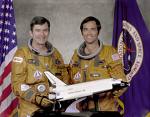
On Feb. 20, 1981 Space Shuttle Columbia (world's first reusable manned spacecraft) clears the final major hurdle to its maiden launch by firing its three engines in a 20-sec. test. On Mar. 19 five technicians are asphyxiated during a routine ground test on Space Shuttle Columbia, killing two. On Apr. 10 the maiden launch of the Space Shuttle Columbia is scrubbed because of a computer malfunction. On Apr. 12 Space Shuttle Columbia 1, the first reusable Space Shuttle, carrying astronauts Robert Laurel Crippen (1937-) and John Watts Young (1930-) blasts off from Cape Canaveral on its first test flight STS-1, and returns on Apr. 14 after 2 days 8 hours, making the first touchdown by a U.S. spacecraft on land; on Nov. 12 Columbia blasts off on mission STS-2 with astronauts Joe H. Engle and Richard H. Truly, ending early in 2 days 6 hours after the loss of a fuel cell.





On Mar. 12, 1981 Soyuz T-4 spacecraft, carrying Vladimir Vasiliyevich Kovalyonok (1942-) and Viktor Petrovich Savinykh (1940-) takes off, then docks with the Salyut 6 space station, and returns on June 10; on Mar. 22 Soyuz 39, carrying Vladimir Aleksandrovich Dzhanibekov (1942-) and Jugderdemidiin Gurragchaa (Jügderdemidiin Gürragchaa) (1947-) (first Mongolian in space) blasts off, docking with Salyut 6; on May 14 Soyuz 40 (last of the Soyuz spacecraft, which are replaced by the Soyuz-T) blasts off carrying Leonid Ivanovich Popov (1945-) and Dumitru Dorin Prunariu (1952-) (first Romanian in space).
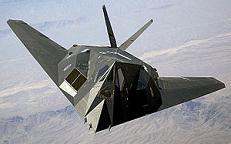
On June 18, 1981 the $111M single-seat twin-engine USAF Lockheed F-117 Nighthawk stealth attack aicraft makes its first flight, becoming the first operational stealth aircraft; it is kept secret until 1988; only 64 are built by 2015.
On June 19, 1981 the European Space Agency's first spacecraft, Ariane 1 (first flight Dec. 24 1979) carries two satellites into orbit.
On Aug. 3, 1981 the Prof. Air Traffic Controllers Org. (PATCO) (founded 1968) goes on strike, demanding a $10K a year pay raise and 4-day workweek despite a warning from Pres. Reagan that they will be fired if they didn't return to work within 48 hours, and on Aug. 5 after only 2K remain on the job he begins firing them, going on to fire 11,359 of 13K by Aug. 17, becoming a major defeat for labor unions; on Oct. 22 PATCO is decertified by the federal govt., and it files for bankruptcy in Nov.; the remaining PATCO workers supplemented by 2.5K non-union workers and military personnel take over, hiring and training new controllers while U.S. air service drops 35%.
On Sept. 19, 1981 the People's Repub. of China launches three satellites aboard a single Feng Bao 1 rocket.
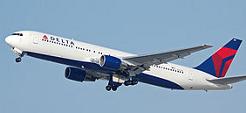
On Sept. 26, 1981 the $180M twin-engine widebody Boeing 767 makes its maiden flight in Everett, Wash., becoming the first widebody twinjet to reach 1K units delivered; its first commercial flight is on Sept. 8, 1982 for United Airlines from Chicago, Ill. to Denver, Colo.; seating capacity is 211 vs. 147 for the 707, 145 for the 727, and 452 for the 747; too bad, there are few orders in a glutted market that already has 600 707s, 1,760 727s, 530 747s.
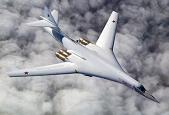
On Dec. 19, 1981 the supersonic variable-sweep wing Tupolev Tu-160 White Swan (Beliy Lebed) (Blackjack) heavy strategic bomber makes its first flight, becoming the world's largest combat aircraft, the world's largest supersonic aircraft, and the world's largest variable-sweep aircraft, also the last strategic bomber designed for the Soviet Union, with 19 stationed inside Ukraine when it becomes independent in Aug. 1991; too bad, they sell half of them back to Russia by 2001; 35 are built by 2008.
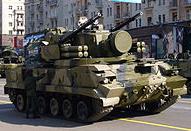
In Dec. 1981 the 2K22 Tunguska tracked self-propelled surface anti-aircraft weapon (SAAW) is tested, going into operation on Sept. 8, 1982, becoming popular in India.

On Feb. 19, 1982 the $65M Boeing 757 narrow-body twinjet airplane, capable of carrying 186-279 passengers up to 3.9K nautical mi. makes its test flight; Eastern Air Lines introduces it next Jan. 1; it goes on to become popular with FedEx, United Airlines, Am. Airlines, and Delta Air Lines.
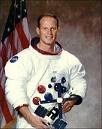







On Mar. 22, 1982 Space Shuttle Columbia blasts off on its 3rd mission STS-3, carrying Jack Robert Lousma (1936-) (USMC) and Charles Gordon Fullerton (1936-) (USAF), and returns on Mar. 30; on June 27 it blasts off on its 4th mission STS-4, carrying Thomas Kenneth "Ken" Mattingly II (1936-) (USN) and Henry Warren "Hank" Hartsfield Jr. (1933-) (USAF), testing the 50-ft. Remote Manipulator System then becoming the first to land on a hard surface in White Sands, N.M.; on Nov. 11 it blasts off on its 5th mission STS-5, carrying Vance DeVoe Brand (1931-) (USMC), Robert Franklyn Overmyer (1936-96) (USMC), Joseph Percival Allen (1937-), and William Benjamin "Bill" Lenoir (1939-2010), deploying the first satellites.


That 1965 Astronaut Barbie really worked? On Apr. 19, 1982 Sally Kristen Ride (1951-2012) and Guion Stewart "Guy" Bluford Jr. (1942-) become the first woman and first black to be tapped by NASA for U.S. space missions - ride sally ride, and go on and bluff for the government? On July 4, 1982 Columbia 4, the 4th Space Shuttle Mission lands at Edwards AFB. On Nov. 16, 1982 Space Shuttle Columbia completes its first operational flight, landing at Edwards AFB after deploying two comm satellites.
On May 12, 1982 Braniff Internat. Airways (founded 1928) ceases operations, and on May 14 files for bankruptcy, becoming the first major U.S. airline to fold and first victim of the 1978 U.S. Airline Deregulation Act.


On May 13, 1982 Soyuz T-5 is launched with cosmonauts Anatoly Nikolayevich Berezovoi (1942-) and Valentin Vitaliyevich Lebedev (1942-), who spend the next 211 days in space aboard the Salyut 7 space station and return on Sept. 1 after launching the amateur radio satellite Iskra 2, becoming the first launch of a satellite fro
On June 24, 1982 the Soyuz T-6 spacecraft, carrying Vladimir Dzhanibekov, Aleksndr Ivanchenkov, and Jean-Loup Chretien (Chrétien) of France is launched, and docks with Salyut 7; on Aug. 16 Soyuz T 7 carrying Leonid Ivanovich Popov, Alexander Serebrov, and Svetlana Yevgeneyevna Savitskaya (1948-) (2nd Soviet woman in space) is launched, docking with Salyut 7.
On July 2, 1982 Lawrence Richard "Lawn Chair Larry" Walters (1949-93) takes off from his girlfriend's backyard in San Pedro, Calif. in his homemade aircraft Inspiration I, made out of a lawn chair and 45 helium weather balloons, rising to an alt. of 16K ft., then descending by shooting some of the balloons, and landing in Long Beach after bringing down some power lines, getting arrested and uttering the soundbyte: "A man can't just sit around"; he gets a $4K fine for operating an aircraft without communicating with the control tower, which he gets reduced to $1.5K, becoming a celeb for awhile then shooting himself in the head in 1993.
On Jan. 25, 1983 the NASA-JPL Infared Astronomical (IRAS) space probe is launched, scanning the sky in four infrared bands for 10 mo. and discovering evidence of planet formation around stars before being deactivated on Nov. 21, becoming the first observatory to perform an all-sky survey at infrared wavelengths.

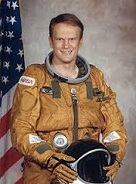
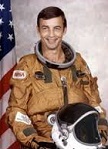
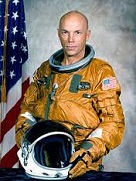
On Apr. 4, 1983 the 2nd Space Shuttle Challenger makes its successful maiden voyage STS-6, carrying astronauts Paul Joseph Weitz (1932-), Karol Joseph "Bo" Bobko (1937-), Donald Herold Peterson (1933-), and Franklin Story Musgrave (1935-), deploying a TDRS tracking satellite and making the first U.S. space walk in nine years.
On Apr. 20, 1983 the Soviet Soyuz T 8 mission blasts off, carrying cosmonauts Vladimir B. Titov, Gennadi M. Strekalov, and Aleksandr A. Serebrov, but it fails to rendezvous with Salyut 7; on June 27 the Soyuz T 9 mission blasts off carrying Vladimir Lyakhov and Aleksandr Alexandrov on a 150-day mission; after 49 days the Soyuz T 10 mission blasts off to relieve them, but the flight is aborted, and the crew escapes safely.

Ride, Sally, Ride? On June 18, 1983 (Sat.) Sally Kristen Ride (1951-2012) becomes the first U.S. woman in space on Space Shuttle Challenger flight STS-7, incl. Robert L. Crippen, Frederick H. Hauck, John M. Fabian, and Norman E. Thagard; after using the Remote Manipulating Structure (Arm) to deploy and retrieve a satellite for the first time, it returns to Edwards AFB, Calif. on June 24.


KAL drops off the radar screen in Andropovland? On Sept. 1, 1983 (3:30 a.m.) Korean Air Lines (KAL) Flight 007 (Boeing 747) en route from New York City via Anchorage to Seoul is shot down over the Sea of Japan (East Sea) near Moneron Island W of Sakhalin Island off Siberia (birthplace of Yul Brynner) by two Soviet Sukhoi SU-15 fighters after it strays off course into Soviet airspace, killing all 269 aboard, incl. 61 Americanskis, incl. U.S. Rep. (D-Ga.) (since 1975) Lawrence Patton "Larry" McDonald (b. 1935) (a physician), and playing into Reagan admin. hands who had been calling the Soviet Union an evil empire, forever stinking up Andropov's name, esp. after the Soviets start out by denying knowledge then claiming it was a deliberate U.S. provocation to test their defenses as a prelude to war, although the U.S. later reveals that it had a recon plane in the vicinity earlier; on Sept. 1 U.S. Sen. (D-Wash.) (since 1941) Henry Martin "Scoop" Jackson (b. 1912) holds a news conference in Everett, Wash. to deplore the incident, then dies of an aortic aneurysm; on Sept. 6 the Soviets finally admit to shooting it down, claiming they didn't know it was a civilian aircraft; on Sept. 25-26 Soviet Lt. Col. Stanislav Yevgrafovich Petrov (1939-) makes a 5-min. decision that saves the world from nuclear Armageddon when he ignores a false warning of a U.S. missile attack; the Reagan admin. drops its prohibition on civilian use of GPS so that aircraft can better determine their location, although precision is limited to 100m until 2000, when it goes to 20m like the military gets.
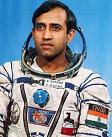
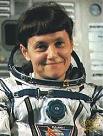
On Feb. 8, 1984 the Soviets launch the Soyuz T 10B mission to replace the failed Soyuz T 10 mission, carrying cosmonauts Oleg Yuryevich Atkov (1949-), Leonid Denisovich Kizim (1941-2010), and Vladimir Alekseyevich Solovyov (1946-), docking with the Salyut 7 space station, repairing the propulsion system, and setting a record in space of 237 days; on Apr. 3 the Soyuz T 11 mission blasts off carrying Yuri Visilievich Malyshev (1946-99), Gennady Mikhailovich Strekalov (1940-2004), and Rakesh Sharma (1949-) (first Indian in space), docking with Salyut 7; on July 18 the Soyuz T 12 mission blasts off carrying Vladimir Aleksandrovich Dzhanibekov (1941-), Svetlana Yevgenyevna Savitskaya (1948-) (2nd woman in space), and Igor Petrovich Volk (1937-); on July 25 Soviet cosmonaut Svetlana Yevgeneyevna Savitskaya (1948-) becomes the first woman to walk in space as she carries out more than three hours of experiments outside the orbiting space station Salyut 7, which she shares with two men, causing rumors of space conception experiments; on Oct. 11 Space Shuttle Challenger astronaut and manly woman Kathryn Dwyer "Kathy" Sullivan (1951-) becomes the first U.S. woman to walk in space.
On Apr. 8, 1984 China launches its first successful comm satellite, the Shiyan Tongbu Tongxin Weixing (Operational Geostationary Communication Satellite), which functions for more than four years.

On June 22, 1984 Blackheath, London-born British daredevil Sir Richard Charles Nicholas Branson (1950-) launches Virgin Atlantic Airlines with a single leased plane from Boeing; in 1988 it offers economy-class passengers individual video machines; in 1989 it gives business-class passengers free manicures and massages. On July 2-3, 1987 Branson and Swedish adventurer Per Lindstrand (1948-) make the first transatlantic hot air balloon flight, going 3,075 mi. (4,920km). from Va. to Ireland in 31 hours 41 min.
On Aug. 30-Sept. 5, 1984 NASA's Space Shuttle Discovery (3rd after Columbia and Challenger), named after Capt. James Cook's ship makes its first flightSTS-41-D, carrying astronauts Henry Warren "Hank" Hartsfield Jr. (1933-) , Michael Lloyd Coats (1946-), Steven Alan Hawley (1951-), Judith Arlene Resnick (1949-86)(2nd Jew in space), Richard Mullane, and Charles Waler, who deploy three satellites and test a solar sail; on Nov. 8 the 2nd Discovery mission is launched carrying astronauts Frederick Hauck, David Walker, Anna Fisher, Dale Gardner and Joseph "Joe" Allen; on Nov. 12 Gardner and Allen snare a wandering Palapa B-2 sattelite and secure it in the cargo bay for return to Earth in the first space salvage in history; on Nov. 14 they rescue a 2nd satellite.


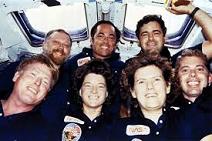
On Oct. 5, 1984 NASA Space Shuttle Challenger blasts off on flight STS-41-G to conduct 10 scientific experiments for the Canadian govt., carrying astronauts Joseph Jean-Pierre Marc Garneau (1949-) (first Canadian in space), Robert Laurel "Bob" Crippen (1937-), David Cornell Leestma (1949-), Jon Andrew McBride (1943-), Sally Kristen Ride (1951-2012), Australian-born Paul Desmond Scully-Power (1944-) (first astronaut with a beard), and Kathryn Dwyer "Kathy" Sullivan (1951-), deploying the Earth Radiation Budget Satellite, and using the Sir-B Radar System to see beneath the surface of desert sand; on Oct. 11 Sullivan becomes the first U.S. woman to walk in space; they return on Oct. 13.
On Oct. 5, 1984 the NASA Ball Aerospace Earth Radiation Budget Satellite (ERBS) is launched by Space Shuttle Challenger, which can measure the greenhouse effect without relying on climate models, showing that clouds have a large cooling effect; it is deactivated on Oct. 14, 2005.
On Nov. 28, 1984 Ryanair is founded in Swords, Dublin, Ireland as a low-cost airline operating out of Dublin and Lon Stansted airports, growing to 439 Boeing 737-800 aircraft and 225 destinations in 37 countries in Europe, North Africa, and the Middle East incl. Israel and Jordan, becoming Ireland's biggest airline; it commences operations next July 8.
On Dec. 15, 1984 the Soviets launch Vega 1 to study Halley's Comet; on Dec. 21 they launch Vega 2 to do ditto; both release balloon probes while passing Venus.
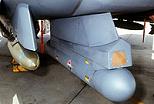
In Dec. 1984 the Martin Marietta LANTIRN (Low Altitude Navigation and Targeting Infrared for Night) targeting pod system for use with top fighter aircraft incl. the F-15E Strike Eagle and F-16 Fighting Falcon successfully completes tests, going into service with the USAF on Mar. 31, 1987, with the AN/AAQ-13 navigation pod containing terrain-following radar and a thermographic camera that feed data to a HUD, and the AN/AAQ-14 targeting pod containing a hi-res. forward-looking infrared sensor, laser designator/rangefinder, and tracking software, allowing aircraft to fly at low alt. in all kinds of weather and accurately launch precision-guided weapons.
On June 16, 1985 the Soviets launch the Soyuz T-13mission, carrying cosmonauts Vladimir Aleksandrovich Dzhanibekov (1942-), Viktor Petrovich Savinykh (1940-), and Georgi Mikhailovich Grechko (1931-), who become the first to dock with a "dead" space station, Salyut 7; it returns on Sept. 26; meanwhile on Sept. 17 Soyuz T-14 blasts off carrying Vladimir Vladimirovich Vasyutin (1952-2002), Alexander Aleksandrovich Volkov (1948-), Viktor Savinykh, and Georgi Grechko, returning on Nov. 21 after Vasyutin contracts a urinary infection, forcing an emergency return. Viktor Savinykh, and Georgi Grechko,
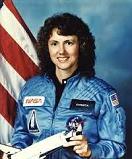
On July 19, 1985 Sharon Christa Corrigan McAuliffe (1948-86) of N.H. is chosen to be the first schoolteacher and first non-elite scientist or astronaut to ride, Sally, ride aboard the Space Shuttle - was she related to the nuts guy in Bastogne? On Oct. 30, 1985 Space Shuttle Challenger takes off from Cape Canaveral with its largest crew ever, five Americans, two West Germans and a Dutchman, with a suite of scientific experiments aboard; it lands safely on Nov. 6; it is planned and directed by the Germans from a control center near Munich, becoming the first manned space flight managed by a country other than the U.S. or U.S.S.R.; future astronaut Christa McAuliffe witnesses the Oct. 30 launch - looks safe?
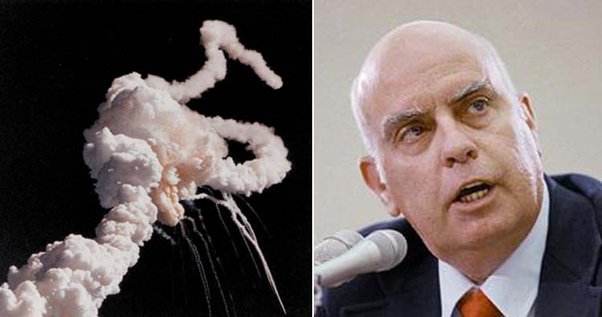
On Jan. 28, 1986 (11:39:13 EST) the Space Shuttle Challenger Disaster sees NASA Space Shuttle Challenger Mission STS-51-L (mission #10) explode 73 sec. after liftoff while millions (incl. many school kids) watch helplessly as their schoolteacher astronaut Christa McAuliffe and the other astronauts just go poof; Sally K. Ride serves on the board investigating the accident; the crew incl. Francis Richard "Dick" Scobee (1939-86), Michael John "Mike" Smith (1945-86), Ellison Shoji Onizuka (1946-86), Judith Arlene Resnick (1949-86) Ronald Ervin McNair (1950-86), Sharon Christa Corrigan McAuliffe (1948-86), Gregory Bruce Jarvis (1944-86); backup crew incl. teacher Barbara Radding Morgan (1951-); asteroids #3350-3356 are named for the crew; Morton Thiokol engineer Roger Mark Boisjoly (1938-2012) sent a memo to the co. vice-pres. 6 mo. earlier, which was ignored, and he is later fired after disclosing the matter to the pres. investigating committee, but is later awarded the AAAS Award for Scientific Freedom and Responsibility.
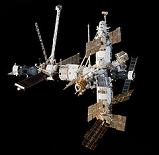
On Feb. 20, 1986 the Soviet Union launches the Mir (Russ. "world") space station into low Earth orbit (200 mi.), becoming the first modular space station, which continues to be assembled in orbit until 1996; it reenters the atmosphere on Mar. 23, 2001.
On Mar. 13, 1986 the Soviets launch Soyuz T-15 carrying Leonid Denisovich Kizim (1941-2010) and Vladimir Alekseyevich Solovyov (1946-); after docking with Salyut 7 and transferring equipment from it to the new Mir space station, it returns on July 16.
On June 9, 1986 NASA pub. a Report on the Space Shuttle Challenger Disaster, concluding that it blew up as a result of a failure in a solid rocket booster O-ring.
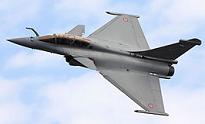
On July 4, 1986 $70M the twin-engine canard delta wing Dassault Rafale (Fr. "squall") multirole fighter aircraft makes its first flight, featuring direct voice input, active electronically scanned radar, and frontal infared search and track sensor; after many delays, it is introduced on May 18, 2001, and adopted by India, Egypt, and Qatar; 141 are built as of Sept. 2015.
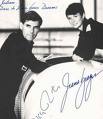
On Dec. 14-23, 1986 Richard Glenn "Dick" Rutan (1938-) and Jeana Yeager (1952-) (no relation to Chuck Yeager) make the first nonstop flight around the world without refueling on their ship Rutan Model 76 Voyager, designed by Dick's younger brother Elbert Leander "Burt" Rutan (1943-), flying 26,366 mi. (42,432 km) in 9 days 3 min. 44 sec.
On Feb. 5, 1987 the Soviets launch the Soyuz TM-2 spacecraft, carrying cosmonauts Yuri Victorovitch Romanenko (1944-) and Aleksandr Ivanovich Laveykin (1951-), who become the first long-duration crew of the Mir space station; on July 22 Soyuz TM-3 is launched, carrying Alexander Stepanovich Viktorenko (1947-), Muhammed Ahmed Faris (1951-) (1st Syrian and 2nd Arab in space), and Aleksandr Pavlovich Aleksandrov (1943-); on July 30 Soyuz TM-2 returns carrying Yuri Romanenko and Aleksandr Leveykin (who had minor heart problems); on Dec. 21 Soyuz TM-4 is launched, carrying Vladimir Georgiyevich Titov (1947-), Anatoli Semyonovich Levchenko (1941-88), and Musa Khiramanovich Manarov (1951-); it returns next June 17, carrying Anatoly Solovyev, Viktor Savinykh, and Aleksandr Aleksandrov.
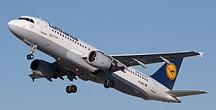
On Feb. 22, 1987 the $90M Airbus A320 makes its first flight, becoming the first airliner to use fly-by-wire flight control systems, growing into a family, with 6.7K built by Aug. 2015.
On June 6, 1988 Morton Thiokol, Inc., which built the defective booster rocket involved in the 1986 Challenger explosion announces that it will not bid to build the next generation of defective Space Shuttle rocket motors.
On June 7, 1988 the Soviets launch the Soyuz TM-5 spacecraft, carrying three cosmonauts; on Aug. 29 the Soyuz TM-6 spacecraft is launched, carrying cosmonauts Vladimir Lyakhov, Abdul Ahad Mohmand (1959-) (first Afghan in space), and Valeri Vladimirovich Polyakov (1942-); on Sept. 6 a 25-hour drama begins as technical problems keeps the 2-man crew of Vladimir Lyahkhov and Abdul Mohmand from returning to Earth aboard the Soyuz TM-5; they land safely on Sept. 7; on Nov. 26 Soyuz TM-7 blasts off, carrying Alexander Volkov, Sergei Krikalyov, and Jean-Loup Jacques Marie Chretien (Chrétien) (1938-); on Dec. 21 Soyuz TM-6 returns with Vladimir Titov, Musa Manarov, and Jean-Loup Chretien.
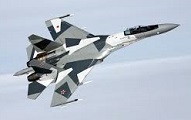
On June 28, 1988 the $40M Russian single-seat twin-engine Sukhoi Su-35 "Flanker-E" supermaneuverable multirole fighter makes its first flight as the SU-27M, debuting again as the SU-35S 4th gen. (beyond visual range) stealth fighter on Feb. 19, 2008; 15 Su-27Ms and 40 Su-35Ss are built.
On July 7, 1988 the Soviet Phobos 1 space vehicle is launched, followed by Phobos 2 on July 12; too bad, a software error causes Phobos 1 to lose power on Sept. 2, 1988, and Phobos 2 loses contact after Jan. 29, 1989 as it approaches the surface of Phobos, causing UFO nuts to speculate.
On July 29, 1988 NASA officials delay a critical test-firing of the Space Shuttle Discovery's main engines another three days; the test on Aug. 10 is a success.
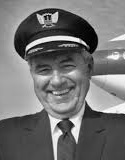
In July 1988 Capt. Hershel Clay Lacy (1932-) takes off on a round-the-world flight from Boeing Field in Seattle in Friendship One (Boeing 747SP) and returns in a record 36 hours, 54 min., 15 sec. at an avg. of 623 mph; Apollo 11 cmdr. Neil Armstrong is a guest of honor; the flight raises $530K for children's charities.
On Oct. 12, 1988 federal prosecutors announce that Sundstrand Corp. has agreed to plead guilty to fraud charges and pay a $115M settlement for overbilling the Pentagon for airplane parts over five years.
On Nov. 15, 1988 the Soviet Union launches its first space shuttle, Buran on an unmanned 3.5-hour flight; it proves too expensive and never flies again?
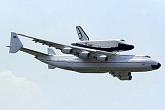
On Dec. 21, 1988 the 6-engine 640-tonne Antonov An-225 Mriya strategic airlift cargo aircraft makes its first flight, becoming the longest and heaviest airplane ever built, with the largest wingspan since the Spruce Goose; only one is built.
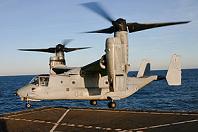
On Mar. 19, 1989 the $72M Bell Boeing V-22 Osprey tiltrotor VTOL-STOL military aircraft makes its first flight, entering service on June 13, 2007 after costs skyrocket.
On Apr. 28, 1989 Pres. Bush announces that the U.S. and Japan have concluded a deal on joint development of a new Japanese jet fighter, the FSX, amid concerns that the U.S. is giving Japan secret technology.
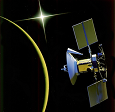
On May 4, 1989 the NASA Magellan (Venus Radar Mapper) robot space probe (first U.S. interplanetary probe since 1978) is launched to map the surface of Venus with a synthetic aperture radar and also measure its gravitational field, becoming the first interplanetary mission launched from the Space Shuttle, the first to use the Inertial Upper Stage booster for launching, and the first spacecraft to test aerobraking for circularizing its orbit; on Oct. 13, 1994 it burns up in the Venusian atmosphere.
On Sept. 5, 1989 the Soviets launch the Soyuz TM-8 spacecraft, carrying Alexander Stepanovich Viktorenko (1947-) and Aleksandr Aleksandrovich Serebov (1944-); after docking with Mir for 166 days, it returns next Feb. 19.
On Aug. 21, 1989 NASA space probe Voyager 2 fires its thrusters to bring it closer to Neptune's moon Triton; on Aug. 24 is sends back striking photos of Jupiter as it passes within 3K mi.; on Aug. 27 duckwalking Chuck Berry performs his tune Johnny B. Goode for NASA staff in celebration of Voyager II's encounter with the planet Neptune.
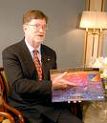

On Nov. 17, 1989 the NASA Cosmic Background Explorer (COBE) is launched to measure the Cosmic Microwave Background Radiation (CMBR), the alleged remnants of the light created 380K years after the Big Bang, before which the Universe was allegedly opaque to light; it goes on to confirm a classic black body spectrum indicating uniform temperature, with tiny "lumps" .001% richer in matter than the surrounding space, from which galaxies allegedly arose; George Fitzgerald Smoot III (1945-) of Lawrence Berkeley Nat. Lab in Calif. and John Cromwell Mather (1946-) of NASA receive the 2006 Nobel Physics Prize for their work after scientists generally accept the Big Bang theory; meanwhile John Peter Huchra (1948-2010), Margaret J. Geller (1948-) et al. of the Harvard-Smithsonian Center for Astrophysics discover the Great Wall, a series of galaxies 500M l.y. long, 200M l.y. wide, and 15M l.y. thick, which would require 100B years to form from the Big Bang, casting more doubt on it; more than a dozen more Great Walls are later discovered, the biggest, called the Sloan Great Wall, 1.37B l.y. long requiring 250B years to form - a lot of bang for the buck?
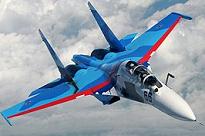
On Dec. 31, 1989 the 2-seat twin-engine all-weather Sukhoi Su-30 "Flanker-C" supermaneuverable fighter makes its first flight; by 2015 500+ are manufactured.
On Feb. 9, 1990 the Galileo satellite flies by Venus.
On Feb. 11, 1990 the Soviets launch the Soyuz TM-9 spacecraft, carrying cosmonauts Anatoly Yakovlevich Solovyev (1948-) and Alexander Nikolayevich Balandin (1952-), which docks with Mir then returns on Aug. 9; meanwhile on Aug. 1 Soyuz TM-10 blasts off carrying cosmonauts and Gennady Mikhailovich Strekalov (1940-2004), which docks with Mir then returns on Dec. 10 after Soyuz TM-11 blasts off on Dec. 2 carrying Viktor Mikhaylovich Afanasyev (1948-), Musa Khiramanovich Manarov (1951-), and reporter Toyohiro Akiyama (1942-) (first Japanese citizen in space), who returns on Soyuz TM-10.
On Feb. 28, 1990 Space Shuttle Atlantis blasts off from Cape Canaveral on a secret mission to place a spy satellite in orbit; it returns on Mar. 4.
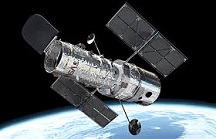
On Apr. 24, 1990 the Space Shuttle Discovery blasts off from Cape Canaveral carrying the $1.5B Hubble Space Telescope, which deploys its 94.5-in. primary mirror on Apr. 25; the shuttle lands safely on Apr. 29; on May 20 the Hubble Space Telescope sends back its first photos; on June 27 NASA announces that a flaw in the orbiting Hubble Space Telescope is preventing the instrument from achieving optimum focus; it is repaired in Dec. 1993.
On Jan. 7, 1991 U.S. defense secy. Dick Cheney cancels plans to purchase the McDonnell Douglas/Gen. Dynamics A-12 Avenger stealth attack bomber for the U.S. Navy, intended to replace the Grumman A-6 Intruder; litigation continues until Jan. 2014.
In Jan. 1991 Pres. Bush announces that the Strategic Defense Initiative (SDI) (AKA Star Wars) (proposed by Pres. Regan on Mar. 23, 1983) will be cut down to defend the U.S. mainland against rogue missiles with the 1988 Brilliant Pebbles (formerly Smart Rocks) concept of 4K low-Earth orbit satellites that fire high-velocity watermelon-sized projectiles at incoming ICBMs, which is abandoned in 1993, and ground-based interceptor missiles (Ballistic Missile Defense Org.) substituted, with U.S. defense secy. Les Aspin announcing that he's "taking the Star out of Star Wars"; deployment is set for 2005.
On Apr. 5, 1991 Space Shuttle Atlantis blasts off on a mission to deploy the NASA TRW Compton Gamma Ray Observatory, and returns on Apr. 11; the mission decays out of orbit on June 4, 2000.

On May 18, 1991 the Soviets launch Soyuz TM-12, carrying cosmonauts Anatoly Pavlovich Arsebarsky (1956-) (Antole Arts and Parties?), Sergei Konstantinovich Krikalev (Krikalyov) (1958-), and chocolate chemist Helen Patricia Sharman (1963-) (first Brit in space as part of Project Juno); on Oct. 2 Soyuz TM-13 blasts off from Kazakhstan, carrying cosmonauts Alexander Aleksandrovich Volkov (1948-), Toktar Ongarbayuly Aubakirov (1946-) (first Kazakhstani cosmonaut), and Franz Artur Viehbock (Viehböck)(1960-) (first Austrian in space, who is included after Austria pays $7M); on Oct. 10 Soyuz TM-12 returns after the failed coup against Mikhail Gorbachev rocks the Soviet Union; Soyuz TM-13 returns next Mar. 25 with Klaus-Dietrich Flade, and Krikalev, who becomes known as "the last citizen of the U.S.S.R".
On July 31, 1991 U.S. Pres. Bush and Soviet Pres. Gorbachev sign the Strategic Arms Reduction Treaty (START) I in Moscow, effective Dec. 5, 1994, limiting the U.S. and Soviet Union to 6K nuclear warheads and 1.6K ICBMS and bombers; it expires on Dec. 5, 2009.
On Mar. 17, 1992 Russia launches Soyuz TM-14 (first Russian Soyuz mission after collapse of the Soviet Union), carrying cosmonauts Alexander Stepanovich Viktorenko (1947-), Alexander Yuriyevich "Sasha" Kaleri (1956-), and Klaus-Dietrich Flade (1952-) of Germany; Soyuz TM-13 on Mar. 25 with Flade, and Krikalev, who becomes known as "the last citizen of the U.S.S.R."; on July 27 Soyuz TM-15 blasts off, carrying cosmonauts Anatoly Yakovlevich Solovyev (1948-), Sergei Avdeyev (1956-), and Michel Tognini of France; it returns next Feb. 1; Soyuz TM-14 returns on Aug. 10 with Viktorenko, Kaleri, and Tognini, a landing system malfunction causing the descent module to land upside down.
On Mar. 24, 1992 Space Shuttle Atlantis Flight STS-45 blasts off, carrying astronauts Charles Frank "Charlie" Bolden Jr. (1946-), Brian Duffy (1953-), Kathryn Dwyer Sullivan (1951-), David Cornell Leestma (1949-), Colin Michael Foale (1957-), Byron Kurt Lichtenberg (1948-), and Dirk Dries David, Viscount Frimout (1941-) of Belgium (1st Belgian in space); it lands on Apr. 2.
On May 7, 1992 Space Shuttle Endeavour, named after Capt. James Cook's ship blasts off on its maiden flight STS-49, retrieving Intelsat VI 603, which failed to leave low Earth orbit in 1990, and relaunching it with a new upper stage into geosynchronous orbit, becoming the first 3-person EVA (until 2001), returning on May 16.
On Jan. 3, 1993 the Strategic Arms Reduction Treaty (START) II is signed by U.S. Pres. George H.W. Bush and Russian Pres. Boris Yeltsin, banning the use of MIRVs (Multiple Independently Targetable Reentry Vehicles) on ICBMs; the U.S. Senate ratifies it on Jan. 26, 1996 by a 87-4 vote, followed by Russia on Apr. 14, 2000, who withdraw on June 14, 2001 after the U.S. withdraws from the ABM Treaty.
On Jan. 24, 1993 Russia launches Soyuz TM-16, carrying Gennadi Mikhailovich Manakov (1950-) and Alexander Fyodorovich Poleshchuk (1953-); Soyuz TM-16 returns on June 22 carrying Manakov, Poleshchuk, and Haignere; on July 1 Soyuz TM-17 blasts off, carrying Vasili Vasiliyevich Tsibliyev (1954-), Aleksandr Aleksandrovich Serebrov (1944-), and Jean-Pierre Haignere (Haigneré) (1948-) of France; it returns next Jan. 14 with Tsibliyev and Serebrov.
On Jan. 8, 1994 Russia launches Soyuz TM-18, carrying cosmonauts Viktor Mikhailovich Afanasyev (1948-), Yury Vladimirovich Usachov (1957-), and Valeri Vladimirovich Polyakov (1942-); on July 1 Soyuz TM-19 blasts off, carrying Yuri Ivanovich Malenchenko (1961-) and Talgat Amangeldyuly Musabayev (1951-) of Kazakhstan; on Oct. 3 Soyuz TM-20 blasts off, carrying Alexander Stepanovich Viktorenko (1947-), Yelena Vladimirovna Kondakova (1957-), and Ulf Dietrich Merbold (1941-) of Germany; Soyuz TM-19 returns on Nov. 4 with Malenchenko, Musabayev, and Merbold; Soyuz TM-18 returns on July 9 with Afanasyev and Usachov; Soyuz TM-20 returns next Mar. 22 with Viktorenko, Kondakova, and Valeri Polyakov.
On Apr. 7, 1994 an attempted hijacking of cargo-carrying Federal Express Flight 705 (McDonnell Douglas DC-10-30) en route from Memphis, Tenn. to San Jose, Calif. by suicidal employee Auburn Calloway, who brings a guitar case onboard concealing hammers and a speargun is foiled by the heroic crew, after which which he is convicted of attempted murder, air piracy et al., and sentenced to two consecutive life sentences.
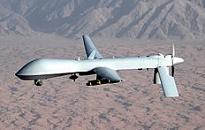
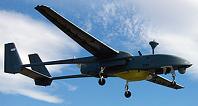
On July 3, 1994 the $4M General Atomics MQ-1 Predator unmanned aerial vehicle (UAV) makes its first flight, at first carrying cameras and other sensors for aerial recon and forward observation for up to 14 hours and 460 mi., and later fitted with two AGM-114 Hellfire missiles and other munitions, going into service in July 1995 in the Muslim World incl. Afghanistan, Pakistan, Iraq, Syria, Libya, Yemen, Somalia, and Serbia; meanwhile the $10M Israeli Israel Aerospace Industries Heron (Machatz-1) medium-alt. long-endurance (52 hours) UAV makes its first flight.

On July 5, 1994 in response to the 1993 shutdown of its Denver hub by Continental Airlines, low-priced Frontier Airlines, based in Denver, Colo. begins operation, expanding to 50 destinations in the U.S. and five outside the U.S.; slogan: "The spirit of the West."
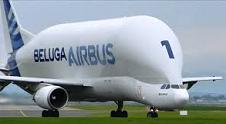
On Sept. 13, 1994 the $285M Airbus A300-600ST Beluga wide-body cargo airliner makes its first flight.
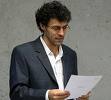
In 1994 Mexican physicistMiguel Alcubierre (1964-) proposes the Alcubierre Warp Drive, a speculative method of stretching space in a wave to allow a ship to ride a warp bubble of flat space.
In 1994 the U.S. Air Force tests the RQ-1 Predator remote-piloted vehicle (RPV), and begins production of a fleet of them in Aug. 1997.
On Mar. 14, 1995 the Russians launch Soyuz TM-21 from Baikonur Space Center in Kazakhstan, carrying Vladimir Nikolayevich Dezhurov (1962-), Gennady Mikhailovich Strekalov (1940-2004), and Norman Earl Thagard (1943-) of the U.S. (1st U.S. astronaut to enter space aboard a Russian rocket); on Mar. 14 a record 13 people are in space at one time: seven Americans aboard Space Shuttle Endeavor, three Russians aboard space station Mir, and two Commonwealth of Independent States (CIS) astronauts and one U.S. astronaut aboard Soyuz TM-21; Eileen Collins (1956-) (from Elmira, N.Y., home of the Nat. Soaring Museum) becomes the first female shuttle pilot; on Sept. 3 Soyuz TM-22 blasts off, carrying cosmonauts Yuri Pavlovich Gidzenko (1962-), Sergei Avdeyev (1956-), and Thomas Arthur Reiter (1958-) of Germany; Soyuz TM-22 returns next Feb. 29; Soyuz TM-21 returns on Sept. 11 with Anatoly Solovyev and Nikolai Budarin.
On June 29, 1995 Space Shuttle Atlantis and the Russian Mir space station dock in space, forming the largest spacecraft to orbit Earth so far; U.S. astronaut Robert Lee "Hoot" Gibson (1946-) shakes hands with Russian cosmonaut Vladimir Nikolayevich Dezhurov (1962-) in a publicity photo.
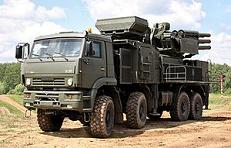
In 1995 the Pantsir-S1 (SA-22 Greyound) phased-array radar SAM system is developed in Russia, and goes operational in 2012, with Russia shipping it to Algeria, Iran, Iraq, Jordan, Brazil, and Oman, UAE, and Syria, where one downs a Turkish RF-4E jet near Latakia on June 22, 2012.

On Jan. 4, 1996 the advanced all-composite 5-blade armed recon-attack 2-man Boeing-Sikorsky8 RAH-66 Comanche heli makes its first flight, designed to incorporate stealth technology and to designate targets for the AH-64 Apache, featuring fly-by-wire digital flight control system and a canted tail rotor assembly; too bad, on Feb. 23, 2004 the U.S. Army cancels the program after only two are built after sinking $6.9B into it since Oct. 1988.
On Feb. 21, 1996 Russia launches Soyuz TM-23, carrying cosmonauts Yuri Ivanovich Onufrienko (1961-) and Yury Vladimirovich Usachov (1957-); on Aug. 17 Soyuz TM-24 blasts off, carrying cosmonauts Valery Grigoryevich Korzun (1953-), Alexander (Aleksandr) Yuriyevich "Sasha" Kaleri (1956-), and Claudie Andre-Deshays (André-Deshays) (Haignere) (Haigneré) (1957-) of France; TM-23 returns on Sept. 21 with Yuri Onufrienko, Yury Usachov, and Claudie Andre-Deshays; TM-24 returns next Mar. 2 with Valery Korzun, Alexander Kaleri, and Reinhold Ewald.
On Feb. 10, 1997 Russia launches Soyuz TM-25, carrying cosmonauts Vasili Vasiliyevich Tsibliyev (1954-), Aleksandr Ivanovich Lazutkin (1957-), and Reinhold Ewald (1956-) of Germany; on Aug. 5 Soyuz TM-26 blasts off, carrying cosmonauts Anatoly Yakovlevich Solovyev (1948-) and Pavel Vladimirovich Vinogradov (1953-); Soyuz TM-26 returns next Feb. 19 with Anatoly Solovyev, Pavel Vinogradov, and Leopold Eyharts; Soyuz TM-25 returns on Aug. 14 with Vasili Tsibliyev and Aleksandr Lazutkin.
On Feb. 14-15, 1997 (Fri.) 9K American Airlines pilots strike at midnight to raise their paltry $120K a year pay, then go back to work 4 min. later on orders of Pres. Clinton, who appoints a board to study the dispute, saving the 3-day weekend for lovers.
On Feb. 23, 1997 an oxygen-generating candle on the 11-y.-o. Mir space station catches fire and burns for 14 min., sending smoke throughout the station; in Mar. both oxygen generators fail, forcing the crew to rely on the candles; in Apr. coolant leaks raise the temps to 86F and cause the primary air purification systems to fail; on June 25 an accident during a practice docking exercise damages the solar arrays of the Spektr module and the loss of half of Mir's power; on Aug. 7 a relief capsule docks, and cosmonauts Vasily Tsibliev and Alexander Lazutkin land their Soyuz spacecraft in Kazakhstan on Aug. 14.
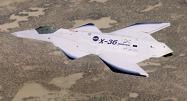
On May 17, 1997 the McDonnell Douglas X-36 Tailless Fighter Agility Research Aircraft makes its first flight, followed by 30 more; too bad, after merging with Boeing in Aug., the project goes poof.
On Aug. 25, 1997 NASA's Advanced Composition Explorer (ACE) is launched to study the solar wind. In Sept. 2009 scientists from Cal Tech report results from it that cosmic ray concentrations in 2009 are 19% higher than at any time in the last 50 years.
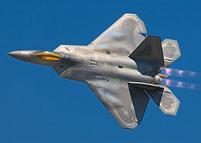
On Sept. 7, 1997 the $150M twin-engine all-weather Lockheed Martin F-22 Raptor stealth tactical fighter makes its first flight, becoming the #1 fighter of the USAF after it is introduced on Dec. 15, 2005; too bad, because of the high cost, only 187 are produced by 2012.
On Jan. 29, 1998 Russia launches Soyuz TM-27, carrying cosmonauts Talgat Amangeldyuly Musabayev (1951-) of Kazakhstan, Nikolai Mikhailovich Budarin (1953-), and Leopold Eyharts (1957-) of France; on Aug. 13 Soyuz TM-28 blasts off, carrying cosmonauts Gennady Ivanovich Padalka (1958-), Sergei Avdeyev (1956-), and Yuri Mikhailovich Baturin (1949-); Soyuz TM-27 returns on Aug. 25 with Talgat Musabayev, Nikolai Budarin, and Yuri Baturin; Soyuz TM-28 returnsnext Feb. 28 with Gennady Padalka and Ivan Bella.
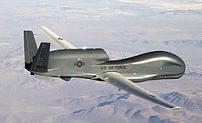
On Feb. 28, 1998 the USAF Northrop Grumman RQ-4 Global Hawk unmanned surveillance aircraft makes its first flight, with its hi-resolution synthetic aperture radar and long-range infared sensors and long loiter times giving it the ability to survey 40K sq. mi. of terrain a day; it will never beat a U-2?
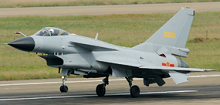
On Mar. 23, 1998 the Chengdu J-10 Vigorous Dragon lightweight all-weather multirole fighter makes its first flight, going into service in 2005, and adopted by Pakistan; 260+ are built by Feb. 2014.
On June 27, 1998 NASA announces that a flaw in the orbiting Hubble Space Telescope is preventing the instrument from achieving optimum focus; it is repaired in Dec. 1993.
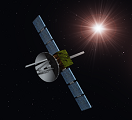
On July 4, 1998 Japan launches the Nozomi (Jap. "Hope", "Wish") (AKA Planet-B) spacecraft for Mars to study its upper atmosphere, becoming the 3rd country to launch an interplanetary spacecraft; too bad, it fails to achieve Mars orbit due to electrical failures, and is abandoned on Dec. 31, 2003.
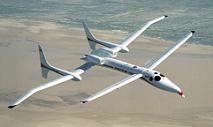
On July 26, 1998 the tandem-wing Scaled Composites Model 281 Proteus high-endurance aircraft, designed by Burt Rutan makes its first flight, with the ability to orbit a point at 65K ft. (19.8m) for 18+ hours while carrying telecom relay and other payloads on a vertical pylon; only one is built.
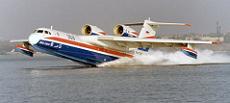
On Sept. 24, 1998 the 72-passenger Beriev BE-200 Altair multipurpose amphibious aircraft makes its first flight, going into operation in 2003 - why not land on water?
On Oct. 29, 1998 U.S. Sen. John Herschel Glenn Jr. (1921-2016) becomes the oldest person to go into space at age 77 on the Space Shuttle Discovery's STS-95 (his first space trip since Feb. 1962); he is part of a 7-astronaut internat. crew, and is the 121st U.S. space mission since Glenn's 1962 trip; he returns on Nov. 7 after a geriatric fun 9-day mission, and receives his second ticker tape parade in New York City on June 18, 1999.
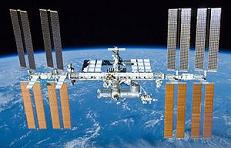
On Nov. 20, 1998 after the Zarya module is launched, the Internat. Space Station (ISS) is launched into permanent low Earth orbit (250 mi.), becoming the largest artificial body in Earth orbit (until ?); it is decomissioned on ?.
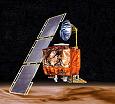
On Dec. 11, 1998 the NASA Mars Climate Orbiter (Mars Surveyor '98 Orbiter) robotic space probe is launched to study Mars' climate; too bad, on Sept. 23, 1999 communication is lost as it tries to enter orbit, later traced to ground-based Lockheed software that outputs data in units of pound-sec. instead of newton-sec., causing it to pass too close to the upper atmosphere and burn up.
On Feb. 20, 1999 Russia launches Soyuz TM-29, carrying cosmonauts Viktor Mikhailovich Afanasyev(1948-), Jean-Pierre Haignere (Haigneré) (1948-), and Ivan Bella (1964-) of Slovakia, who becomes the first Slovak in space; Soyuz TM-29 returns on Aug. 28 with Viktor Afanasyev, Jean-Pierre Haignere, and Sergei Avdeyev.
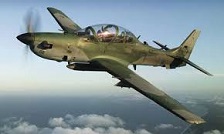
On June 2, 1999 the $9M-$14M Embraer EMB 314 Super Tocano turboprop light attack aircraft makes its first flight, going on to be used in recon, close air support, and conterinsurgency missions, featuring a low heat signature and 4th gen. avionics that deliver precision-guided munitions, becoming a favorite in Latin Am. and Africa, with 200+ manufactured since 2003.

On July 23, 1999 (night) Space Shuttle Columbia Mission STS-93 blasts off from Cape Kennedy (26th launch and 21st night launch); Eileen Marie Collins (1956-) becomes the first female Space Shuttle cmdr.; it deploys the Chandra X-Ray Observatory (CXO) (original name Advanced X-ray Astrophysics Facility) before returning on July 28; during takeoff a gold pin comes loose from an oxidizer post in engine #3 (right), tearing open three colling tubes in the nozzle's inner surface, affecting engine performance.
On Sept. 13, 1999 nuclear waste from Earth on the dark side of the Moon explodes, knocking it out of orbit and sending Moonbase Alpha into space :)
On Dec. 3, 1999 the Mars Polar Lander gives NASA another black eye when it fails to make radio contact with Earth after its planned landing.
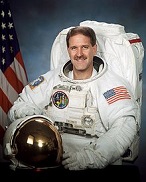
On Dec. 19-27, 1999 a Space Shuttle Discovery mission (STS-103) to repair the Hubble Space Telescope is led by John Mace Grunsfeld (1958-), grandson of a planetarium designer.

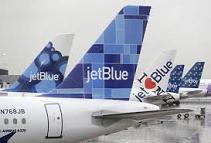
On Feb. 11, 2000 JetBlue Airways Corp. of Queens, Long Island, N.Y., founded by Sao Paulo, Brazil-born Salt Lake City Southwest Airlines exec (Mormon) David G. Neeleman (1959-), who obtains slots at Kennedy Airport for his 162-seat A320 planes begins operation, operating 12 hours per day on routes averaging 1K mi. (San Juan, Puerto Rico, Long Beach, Calif., etc.), and showing a profit almost immediately.
On Feb. 14, 2000 the NASA Shoemaker Near Earth Asteroid Rendezvous (NEAR) spacecraft becomes the first to orbit an asteroid, 433 Eros.
On Oct. 9, 2000 the NASA High Energy Transient Explorer (HETE) II is launched by the U.S. in conjunction with France, Japan, and Italy to observe, report, and help locate gamma-ray bursters while it also surveys X-ray sources across the Universe.
On Jan. 10, 2001 China sends rats into orbit aboard its "sacred ship" Shenzhou II, powered by a Long March rocket; it returns on Jan. 16.

On Mar. 11, 2001 U.S. astronauts Jim Voss (1949-) and Susan Jane Helms (1958-) spend 8 hr. 56 min. in a spacewalk, attempting to make room on the Internat. Space Station (ISS) for the 5-ton Italian Leonardo cargo module, becoming the longest spacewalk to date.
On Mar. 23, 2001 after Russia takes out a $200M insurance policy against possible damages, Russia's 100-ton Mir space station ends its 15-year orbit around the Earth with a fiery plunge into the South Pacific.
On Aug. 10, 2001 Space Shuttle Discovery is launched on its record 30th mission (since 1984), delivering the NASA Leonardo Multi-Purpose Logistics Module and a new crew to the Internat. Space Station (ISS).
On Sept. 22, 2001 the Deep Space 1 unmanned spacecraft (launched Oct. 24, 1998) images 5-mi.-long Comet Borrelly, which reflects only 3% of the sunlight received by its surface (15% as much as Earth reflects).
On May 4, 2002 the NASA Boeing Aqua (EOS PM-1) satellite is launched from Vanderberg AFB, settling into a Sun-synchronous orbit with several other satellites to measure water on the Earth's surface and atmosphere, becoming the 2nd major component of the Earth Observing System (EOS) after Terra (EOS AM-1) (launched in 1999) (clouds, water, ice, land surface, carbon monoxide, aerosols) and Aura (EOS CH-1) (launched July 15, 2004) (climate, air quality, ozone layer).
In June 2002 Space X (Space Exploration Technologies Corp.) is founded in Hawthorne, Calif. by PayPal and Tesla Motors billionaire Elon Musk to send spacecraft to Mars and colonize it, going on to develop the Falcon 1 and Falcon 9 reusable launch vehicles, and the Dragon spacecraft; in 2008 the Falcon 1 becomes the first privately-funded liquid-propelled rocket to reach Earth orbit.
On Jan. 23, 2003 the last weak signal is received from NASA's Pioneer 10, originally launched on Mar. 2, 1972.
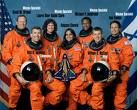
On Feb. 1, 2003 (8:59 EST) NASA Space Shuttle Columbia, which lifted off on Jan. 16 breaks up during reentry and disintegrates 40 mi. up over Palestine, Tex. as it approaches the landing area, killing all seven aboard incl. cmdr. Rick Husband, pilot William McCool, payload cmdr. Michael Anderson, engineer Kalpana Chala, David Brown, Laurel Clark, and Ilan Ramon, all while millions watch the eerie execution on TV; Ramon is the first Israeli in space; giving conspiracy kooks hay to blame Iran, since it's the 24th anniv. of Ayatollah Khomeini's return to Iran, plus the embedded letters "Iran" in Ramon's name, and the coincidence of Palestine, Tex.; the breakup is caused by hot gases escaping through a 3-in. hole in the left wing created at liftoff by a piece of foam insulation breaking off from the external fuel tank, causing NASA to spend $200M to fix the problem before the next flight in 2005; much of the debris lands in Nacogdoches, Tex.
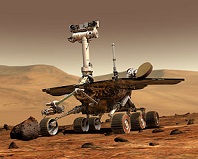
On June 10, 2003 Spirit, the first of two NASA Mars Exploration Rovers is launched, followed by Opportunity on July 7; Spirit lands next Jan. 4, and Opportunity next Jan. 25 on the opposite side of Mars.
On Sept. 27, 2003 the $140M SMART-1 (Small Mission for Advanced Research and Technology) spacecraft (a 3-ft. cube with solar panels) is launched into Earth orbit by an Ariane-5 booster rocket from Kourou, French Guiana, using its ion engine (using only 176 lb. of xenon fuel) to slowly raise its orbit for 14 mo. until the Moon's gravity grabs it, and smashes into the Lake of Excellence on Sept. 3, 2006 after travelling 62M mi.
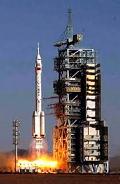
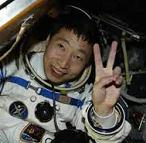
On Oct. 15, 2003 after four unmanned missions since 1999, the Chinese Shenzhou 5 takes off from Jiuquan Launch Center in Gansu Province on a Long March 2F launch vehicle carrying military pilot Yang Liwei (1965-), orbiting 14x before returning after 21 h 22 m, becoming the first Chinese human space flight, making China the 3rd country with independent human spaceflight capability after the Soviet Union (Russia) and U.S.
In 2003 the $173.5M NASA PICASSO-CENA (Climatologie Entendu des Nuages et des Aerosols) (Instruments for Cloud and Aerosol Observations) is launched to examine the role of clouds and aerosols in the Earth's radiation budget using Lidar (laser radar).
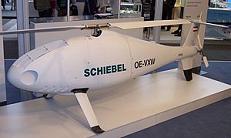
In 2003-5 the Austrian 440 lb. 6-hour 140mph 55hp 18K-ft. alt. Schiebel Camcopter S-100 rotorcraft surveillance UAV is developed.
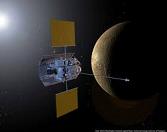
On Aug. 3, 2004 the NASA MESSENGER (Mercury Surface, Space Environment, Geochemistry, and Ranging) robot spacecraft blasts off on a Delta II rocket, entering orbit around Mercury on Mar. 18, 2011 (first spacecraft), going to complete its primary mission in 2012, then impacting the surface on Apr. 30, 2015 after discovering wrinkle ridges called lobate scarps.
On Sept. 8, 2004 the $264M Lockheed-Martin Genesis space capsule (launched Aug. 8, 2001), after 29 mo. in space collecting solar wind particles from the sun crashes in a Utah desert at 193 mph after the parachute fails to deploy, losing the data collected; a part that releases the parachute was later found to have been installed backwards? - was it software or hardware?
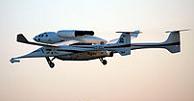
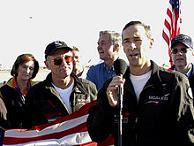

On Sept. 29, 2004 after being piloted on Dec. 17, 2003 (100th anniv. of the Wright Brothers' first flight) by William Brian Binnie (1953-), reaching supersonic flight, SpaceShipOne, travels into space and back, breaking the 100 km (62 mi.) line and reaching an alt. of 102.93km, piloted by Michael Winston "Mike" Melvill (1940-), then on Oct. 4 reaching 112.014km piloted by Binnie, being plagued by a series of 29 rapid rolls near the top of its ascent, winning the $10M Ansari X Prize for the first manned private spaceflight, named for Iranian-born Am. Texas telecom entrepreneur Anousheh Ansari (1966-); it was designed by Burt Rutan (brother of Dick Rutan) and financed by Paul G. Allen; the previous record alt. for an air-launched craft was 354K ft., reached by a U.S. X-15 in 1963; on Sept. 18, 2006 Ansari becomes the first private female space explorer and first Eastern and Muslim woman in space. On Dec. 25 after entering Saturn orbit on July 1, the NASA Cassini spacecraft (launched on Oct. 15, 1997 by a Titan IV to orbit Saturn) drops the Huygens probe on Titan, landing on Jan. 14, becoming the first-ever in the outer Solar System.
On Jan. 12, 2005 the NASA Deep Impact spacecraft (built by Ball Aerospace of Boulder, Colo.) blasts off on a mission to smash a hole in a comet to investigate its contents; on July 3 at 10:57 p.m. PDT its 820-lb. cooper-fortified "impactor" smashes into icy Comet Tempel 1; later Russian astrologer Marina Bai (1965-) sues NASA for $300M for interfering with her horoscopes by "ruining the natural balance of forces in the Universe"; her case is thrown out of court then reinstated, and ends in ? - and ice cream truck drivers everywhere do what?
On Jan. 18, 2005 the 1.2M lb. Airbus A380 superjumbo jet (30% bigger than a 747) is unveiled in Toulouse, France, making its first flight on Apr. 27; it has a record passenger cap. of 800, and 149 have already been ordered; on Oct. 25 the first airline to fly is Singapore Airlines; it is tested with passengers in Mar. 2007, and has 156 standing orders, none from U.S. carriers.
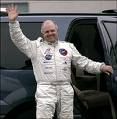

On Mar. 3, 2005 James Stephen "Steve" Fossett (1944-2007) of Beaver Creek, Colo. completes the first solo nonstop balloon flight around the world in 67 hours, financed by Virgin Atlantic founder Sir Richard Charles Nicholas Branson (1950-), who stars in his own exciting TV reality show The Rebel Billionaire this year.
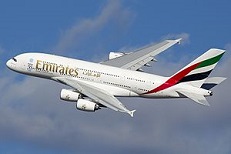
On Apr. 27, 2005 the 853-seat double-deck 8K nmi.-range Airbus A380 wide-body airliner makes its first flight to compete with the Boeing 747, becoming the world's largest passenger airliner, selling for $445.6M in the U.S.; too bad, after electrical wiring difficulties cause a 2-year delay, development costs balloon to $25B, which the co. can't recoup, and inability to carry cargo prevents it from being repurposed, causing production to end in 2021; 234 are built by Jan. 31, 2019.
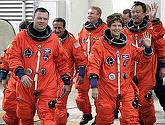

The real Capt. Janeway? On July 26, 2005 (10:39 a.m. EDT) Space Shuttle Discovery "Return to Flight" Mission STS-114 (first flight since the Columbia disaster 2.5 years earlier), with a 7-person crew commanded by 48-y.-o. Eileen Marie Collins (1956-), incl. James MacNeal "Vegas" Kelly (1964-), Japanese-born Soichi Noguchi (1965-), Stephen Kern Robinson (1955-) Australian-born Andrew Sydney Withiel "Andy" Thomas (1951-), Wendy Barrien Lawrence (1959-), and Charles Joseph "Charlie" Camarda (1952-) has a picture-perfect liftoff 13 days after a postponement caused by a faulty fuel sensor in the external tank; 36 hours later (July 27) images shot from one of the 100+ cameras onboard show that a piece of foam insulation separated from the external fuel tank but missed hitting the shuttle, causing NASA to ground all future shuttles until the problem can be fixed; on July 28 NASA announces that the Shuttle looks safe to return to Earth; on Aug. 3 astronaut Stephen K. Robinson removes two pieces of filler material from the Shuttle's belly; the Shuttle returns safely on Aug. 9 after 219 orbits and lands at Edwards AFB, Calif. at 6:11 a.m. EDT as the song Come On, Eileen by Dexys Midnight Runners is played.
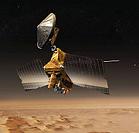
The Red Planet gets Americanized? In July 2005 NASA cancels the $500M Lockheed Martin Mars Telecommunications Orbiter, planned for a 2009 launch, to be the first of a network of Martian comm satellites on a 10-year mission in orbit 2.8K mi. above Mars in order to have a line of sight to Earth and pioneer the use of lasers for planet-to-planet communication; on Aug. 12 the Lockheed Martin Mars Reconnaissance Orbiter is launched, attaining Martian orbit on Mar. 10, 2006 and aerobraking for 5 mo. until Nov. 2006, joining five other Mars spacecraft to measure Mar in 8-12 in. scale and will serve as the main relay for the data to be returned by the Mars Science Lab, to be launched in 2009.
On Sept. 19, 2005 NASA announces a $104B Apollo on Steroids program to send astronauts back to the Moon by 2018 using a beefed-up shuttle with Apollo parts which can ferry up to six astronauts at a time for stays of one week to 6 mo.
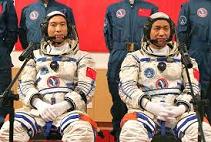
On Oct. 12, 2005 the Shenzhou 6 is launched on a Long March 2F rocket from Jiuquan Launch Center, carrying Fei Junlong (1965-) and Nie Haisheng (1964-), orbiting 4x and returning to Earth after 4 d 19 h 33 m.
On Nov. 9, 2005 the Pakistan Internat. Airlines Worldliner (Boeing 777-200LR) takes off from Hong Kong, and arrives in London on Nov. 10 after a 22 hour 42 min. 11,664 nautical mi. flight, breaking the record for the longest nonstop commercial jet flight set in 1989 by a Boeing 747-400.
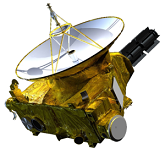
On Jan. 19, 2006 NASA launches the $650M unmanned New Horizons spacecraft on a 9.5-year 3B-mi. mission to flyby Pluto, the last unexplored planet, er, planetoid in the Solar System, followed by the Kuiper Belt; it features a memorial to Plugo, er, Pluto discoverer Clyde Tombaugh; on Aug. 24, 2014 it passes the orbit of Neptune, rendezvousing with Pluto on July 14, 2015 at 8K mi. distance.
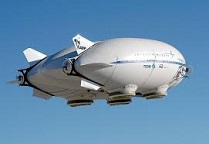
On Jan. 31, 2006 the Lockheed Martin P-791 experimental hybrid airship makes its first flight, going on to be used for landings in rough areas sans roads and airstrips.
On July 4, 2006 (2:38 p.m. EDT) NASA launches its crappy Space Shuttle Discovery from Kennedy Space Center in Cape Canaveral, Fla. (first 4th of July launch) on mission STS-121; once again flying floam strikes the flying bomb, causing the mission to turn into a breast self-exam in space even though the pieces come off after the 2 min. 15 sec. critical point; on July 16 the astronauts issue a soundbyte: "We just flew over the Middle East, and I have to tell you, from up here it looks peaceful and quiet just like the rest of the planet" (Piers Sellers); a 14-in. repair spatula is lost during a spacewalk; they make a successful landing on July 17.
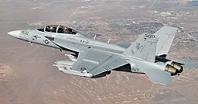
On Aug. 15, 2006 the $68M carrier-based Boeing EA-18G Growler electronic warfare aircraft makes its first flight, going into service on Sept. 22, 2009 to replace the Northrop Grumman EA-6B Prowler.

On Sept. 9, 2006 the Boeing 747 Dreamlifter (originally the Large Cargo Freighter) makes its first flight, being only used to transport Boeing 787 parts after being loades by the world's longest cargo loader; only four are built.
On Dec. 1, 2006 United Launch Alliance is founded by Boeing and Lockheed Martin in Centennial, Colo., going on to unveil the Vulcan Centaur launch vehicle on Apr. 13, 2015 to replace the Atlas V at about half the price, featuring the Advanced Cryogenic Evolved Stage (ACES) upper-stage rocket for boosting satellite payloads into geosynchronous orbit and interplanetary space probes to escape velocity.
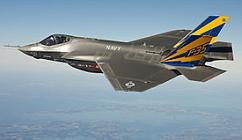
On Dec. 15, 2006 after Lockheed announced the program in 2001, the $98M-$116M single-seat single-engine all-weather Lockheed Martin F-35 Lightning II stealth multirole fighter makes its first flight, complete with F-35A (conventional takeoff and landing), F-35B (short takeoff and vertical landing), and F-35c (catapult-assisted takeoff and arrested recovery) models, its lower cost causing the F-22 Raptor to be phased-out; 115 are built by Nov. 2014, with a total of 2,457 planned for use by the USAF, U.S. Navy, and U.S. Marine Corps; too bad, it's only good for its stealth, and can't win a close-up dogfight, and instead of wasting big bucks the military should have upgraded the F-15, F-16, and F-18?
On Jan. 11, 2007 China successfully tests its ground-based direct-ascent Anti-Satellite Ballistic Missile (ASAT); too bad, it creates 3.4K pieces of radar-trackable debris, one-six the total, causing an internat. outcry.
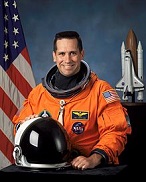

On Feb. 5, 2007 U.S. Navy Capt. Lisa Marie Nowak (nee Caputo) (1963-) (an astronaut) is charged with attempted kidnapping after she drives 900 mi. and dons a disguise to confront Air Force Capt. Colleen Shipman (1976-), a woman she believed was her rival for the affections of Space Shuttle Navy Cmdr. William Anthony "Bill" Oefelein (1965-), then sprays pepper spray through her car window; after being arrested she is found with a wig, trench coat, BB gun, knife, rubber tubing and pepper spray, becoming the first U.S. astronaut arrested on felony charges; Oefelein leaves NASA on June 1; on Nov. 10, 2009 Nowak pleads guilty, and is discharged from the Navy in Aug. 2010.
On May 29, 2007 Russia launches its new RS-24 ICBM, which is fired from a mobile launcher and is capable of carrying six warheads in an effort to prove to the U.S. that its proposed anti-missile shield in Europe will be futile, with Pres. Putin pointin' out "We think it would be harmful and dangerous to turn Europe into a tinderbox and fill it with new types of armaments"; Putin then surprises Bush in Germany with a proposal to use a Soviet-era early-warning radar in Azerbaijan as a substitute for radar and interceptors in Poland and the Czech Repub., which Bush dismisses, saying they're obsolete and too close to the potential launching points in Iran.
On June 17, 2007 a failed Russian computer system on the Internat. Space Station (ISS) is fixed, which crashed the week before during a spacewalk to repair a thermal blanket which had peeled back during the June 8 launch of Space Shuttle Atlantis; the $100B ISS program has a net benefit to humanity of $1.98?
On July 8, 2007 Boeing rolls out its new Boeing 787, the first commercial airplane made of lightweight composites not subject to the corrosion and fatigue problems of aluminum, and getting 20% better fuel efficiency, booking $100B in advance orders (677 planes) from 24 airlines who find it just the bee's knees, putting the double-decker Airbus A380 on the skids.
On Aug. 4, 2007 the $386M NASA Phoenix Mars Lander blasts off, with the mission of testing the icy ground near the planet's north pole for signs of past or present life when it lands on May 25, 2008; it was named from the fact it was built from recycled parts from a scrapped 2001 mission; the last contact is on Nov. 2, 2008.

On Aug. 8, 2007 Space Shuttle Endeavour mission STS-118 blasts off from Cape Canaveral, Fla. carrying teacher Barbara Radding Morgan (1951-) (Christa McAuliffe's backup in the doomed 1986 flight), along with Dave Williams (white) and Benjamin Drew (black); too bad, on Aug. 10 a gouge is found on its belly after it docks with the ISS; on Aug. 21 it lands safely.

On Oct. 24, 2007 China launches the Chang'e 1 lunar orbiter from its Xichang Satellite Launch Center; it is followed by Chang'e 2 on Oct. 1, 2010, Chang'e 3 on Dec. 1, 2013, which soft-lands on the Moon on Dec. 14, 2013; Chang'e 5 is launched on ?, 2017.
On Feb. 7, 2008 Space Shuttle Atlantis blasts off from Cape Canaveral with the $2B Columbus Science Lab, donated by Europe; it returns Feb. 20.
On Mar. 11, 2008 (night) Space Shuttle Endeavour STS-123 lifts off from Cape Canaveral to deliver a robot and the Japanese Logistics Module, the first piece of a new Japanese lab to the ISS.
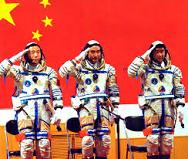
On Sept. 25, 2008 the Chinese Shenzhou 7 spacecraft blasts off on a Long March 2F rocket from Jiuquan Launch Center, carrying Zhi Zhigang (1966-), Liu Boming (1966-), and Jing Haipeng (1966), returning on Sept. 28.

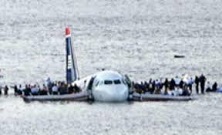
On Jan. 15, 2009 the "Miracle on the Hudson" sees U.S. Airways Flight 1549 (Airbus 320) en route from LaGuardia Airport in New York City to Charlotte, N.C. run into a flock of geese, damaging an engine, after which capt. Chesley Burnett "Sully" Sullenberger III (1951-) successfully lands it in the Hudson River, saving all 155 aboard, causing him to become a new post-9/11 New York hero and giving desperate Americans hope of a lucky year to come; he later testifies to Congress how older pilots are treated like merde by the airlines, incl. how his pension was eliminated.
On Feb. 24, 2009 NASA's $280M Orbiting Carbon Laboratory, designed to detect worldwide carbon emissions plunges into the ocean after launch from Vandenberg AFB in Calif. when the nose cone fails to come off, weighting it down; on July 2, 2014 NASA's Orbiting Carbon Observatory 2 is launched to study CO2 concentrations and distribution in Earth's atmosphere.
On Feb. 27, 2009 NASA launches the Lunar Reconnaisance Orbiter (LRO), which will look for places where water might be found by astronauts; meanwhile on Oct. 9 the $600M Centaur Lunar Impactor smashes into the Moon at 5.6K mph in a frozen crater believed to contain ice, and on Nov. 13 NASA announces the discovery of a large lunar ice field at the S pole.
On Mar. 5, 2009 NASA launches the Kepler spacecraft, which will orbit the Sun, becoming the first "planetary census taker", looking for "pale blue dots" (Carl Sagan), planets that could support life in constellations Cygnus and Lyra.
On Mar. 17, 2009 the Gravity Field and Steady-State Ocean Circulation Explorer (GOCE) satellite is launched by the European Space Agency; in 2011 it becomes the first satellite to detect an earthquake from space, the Mar. 11, 2011 Tohoku Earthquake.

On May 23, 2009 Pres. Obama nominates former Marine aviator and Space Shuttle astronaut maj. gen. Charles Frank "Charlie" Bolden Jr. (1946-) as the new head of NASA, becoming the first African-Am; he is confirmed by the Senate on July 15, taking office on July 17 (until Jan. 20, 2017).
On July 8, 2009 the NASA Cassini spacecraft obtains the first direct evidence of liquid methane lakes on Titan.
On Oct. 9, 2009 (4:30 a.m. ET) NASA crashes the LCROSS (Lunar Crater Observing and Sensing Satellite) into the Moon at 5.6K mph to blast a huge hole in search of hidden water, creating a 30-mi.-high plume observable from Earth with a 10-in. telescope; too bad, no plume was seen.
On Oct. 27, 2009 (8 a.m.) the prototype $450M NASA Ares I-X (Space Shuttle replacement), designed for the Constellation program that will return astronauts to the Moon by 2020 is launched less than one week after a blue-ribbon panel released its final report bringing the future of the human spaceflight program into question, and recommending that it be privatized; a large dent near the base is found on the rocket after it splashes into the Atlantic Ocean.
On Dec. 14, 2009 the NASA Wide-field Infrared Survey Explorer (WISE) is launched from Vanderberg AFB, going on to perform an all-sky astronomical survey in Earth orbit that help discover the first Y Dward and Earth trojan asteroid before being placed into hibernation in Feb. 2011.
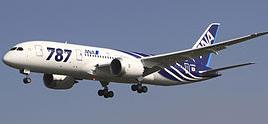
On Dec. 15, 2009 the twin-engine widebody 186-ft.-long Boeing 787 Dreamliner makes its first flight two years behind schedule. becoming Boeing's most fuel-efficient airliner by making use of carbon composite materials in the airframe, designed to be 20% more fuel efficient than the Boeing 767 that it replaces.
In 2009 he USAF RQ-170 Sentinel is introduced, a stealth reconnaisance jet aircraft flying wing AKA the Beast of Kandahar.
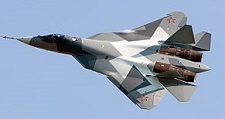
On Jan. 29, 2010 the Russian single-seat twin-jet Sukhoi PAK FA (T-50) 5th-gen. stealth fighter makes its first flight, becoming the first Russian stealth aircraft, intended as the successor to the MiG-29 and Su-27; it goes into service in 2018.
On Feb. 1, 2010 Pres. Obama unveils a blueprint for the $3.8T 2010 U.S. Budget, which incl. a record $708B in defense spending, and cuts out the planned $100B NASA 2020 Constellation Moon trip and the Ares 1 rocket, successor to the Space Shuttle; meanwhile he asks NASA head Charlie Bolden to "find ways [for NASA] to reach out to dominantly Muslim countries", incl. partnering with them in science missions.
On Apr. 8, 2010 the New START (Strategic Arms Reduction Treaty is signed in Prague, Czech. by U.S. Pres. Obama and Russian Pres. Dmitry Medvedev, to take effect on Feb. 5, 2011, and last until at least 2021, reducing the number of strategic missile launches by half, but not limiting the number of stockpiled nuclear warheads.
On Apr. 20, 2010 a test-flight of the $308M Falcon HTV-2 burns up in the atmosphere after 9 min. of flight, bringing into question the Obama admin. plan to develop a non-nuclear weapon that can strike anywhere on Earth in 1 hour.
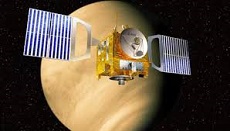
On May 20, 2010 the Japanese Akatsuki (Jap. "dawn") (Venus Climate Orbiter) (Planet-C) space probe is launched; too bad, on Dec. 6 it fails to enter Venus orbit, and goes into orbit around the Sun until Dec. 7, 2015, when engineers place it into an alternative elliptical Venusian orbit using its attitude control thrusters.
On May 26, 2010 the NASA Stratospheric Observatory for Infrared Astronomy (SOFIA) makes its first flight.

On July 5, 2010 NASA chief #12 (July 17, 2009-) (first African-American) Charles Frank "Charlie" Bolden Jr. (1946-) utters the soundbyte to the Al-Jazeera network that Obama told him to reach out to the Muslim World and engage much more with dominantly Muslim nations to help them feel good about their "historic contribution to science and engineering", which after a brouhaha White House press secy. Robert Gibbs denies, even though he said the same thing on Feb. 16, but only mentioned Indonesia.
On Sept. 15, 2010 NASA launches ARTEMIS-P1, the first spacecraft to achieve a kidney-shaped Earth-Moon libation orbit around the L1 and L2 Lagrangian points.
On Dec. 6, 2010 NASA ejects NanoSail-D from the Fast, Affordable, Science and Technology Satellite (FASTSAT), becoming the first nanosatellite (cubesat) successfully ejected from a free-flying microsatellite.
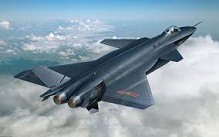
On Jan. 11, 2011 the Chinese twin-jet 1.5K mph highly maneuverable Chengdu J-20 5th generation stealth fighter makes its first flight, going on to replace the Russian S-35 in ? after its WS-10 turbofan is successfully cloned; the test catches the U.S. off-guard again; it is based on pieces of a wrecked USAF F-117 Nighthawk downed by the Serbs in 1999?
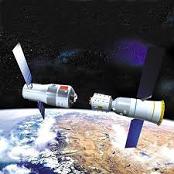
On Mar. 18, 2011 NASA's New Horizons Pluto probe crosses the orbit of Uranus; meanwhile NASA's MESSENGER spacecraft begins orbiting Mercury. On Apr. 8 NASA astronaut Cady Coleman aboard the Internat. Space Station performs the first Space-Earth flute duet with Ian Anderson of Jethro Tull. On Apr. 12 the 50th anniv. of first astronaut in space Yuri Gagarin causes Russian pres. Dmitri Medvedev to gush. On May 16 Space Shuttle Endeavour, takes off from Cape Canaveral carrying cmdr. Mark Kelly, hubby of wounded Ariz. rep. Gabrielle Giffords, who was shot in the head on Jan. 8 and attends the launch; on May 18 it docks with the ISS, attacking the Alpha Magnetic Spectrometer to it on May 19; after landing on July 1 at 2:35 a.m. EST, it is decomissioned and sent to a museum in Los Angeles, Calif., leaving only Space Ship Atlantis, which makes its final trip, STS-135 on July 8-21, ending the U.S. Space Shuttle program. On Aug. 5 the NASA Lockheed Martin Juno spacecraft is launched from Cape Canaveral on a 5-year 1.74B mi. cruise to Jupiter, arriving on July 5, 2016 to measure its composition from a close orbit 4K km. above the surface; in Feb. 2, 2018 after 37 orbits it burns up in Jupiter's atmosphere, er, its mission is extended until July 2021. On Aug. 14 Pakistan launches its first comm satellite from a facility in China. On Sept. 29 China launches the unmanned 8.5 ton Tangong-1 ("Heavenly Palace") space station. In Sept. NASA implements no-fly zones on the Moon to protect Apollo historical sites - keep the coverup going?
On Oct. 21, 2011 the first manned flight of an electric multicopter takes place in Germany.
On Oct. 22, 2011 a Tandem twin-baloon airship operated by JP Aerospace of Calif. sets a record 95,085 ft. (28,982m) for highest airship flight, almost 4 mi. higher than before.
On Oct. 31, 2011 China's unmanned Shenzhou 8 blasts off on a Long March 2F rocket from Jiuquan Launch Center, docking with the Tiangong 1 space module (launched Sept. 29) on Nov. 3 and Nov. 14, becoming the first unmanned Chinese docking, becoming the 3rd country after the Soviet Union (Russia), Japan, and the European Space Agency.
In Mar. 2012 an Atlantic Southeast Airlines flight becomes the first with an all female African-Am. flight crew.
On May 25, 2012 (12:02 p.m. EDT) the unmanned SpaceX Dragon becomes the first commercial spacecraft to dock with the Internat. Space Station (ISS).
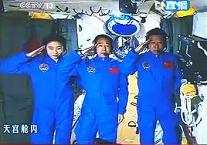
On June 16, 2012 the Chinese Shenzhou 9 spacecraft blasts off from Jiuquan Launch Center, carrying Jing Haipeng (1966-), Liu Wang (1969-), and Liu Yang (1978-) (first Chinese female astronaut), returning on June 29.
On Jan. 5, 2013 India launches the Geosynchronous Satellite Launch Vehicle (GSLV-D5) from the space port at Sriharikota in coastal Andhra Pradesh.
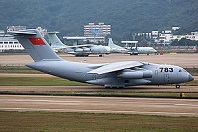
On Jan. 26, 2013 the Chinese Xian Y-20 "Chubby Girl" strategic military transport aircraft makes its first flight, going into service on Dec. 26, 2015; by 2016 1K are planned.
In Mar. 2013 the NASA Messenger spacecraft makes the first complete map of Mercury.
On Apr. 15, 2013 the first NASA Hawaii Space Exploration Analog and Simulation (HI-SEAS) mission begins, with eight food scientists staying on Mauna Loa in Hawaii (alt. 8.2K ft. or 2.5km) for 120 days (until Aug. 13, 2013) in a Mars-like environment; HI-SEAS II sees six people try it from Mar. 28, 2014-July 25, 2014; HI-SEAS III sees six people try it from Oct. 15, 2014-June 13, 2015; HI-SEAS IV runs from Aug. 29, 2015 to Aug. 28, 2016; HI-SEAS V runs from Jan. 19, 2017-Sept. 18, 2017; HI-SEAS VI in 2018.
On May 3-July 6, 2013 the Solar Impulse by Swiss designers Bertrand Piccard and Andre Borschberg makes the first solar-powered airplane flight across the U.S. from San Francisco, Calif. to Washington, D.C. in 105 hours 41 min. (33.14 mph avg.).
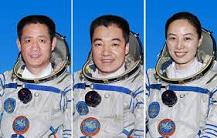
On June 11, 2013 the Chinese Shenzhou 10 spacecraft takes off on a Long March 2F rocket from Jiuquan Launch Center, carrying Nie Haisheng (1964-), Zhang Ziaoguang (1966-), and Capt. Wang Yaping (1978-) (2nd Chinese woman in space), docking with the Tiangong-1 space lab module on June 13 and returning on June 26.
On Sept. 16-20, 2013 the Workshop on Human Space Technology is organized by the China Manned Space Agency and U.N. Office for Outer Space Affairs.
On Oct. 14, 2013 TLW pub. the NASA Knowledge Ark Project proposal, calling for NASA to change its basic mission to preserving all human knowledge via a self-sustaining system in space that can survive a nuclear Armageddon then download the knowledge one day when humanity is ready; it gets only 1.4K views by Sept. 16, 2015, some from NASA, Congress, etc., but also many from Russia and China, gulp.
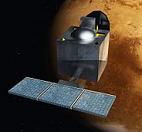
On Nov. 5, 2013 the Indian Space Research Org. (ISRO) Mangalyaan (Sansk. "Mars craft") Mars Orbiter Mission (MOM) is launched, attaining Mars orbit on Sept. 24, 2014, becoming the 4th country after the Soviet Union, U.S., and European Space Agency, and first Asian, as well as the first to do it on the first attempt; on Sept. 24, 2014 it enters Mars orbit, making India the first Asian country to reach Mars.
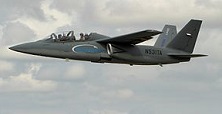
On Dec. 12, 2013 the ridiculously cheap $20M Textron AirLand Scorpion light recon fighter jet is first flown secretly, being touted as "the world's most affordable tactical jet aircraft."
In 2013 the Boeing 787 Battery Scandal sees mercury batteries in new Boeing 787 jets catch fire, causing orders to plummet.
In 2013 the infrared James Webb Space Telescope (formerly the Next Generation Space Telescope) is launched by NASA as a successor to the Hubble Space Telescope; er, after massive cost overruns it is launched in Oct. 2018; it incl. the daisy-shaped star shade to fly 15K mi. ahead of it and block light to allow distant planets to be searched for.
In 2013 the Boeing 787 Battery Scandal sees mercury batteries new Boeing 787 jets catch fire, causing orders to plummet.
In 2013 Turkey launches its Gotkturk spy satellite, its first, pissing-off Israel.
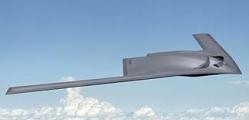
On July 9, 2014 the U.S. Air Force issues a request for proposal for the $550M Long Range Strike Bomber (LRS-B) nuclear-capable heavy payload strategic stealth aircraft, giving the U.S. the capability of striking deep inside China or Russia for the first time since the B-17; 80-100 are planned; on Oct. 28, 2015 the $80B contract is awarded to Northrop Grumman, beating out the team of Boeing and Lockheed-Martin.
On Oct. 23, 2014 China launches the Chang'e 5 T1 lunar probe, which returns on Oct. 31.
On Dec. 5, 2014 the NASA Orion Multi-Purpose Crew Vehicle (MPCV) makes its first flight atop a Delta IV Heavy rocky, er, rocket; too bad, massive cost overruns delay the first mission until 2023?
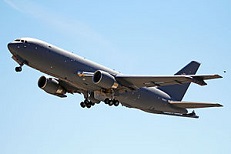
On Sept. 25, 2015 the $188M Boeing KC-46 Pegasus military aerial refueling and strategic military transport aircraft makes its first flight.
On Oct. 29, 2015 Sikorsky successfully tests its first robotic self-flying U.S. Army UH-60A Black Hawk heli at its development center in West Palm Beach, Fla.
On Dec. 22, 2015 (night) the 23-story-tall SpaceX Falcon-9 spacecraft takes off from Cape Canaveral, Fla., reaching an alt. of 125 mi. (200km) and sending 11 satellites into orbit before making an upright landing, becoming a first.
In 2015 Deep Space Industries launches its first small prospector mission to mine asteroids.
On Jan. 13, 2016 (2:00 p.m. EST) NASA's Juno spacecraft sets a record for the most distant solar-powered vehicle from the Sun, 493M mi., passing the European Space Agency's Rosetta spacecraft, which peaked at 492M mi. in Oct. 2012 en route to Comet 67P/Churyumov-Gerasimenko. On Feb. 8 the Internat. Civil Aviation Org. (ICAO) proposes draft rules for greenhouse gas emissions for most commercial and business aircraft, requiring minimal changes to aviation design until 2028. On Feb. 19 Virgin Galactic unveils their Unity spaceship for space tourism, touting it as the future of private space travel for ordinary citizens, who will get to float at 50 mi. alt. for a mere $250K; 700 have aleady put down deposits. On July 5 NASA's Juno spacecraft successfully enters Jupiter's orbit. In July the Airbus E-Fan 1.2 electric hybrid experimental airliner debuts at the AirVenture air show; too bad, the FAA won't allow it to fly. In early Aug. Moon Express is granted approval to send a lunar lander to the Moon, becoming the first private co. On Sept. 1 a SpaceX Falcon 9 rocket carrying a Facebook satellite intended to bring the Internet to remote areas in Africa explodes on the launch pad during fueling. On Sept. 8 (23:05 GMT) the $800M NASA Lockheed-Martin OSIRIS-Rex (Origins, Spectral Instrumentation, Resources Identification, and Security-Regolith Explorer) spacecraft launches from Cape Canaveral on a mission to the Bennu asteroid to retrieve 60g of surface material by 2023, becoming the first NASA mission to a near-Earth asteroid to collect samples. On Nov. 19 NASA launches the GOES-R Weather Satellite, which promises to revolutionize forecasting with continuous high-definition views of storms over the Western Hemisphere. In 2016 China's Commerical Aircraft Corp. begins producing the 156-seat C919 to compete with the Boeing 737 and Airbus A320.
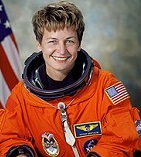
On Jan. 13, 2017 after the Chinese Lunar Rover produces no evidence of Apollo Moon landings, 200 officials of the Chinese Space Program pub. a petition in the Beijing Daily Express asking NASA for an explanation. On Mar. 30 Am. astronaut Peggy Annette Whitson (1960-) goes on a spacewalk outside the ISS, setting the record for most spacewalks (8) and most cumulative time by a woman (53 hours 22 min.), also becoming the first woman astronaut to command the ISS 2x. On June 29 (9:11 a.m.) Kentucky Fried Chicken launches a spicy crispy Zinger chicken sandwich into the stratosphere on a high-alt. balloon, where it stays at an alt. of 50K-80K ft. for four days.
In 2017 the Airbus CityAirbus flying taxi makes its test flight, eventually ferrying passengers with a robot pilot.
On Mar. 22, 2018 Air India takes off from New Delhi, India and lands in Tel Aviv, Israel after becoming the first flight allowed to fly over Saudi Arabia. On May 5 NASA's InSight (Interior Exploration using Seismic Investigations, Geodesy and Heat Transport robot scientific explorer is launched to probe beneath the surface of Mars, landing on Elysium Planitia on Nov. 26 after a 300M mi. journey; it immediately lays a German flag beach towel on Mars' surface to claim it for Germany for donating equipment to test Mars' temp 5m below the surface :) On Aug. 12 (3:31 a.m. EDT) the NASA Parker Solar Probe launches, with the mission of flying within 4M mi. of the surface of the Sun, closest so far, carrying the FIELDS instruments to attempt to measure the corona and solar wind. On Aug. 21 Iran unveils its first domestically-produced fighter jet, the Kowsar, with Iranian pres. Hassan Rouhani sitting in the cockpit. On Aug. 22 the Atmospheric Dynamics Mission Aeolus (ADM Aeolus Earth observation satellite is launched by Airbus Defence and Space of the European Space Agency, becoming the first satellite capable of global wind-component-profile observation using laser doppler to improve weather forecasting, with a range from the surface of Earth into the stratosphere (30km). On Sept. 2 the Perlan 2 glider reaches a world record 76,100 ft. over the El Calafate region of S Argentina. In Oct. the infrared James Webb Space Telescope (formerly the Next Generation Space Telescope) is launched by NASA as a successor to the Hubble Space Telescope; it incl. the daisy-shaped star shade to fly 15K mi. ahead of it and block light to allow distant planets to be searched for. Am. billionaire engineer Dennis Anthony Tito (1940-) puts his Feb. 2013 plan to send two civilians to Mars by this year on hold for lack of funding from NASA. Lightweight solar sail craft leave the solar system? Russia sends its first manned space flight from it soil? Richard Branson's Virgin Group and Qualcomm launch the $1.5B-$2B OneWeb high-speed space-based Internet with 700 330 lb. satellites, with 200 kept on the ground for backup. Skynet betrays the humans who built it and takes control, starting a nuclear war and attempting to extinguish humanity - The Terminator movie series.
On Jan. 1, 2019 the unmanned NASA New Horizons space probe (launched Jan. 19, 2006) makes a close approach to the Kuiper belt object 2014 MU69 AKA Ultima Thule 4B mi. from Earth and 1B mi. beyond Pluto.
On Jan. 3, 2019 (10:26 a.m. BJT) the Chinese Chang'e-4 spacecraft lands in Van Karman Crater on the South Pole-Aitken Basin on the dark (far) side of the Moon, becoming a first.
On Apr. 9, 2019 a Japanese F-35A fighter jet crashes into the sea off Aomori Prefecture, becoming the first known F-35A crash.
On Sept. 25, 2019 $63B Beijing Daxing Internat. Airport (AKA Starfish) 29 mi. S of Tiananmen Square on the border of Beijing and Langfang, Hebei Province opens, becoming Beijing's 2nd largest airport, with its 11M sq. ft. terminal becoming the largest single-structure terminal on earth, sitting on 18 sq. mi. of land, making it the world's largest airport (until ?).
On Oct. 18, 2019 (Fri.) the all-female spacewalk is completed by NASA astronauts Christina Koch and Jessica Meir; Pres. Trump phones them in space.
On Oct. 20, 2019 Australian airline Qantas completes a test-run of the longest nonstop commercial passenger flight on Earth, from New York to Sydney in a Boeing 787-9 with 49 aboard in 19 hours 16 min.
On Feb. 10, 2020 the European Space Agency (ESA) launches its Solar Orbiter (SolO), with a 7-year mission to investigate the Sun's uncharted polar regions and study how to predict solar weather.
On Feb. 26, 2020 the Northrop Grumman Mission Extension Vehicle-1 (MEV-1) successfully docks to the failing geosynchronous IntelSat 901 (IS-901) spacecraft to extend its life, becoming a first.
In July 2020 the NASA Mars 2020 mission is launched from Cape Canaveral, carrying the Chinese Mars Rover, carrying cameras and microphones to search for life, landing next Feb. and bringing back samples. In 2020 the European Space Agency Euclid spacecraft is launched to study dark energy and dark matter by measuring the acceleration of the Universe via galaxy redshift.
In June 2022 the European Space Agency (ESA) JUICE (Jupiter Icy Moons Explorer) spacecraft is launched to reach Jupiter in Oct. 2029 and carry out the most thorough exploration of Jupiter and its moons since NASA's Galileo mission in 1989-2003.
On Feb. 22, 2024 Houston, Tex. startup Intuitive Machines lands it Nova-C class lander Odysseus on the Moon, becoming the first U.S. Moon landing since Apollo 17 in 1972.
On June 2, 2024 the Chang'e-6 unmanned probe lands on the far (dark) side of the Moon to collect soil samples, making China the 4th nation to achieve a lunar landing after the U.S., Japan, and India; China announces plans for the Chang'e-7 to survey the S polar region of the Moon in 2026, followed by a manned lunar landing by 2030, and the Internat. internat. Lunar Research Station with 30+ countries by 2045 to serve as a springboard to Mars.
In 2025 NASA lands humans on an asteroid 5M mi. from Earth; the Van Allen radiation belt starts at 400 mi.
In 2025 the Russian Luna 25 (Luna-Glob) Lander lands on the Moon's S Pole, followed by Luna 26 in ? Luna 27 in ?, Luna 28 in ?, and Luna 29 in ?.
In 2025 the Russian Luna 27 mission sends a rover to the Moon to scout resources for a future colony; the European Space Agency (ESA) assists with the Pilot laser-guider for landing, a drill, and a pocket-sized lab for scooped-up material.